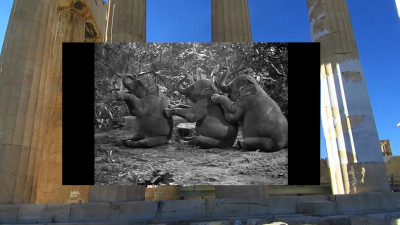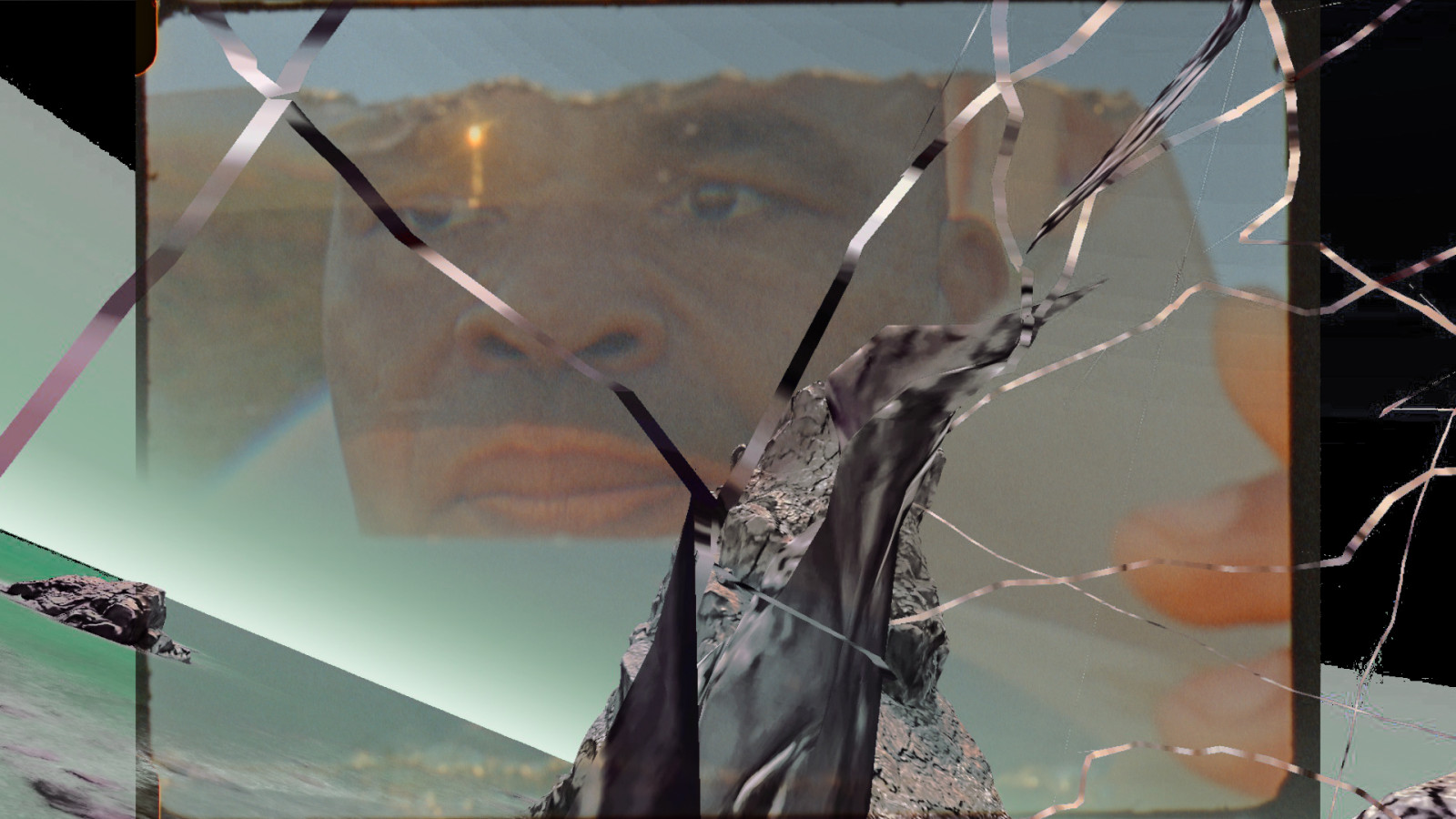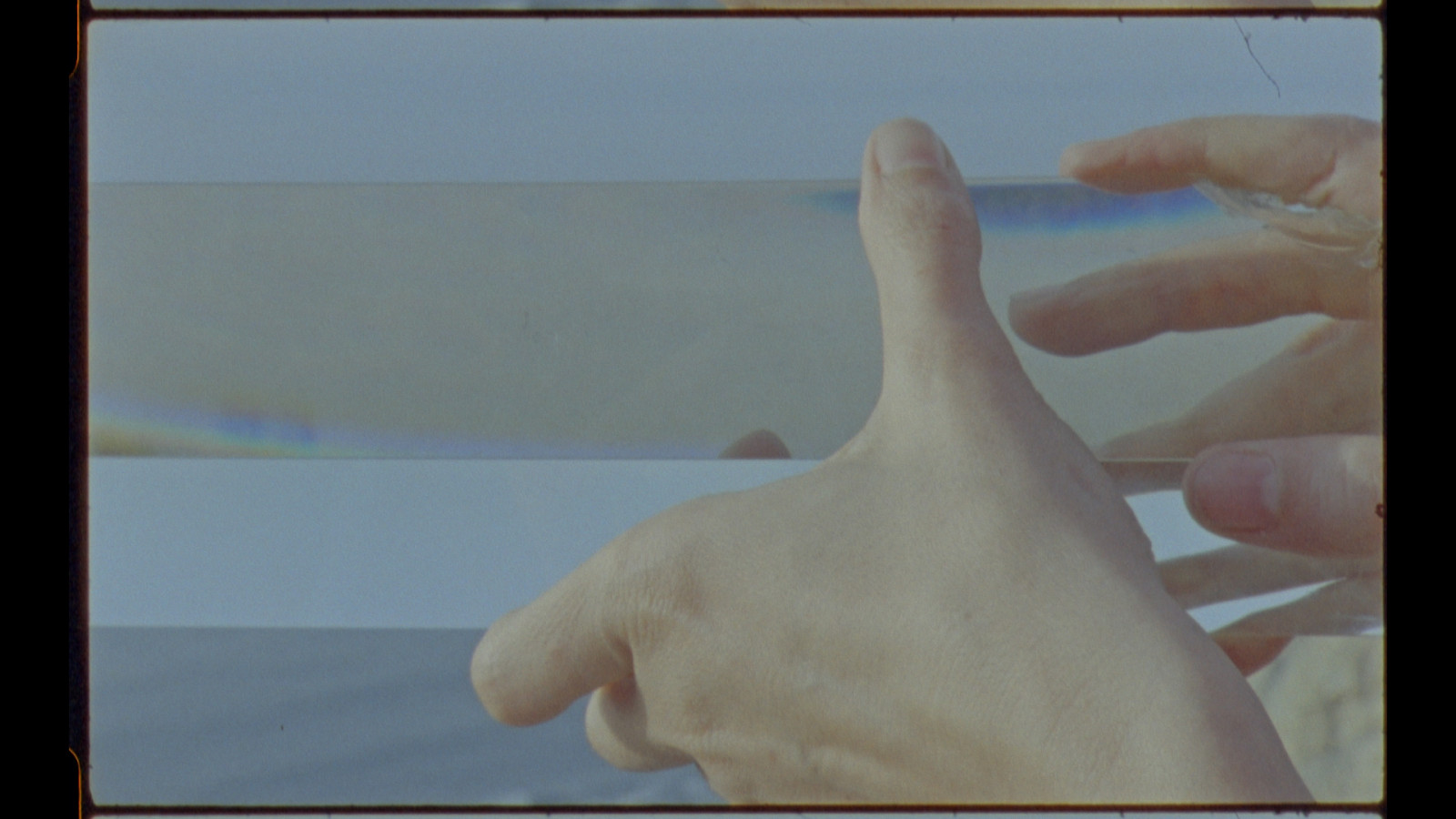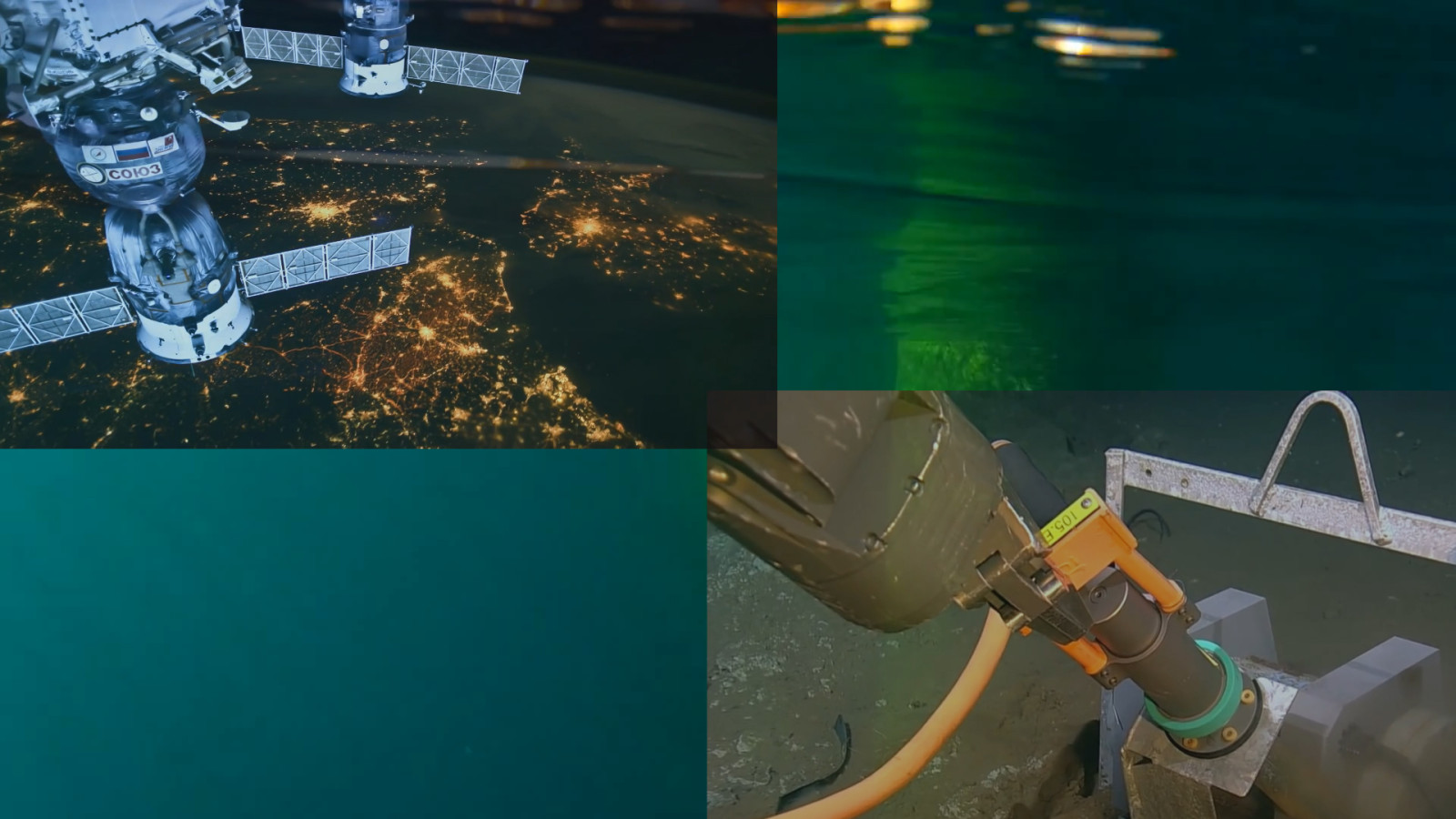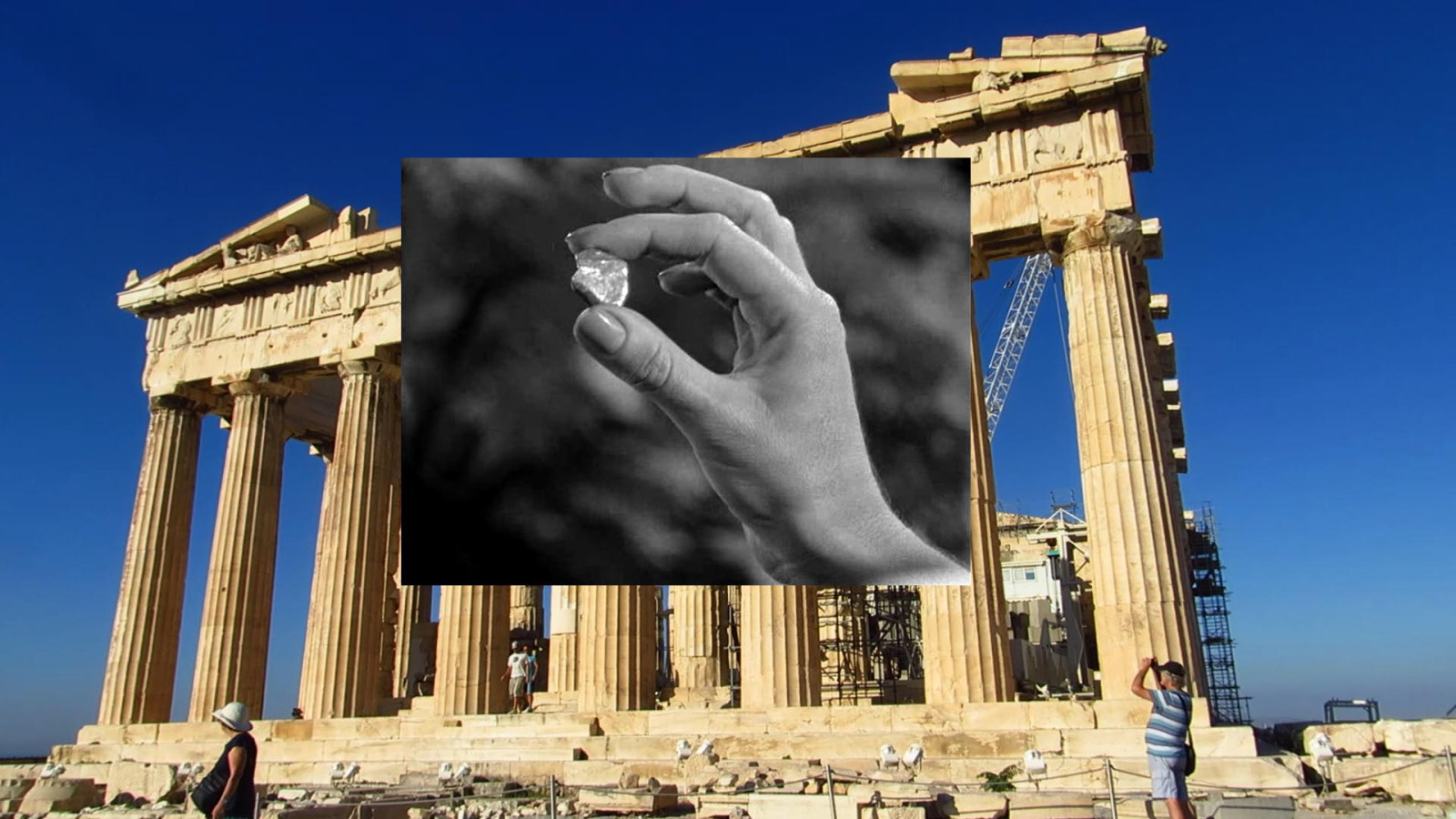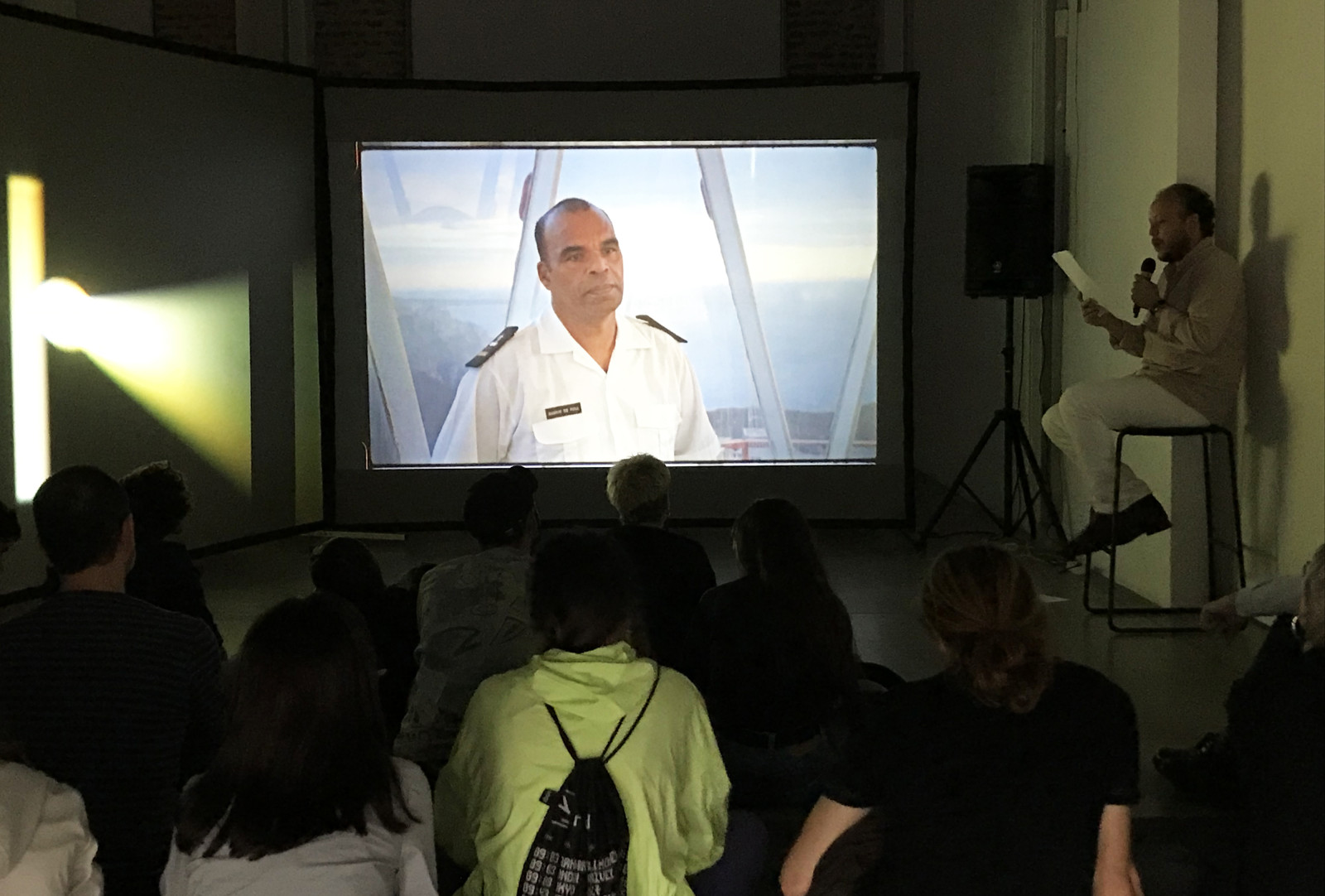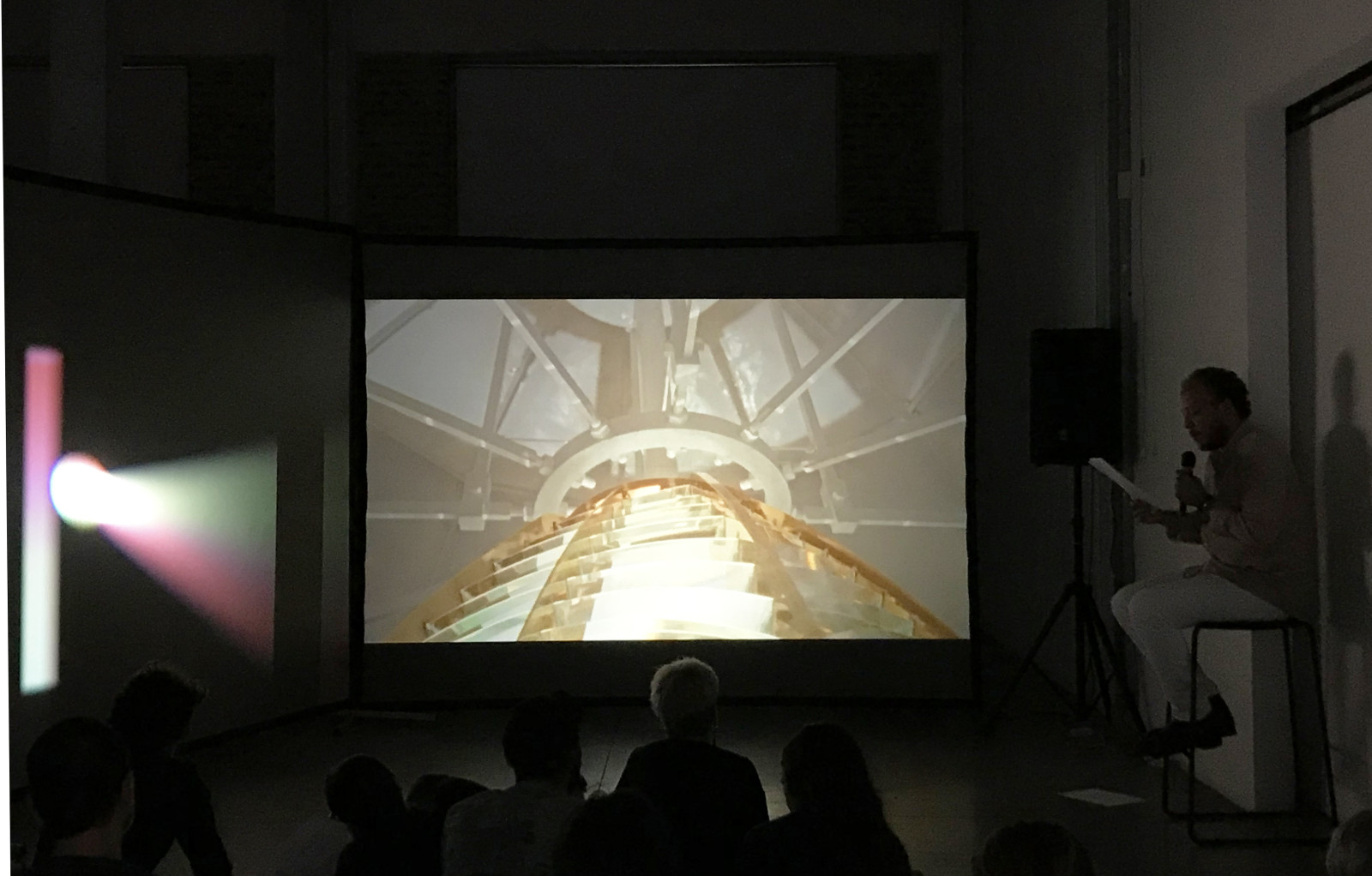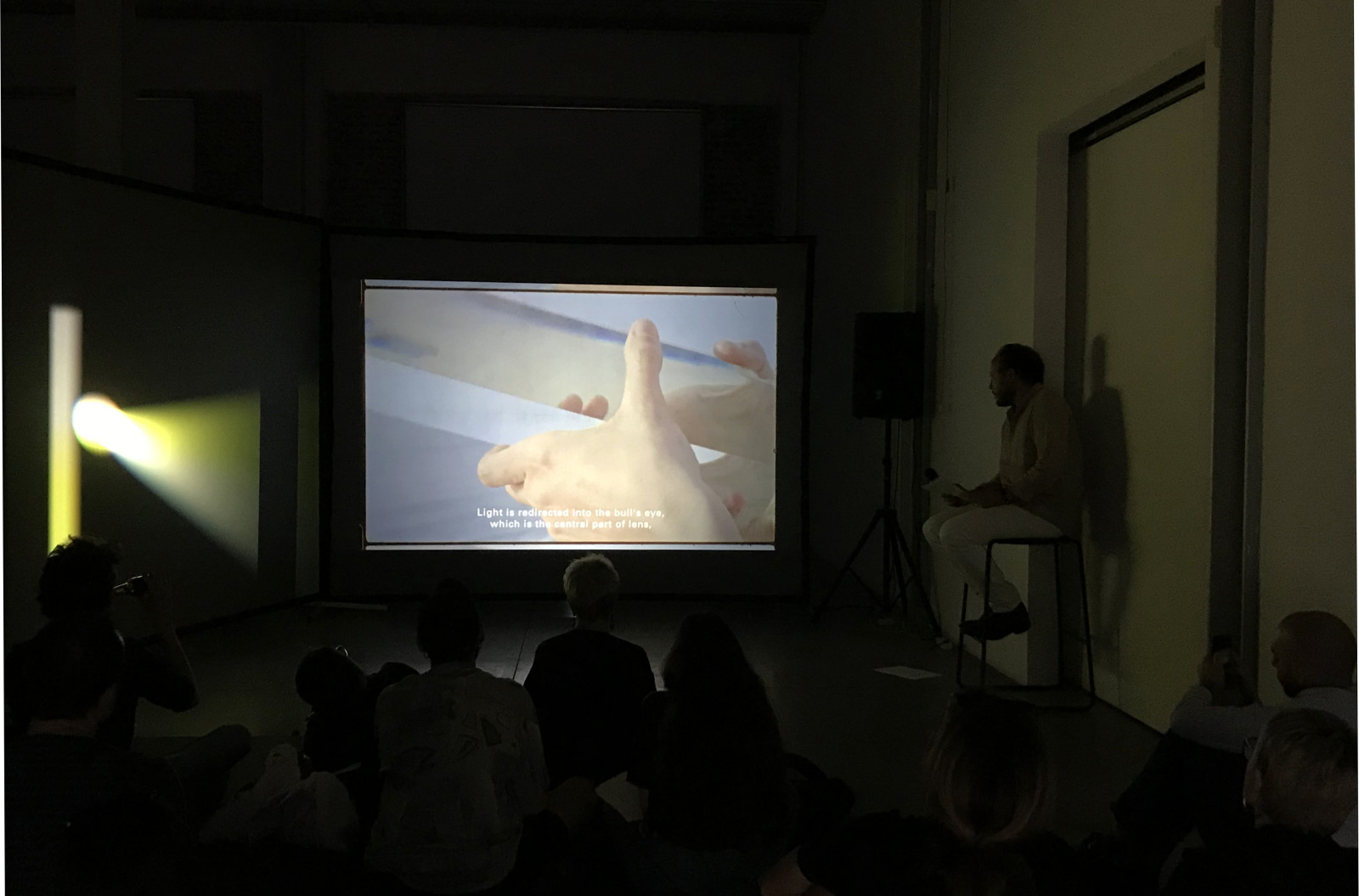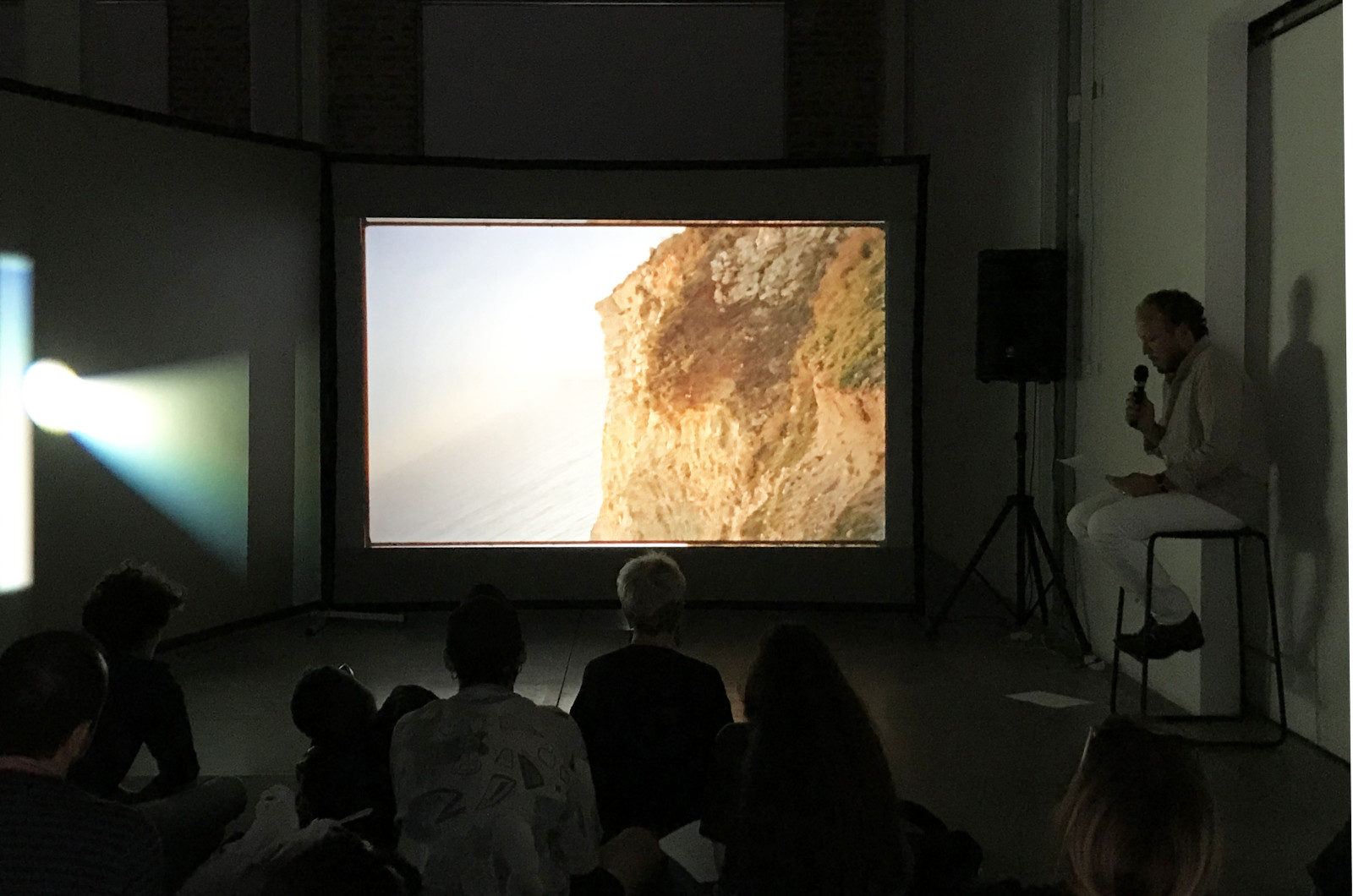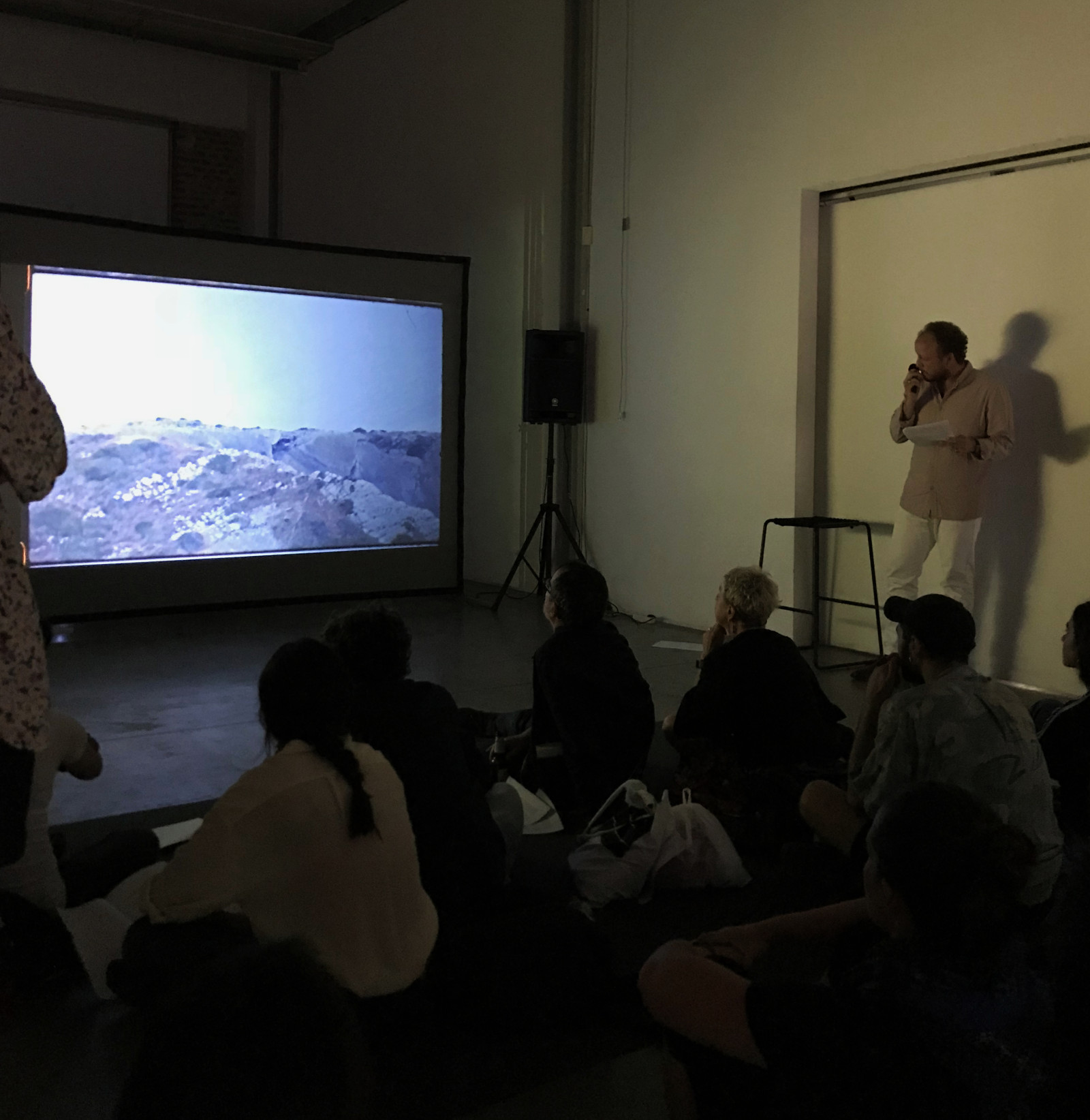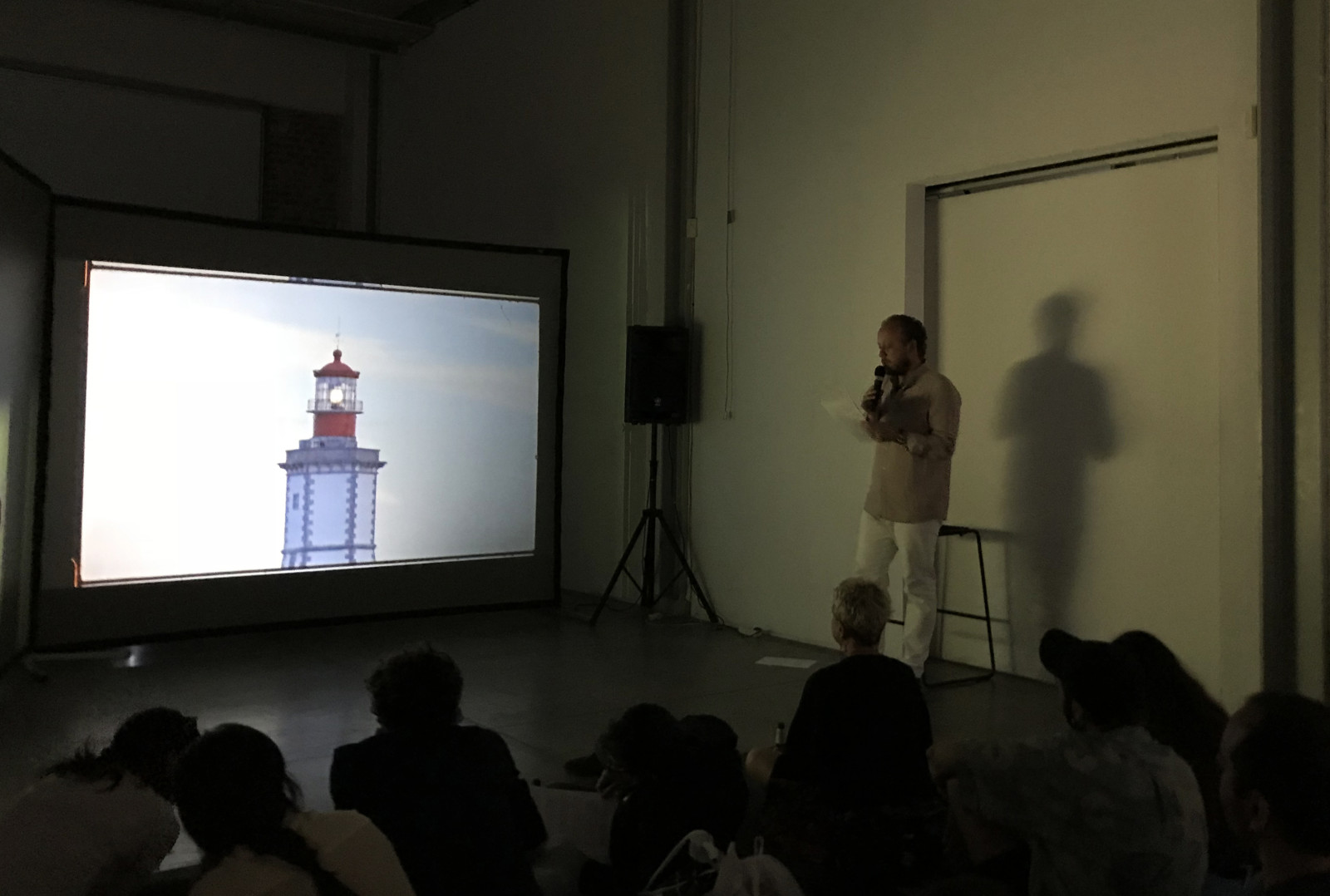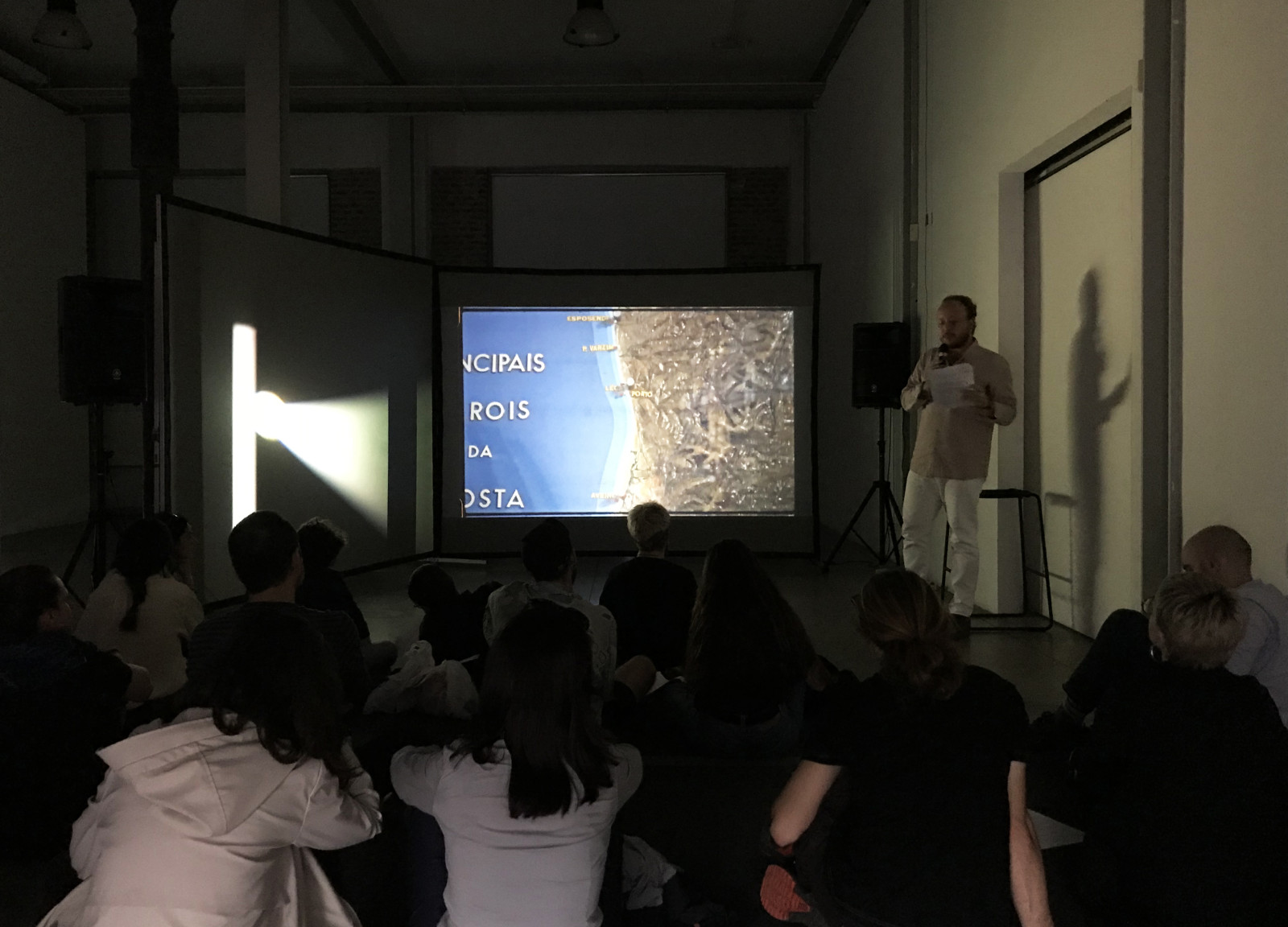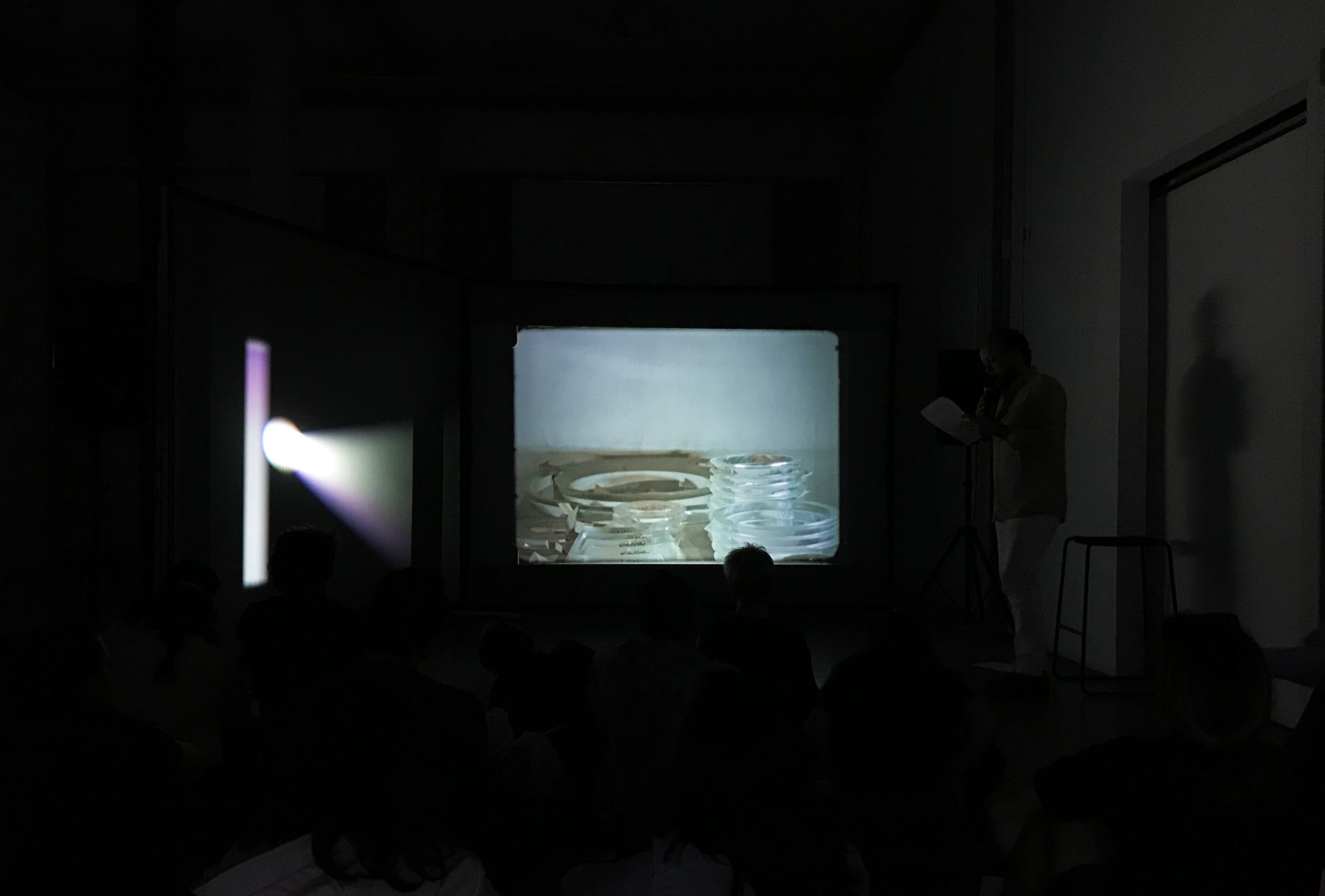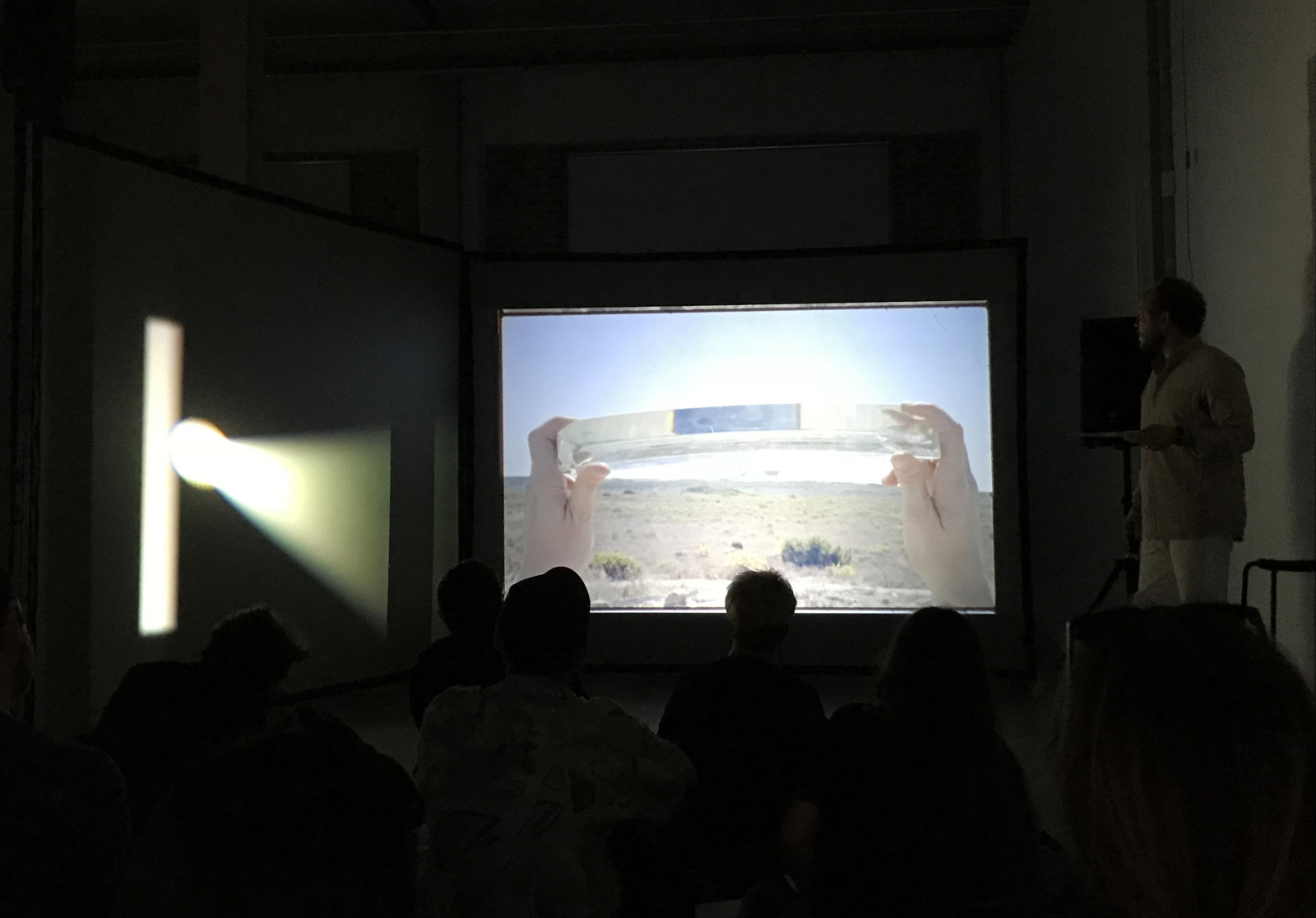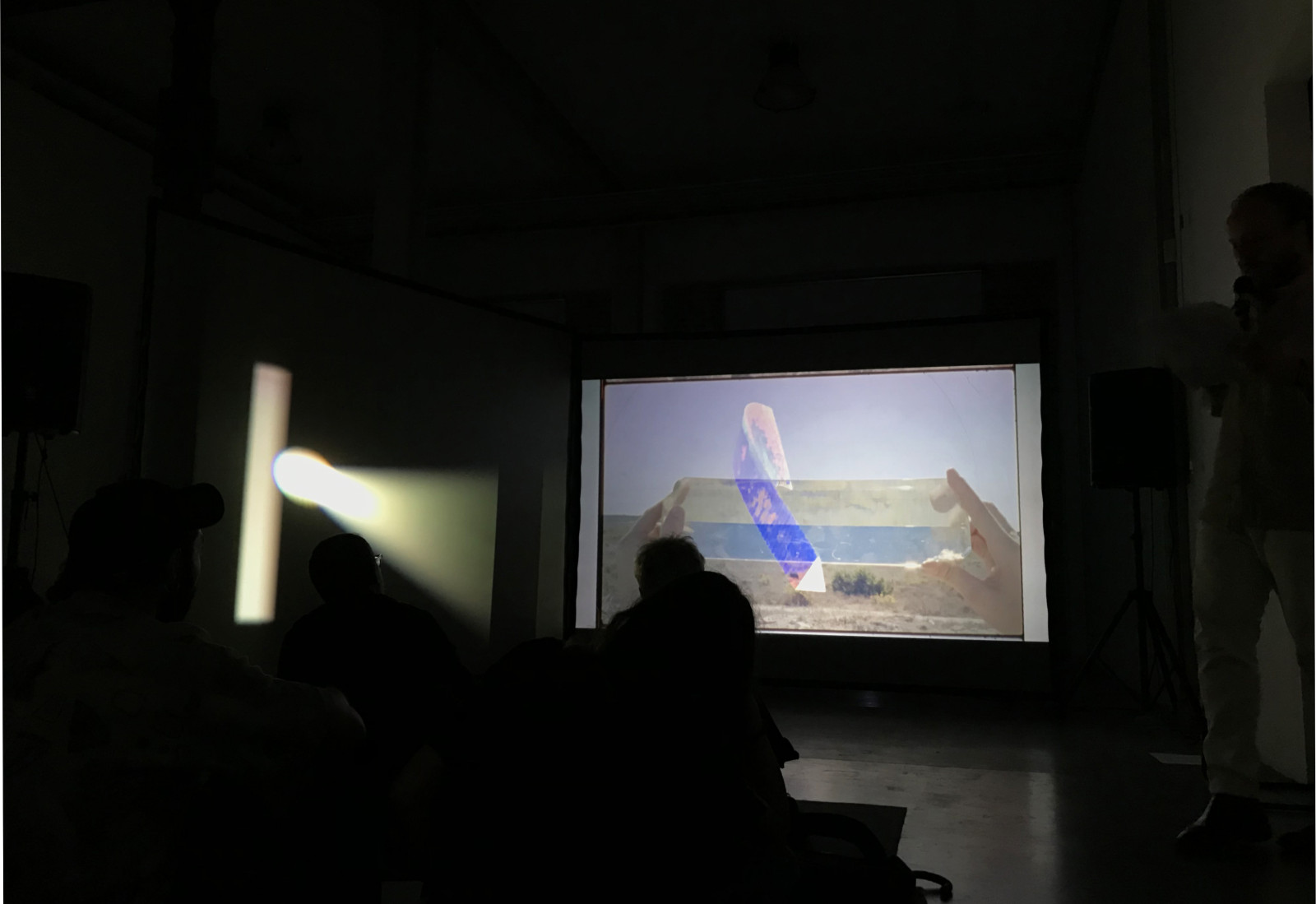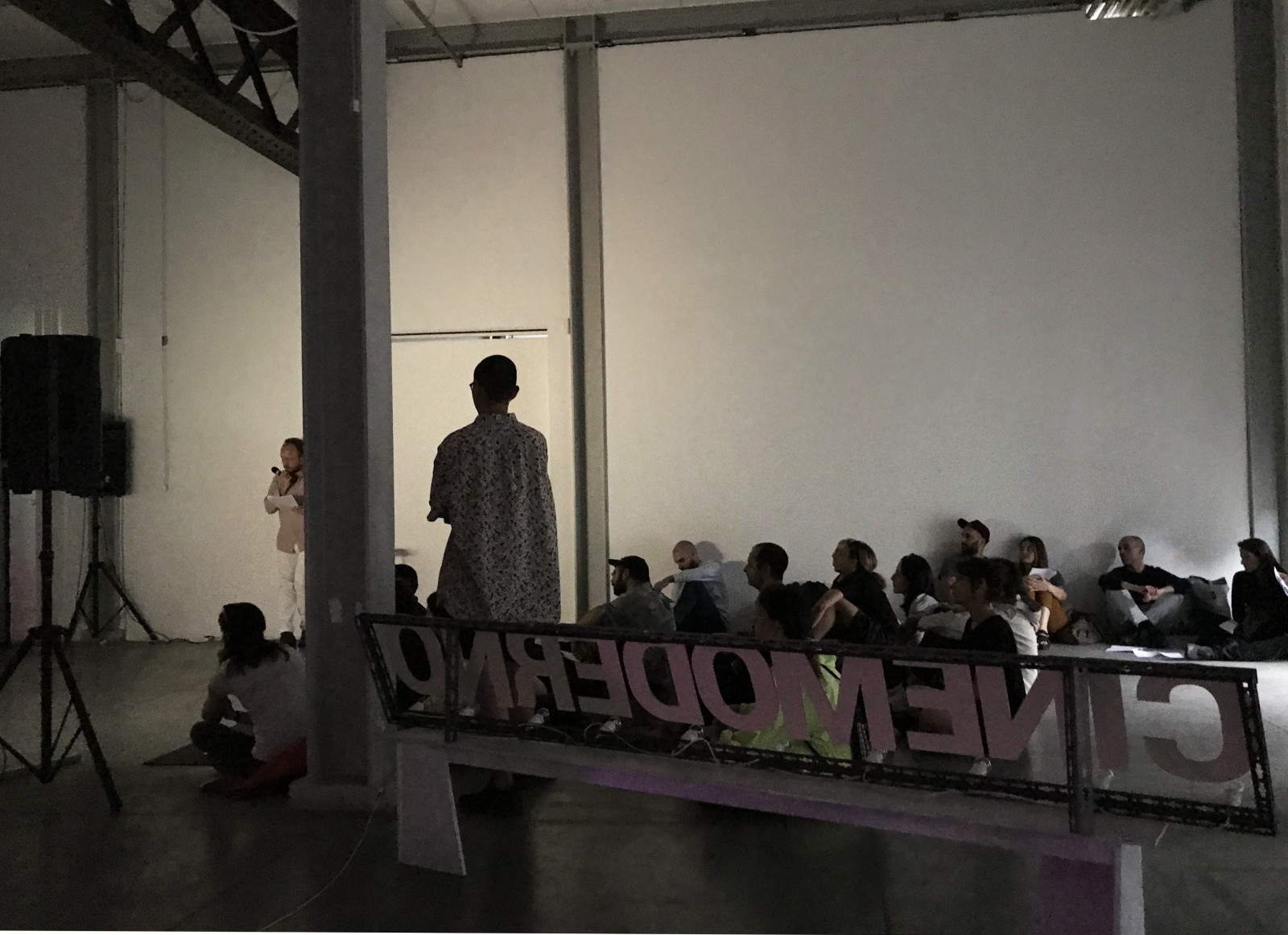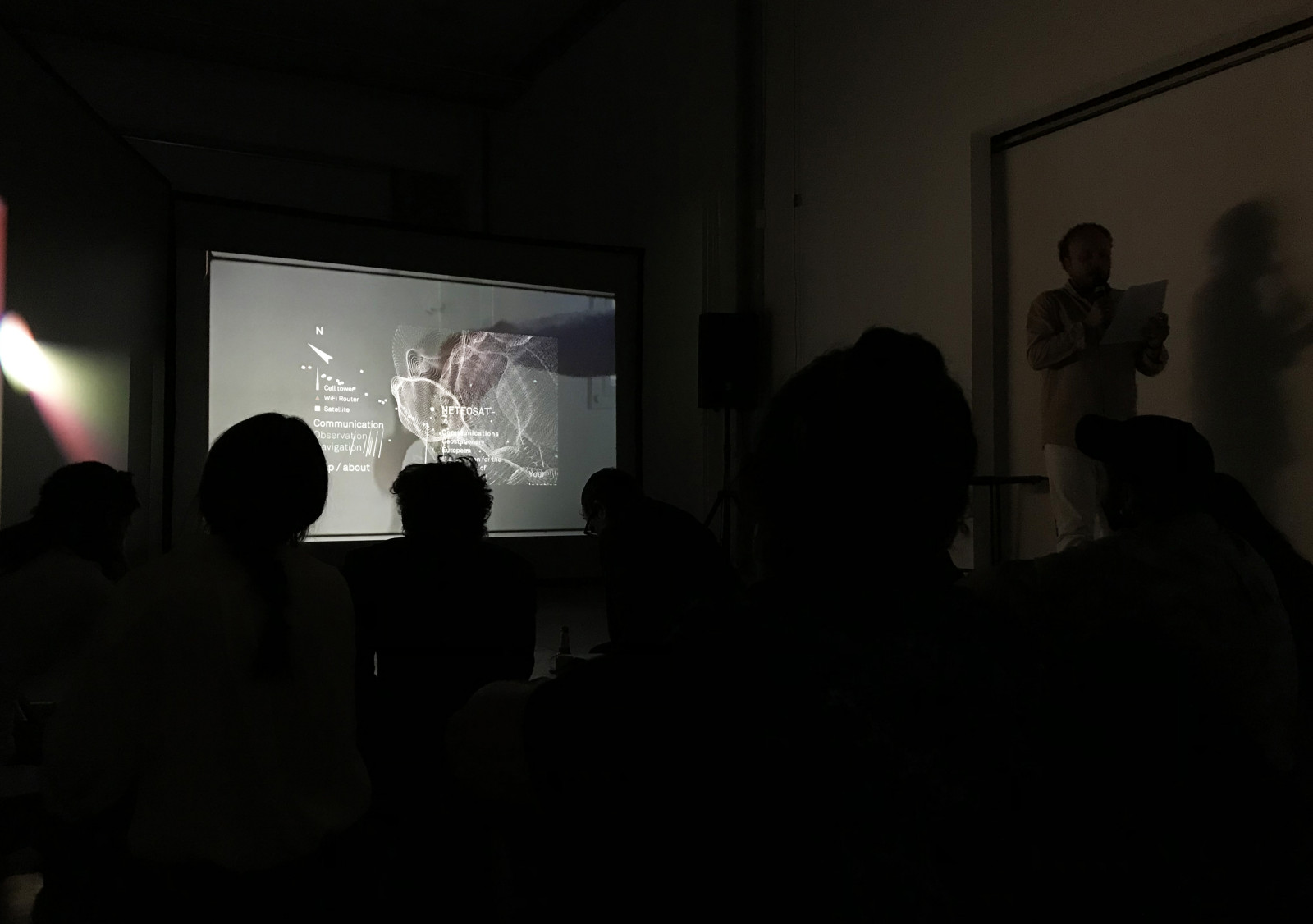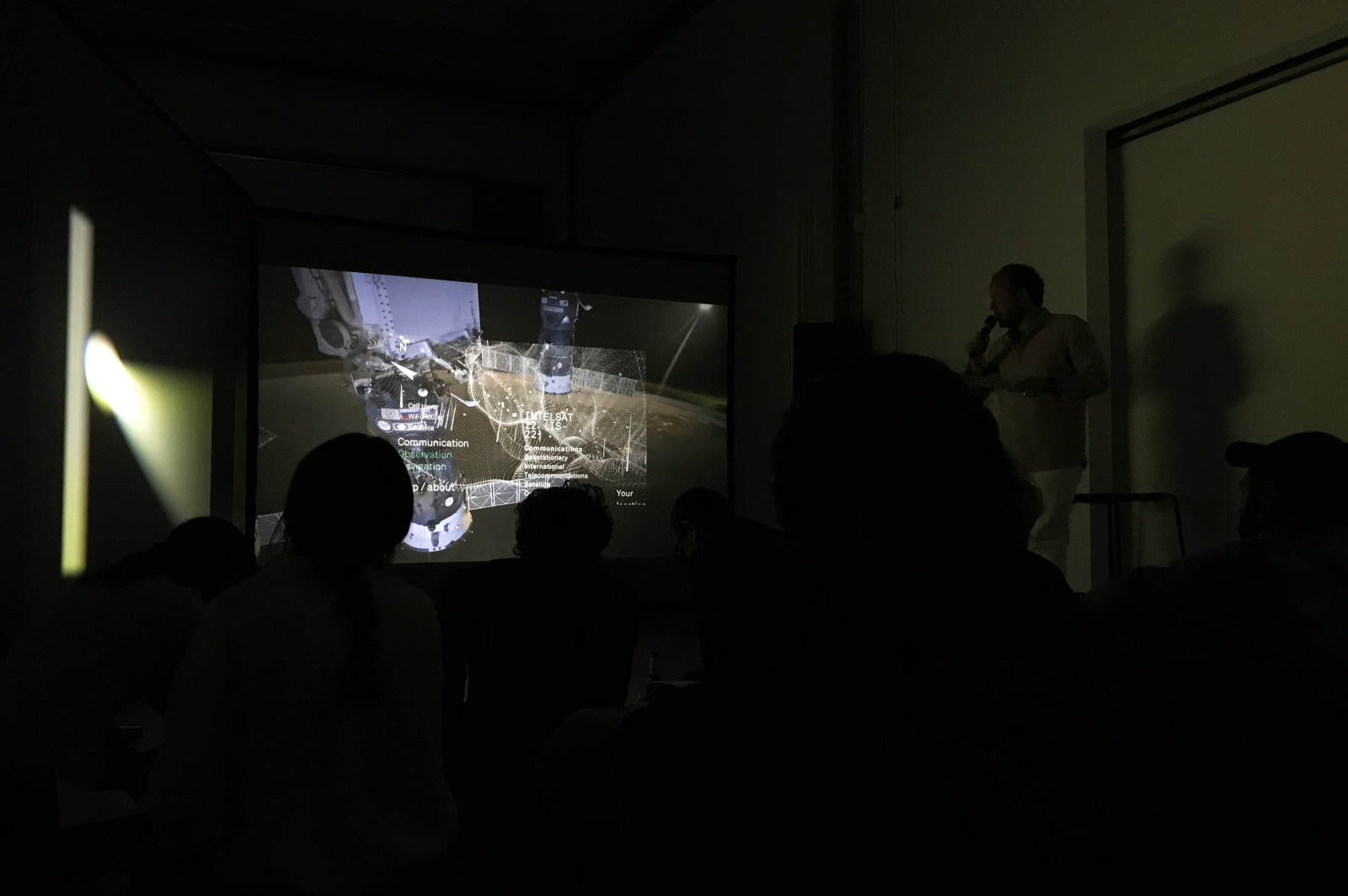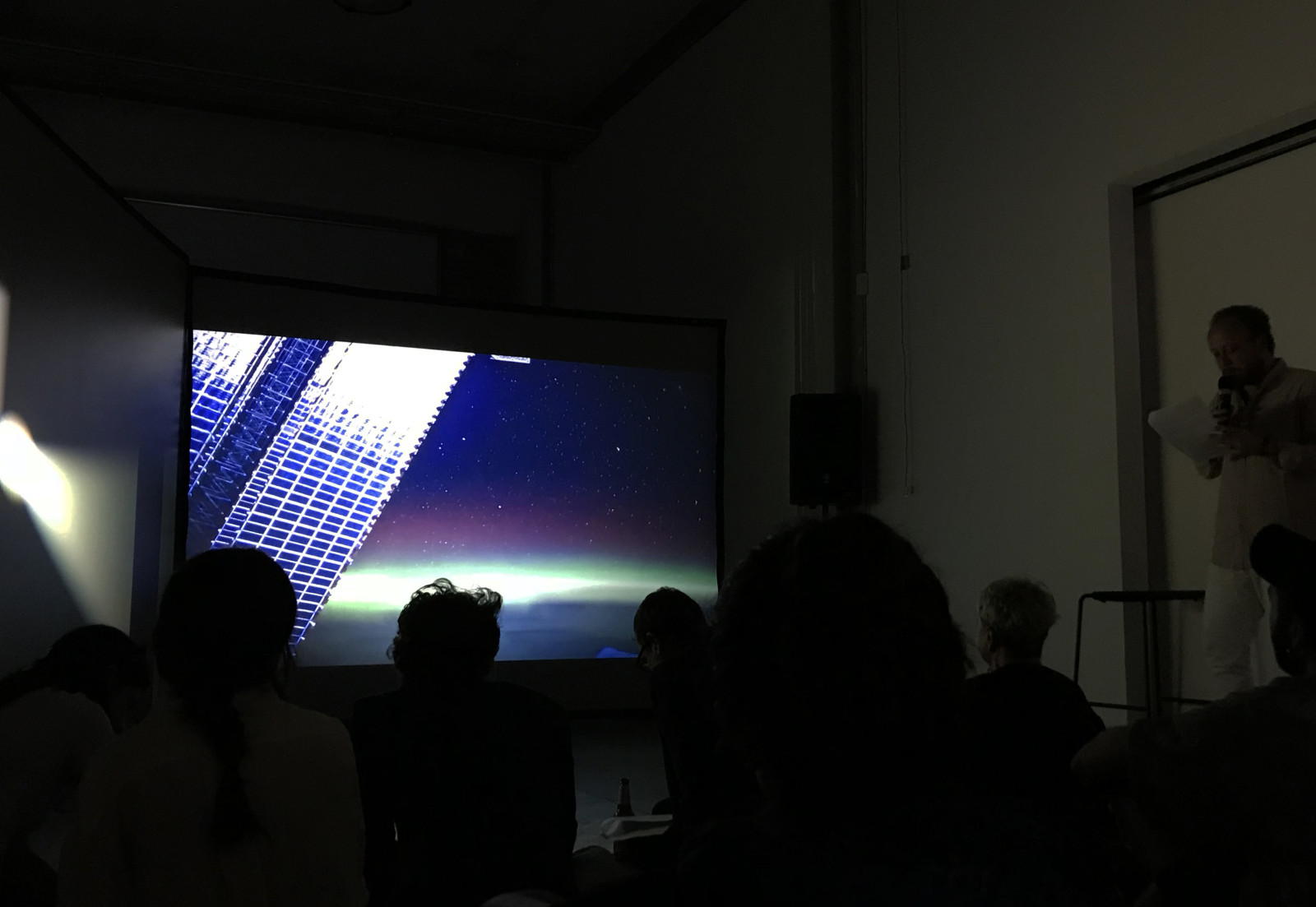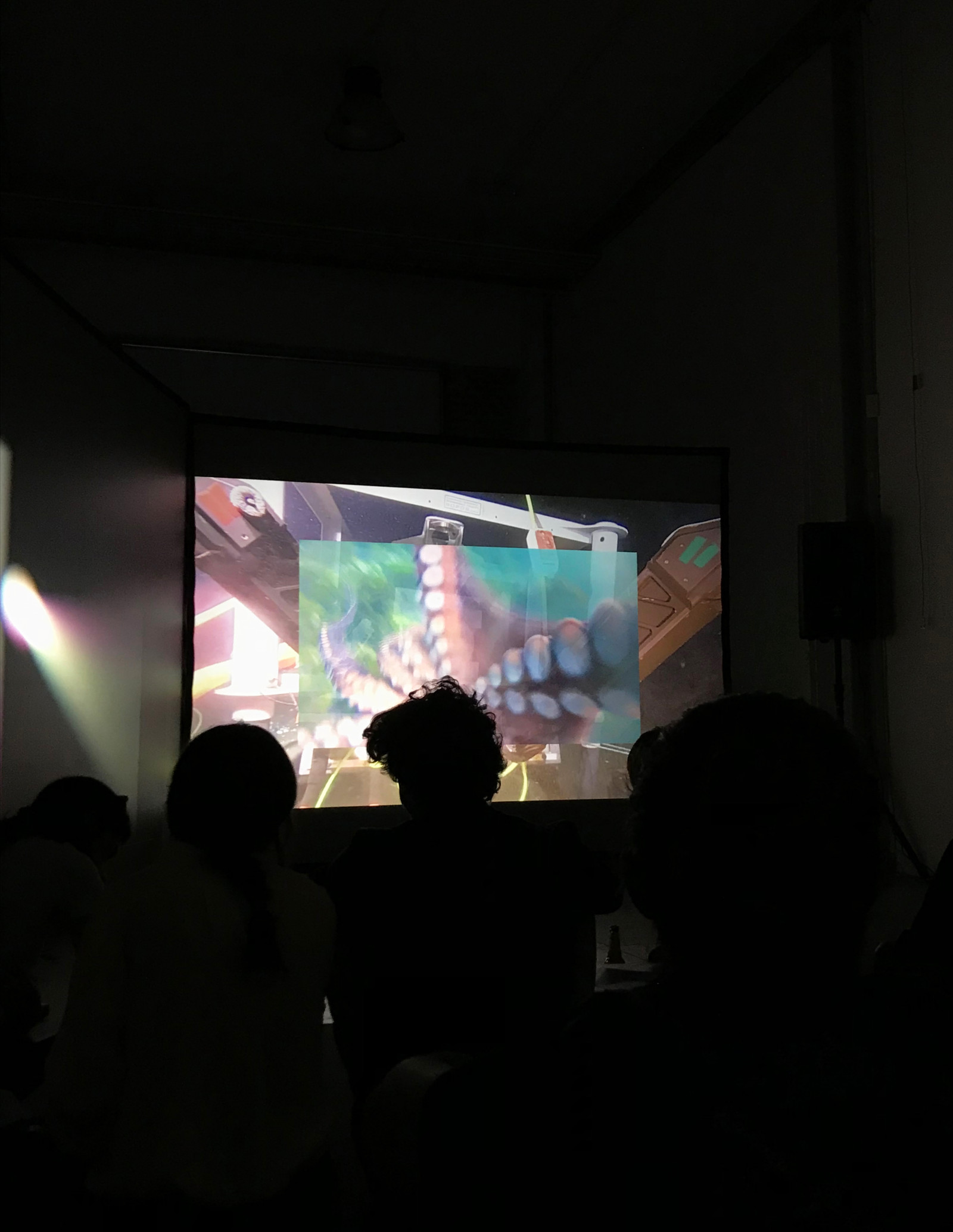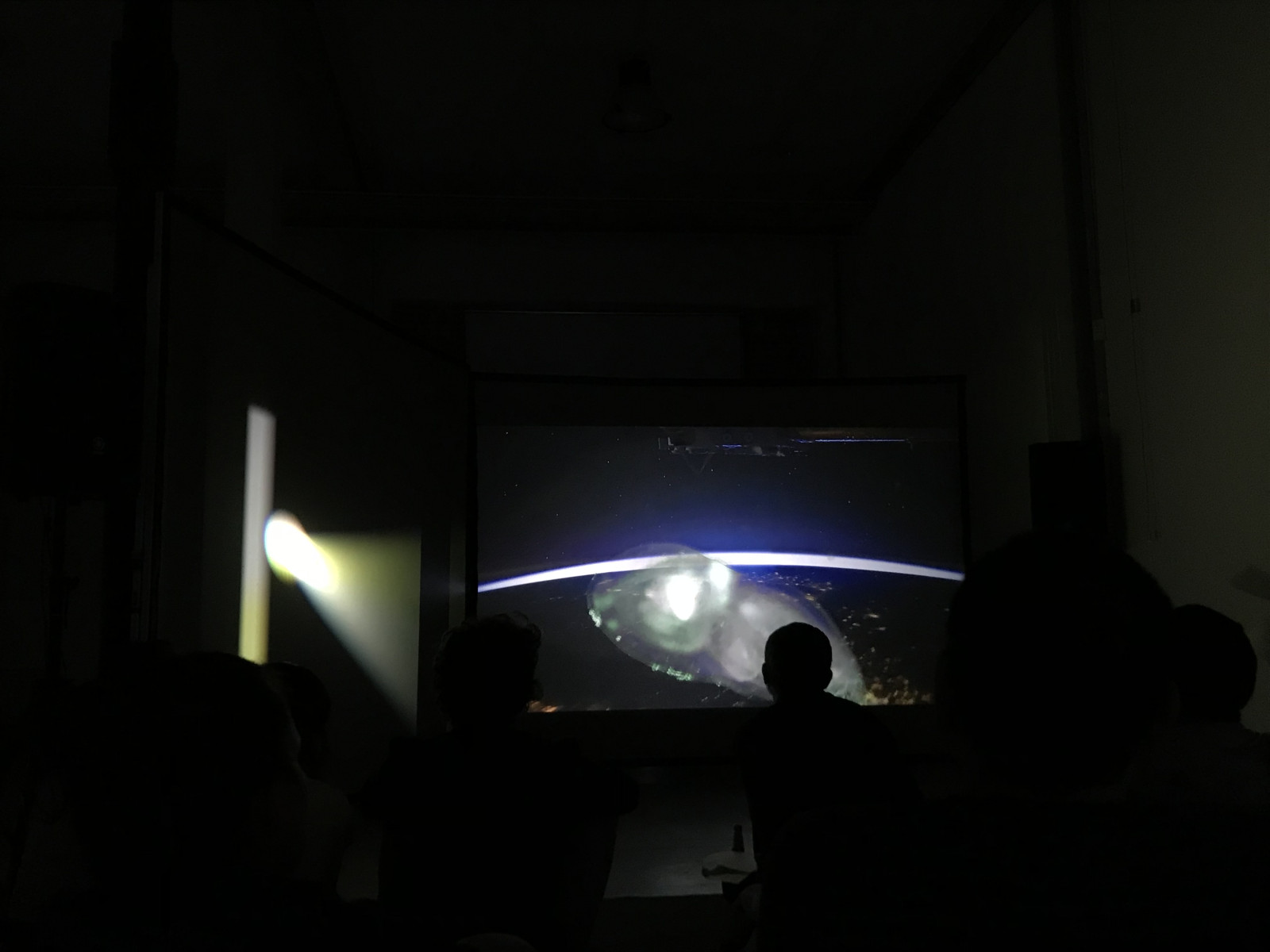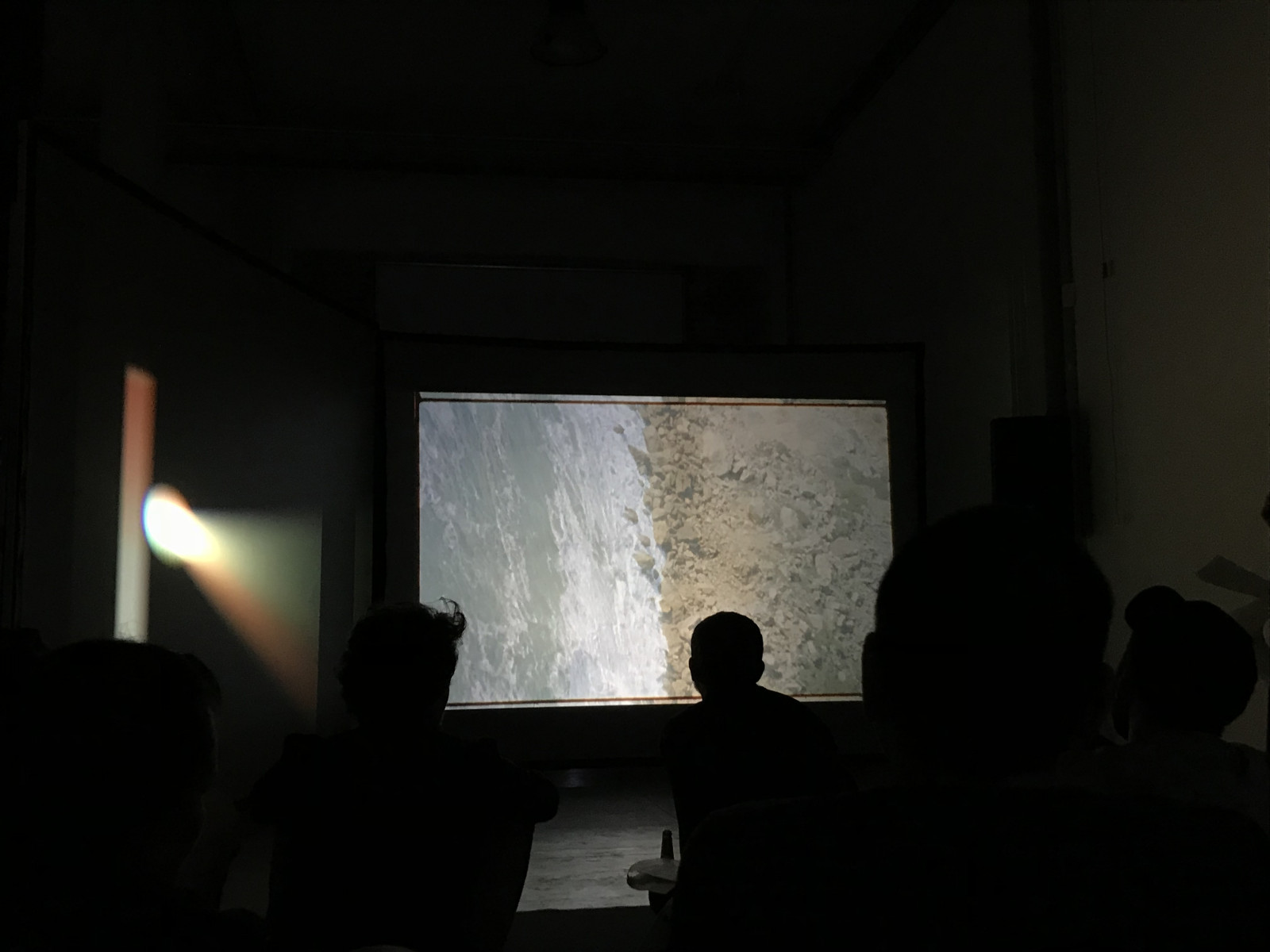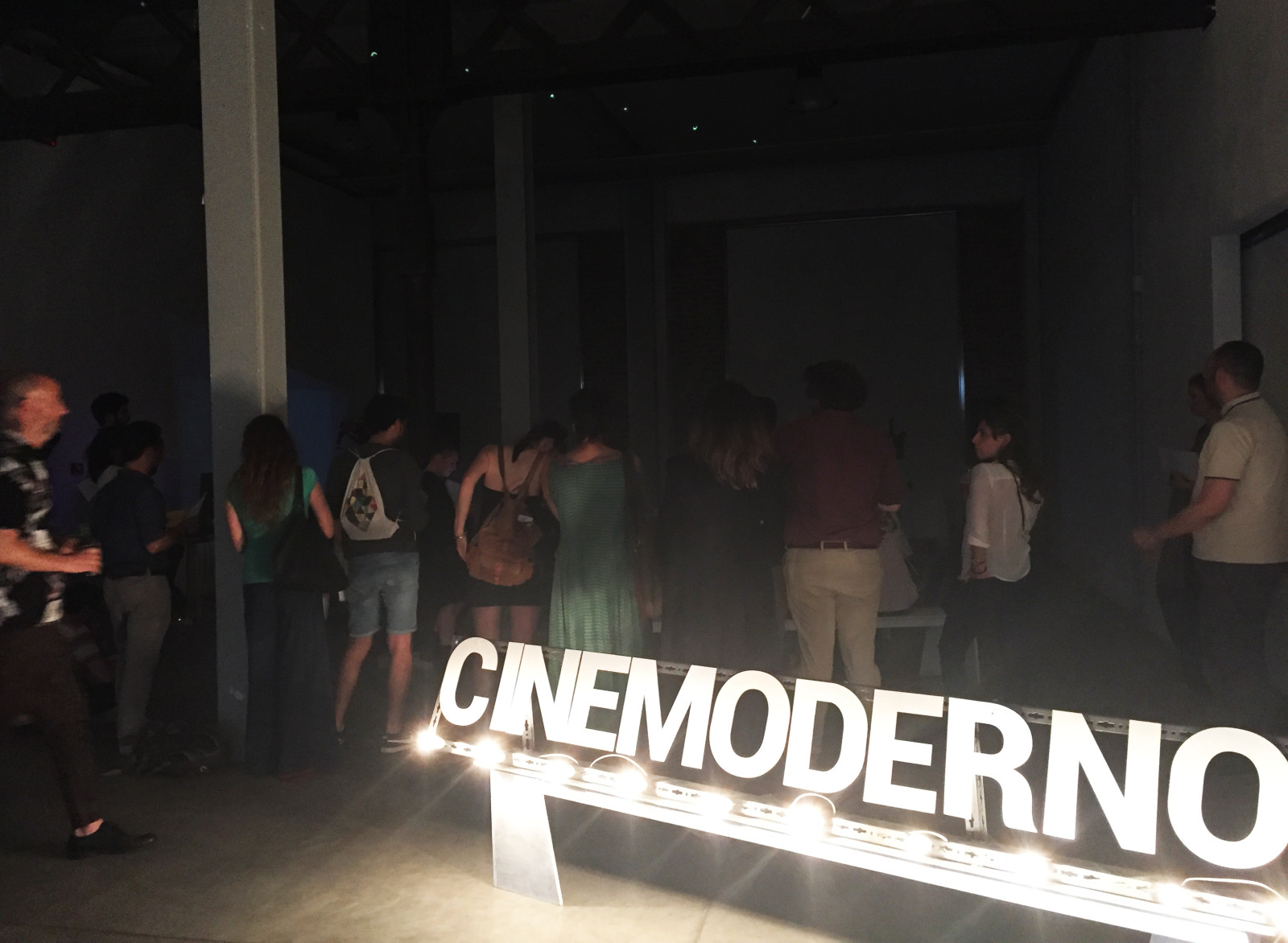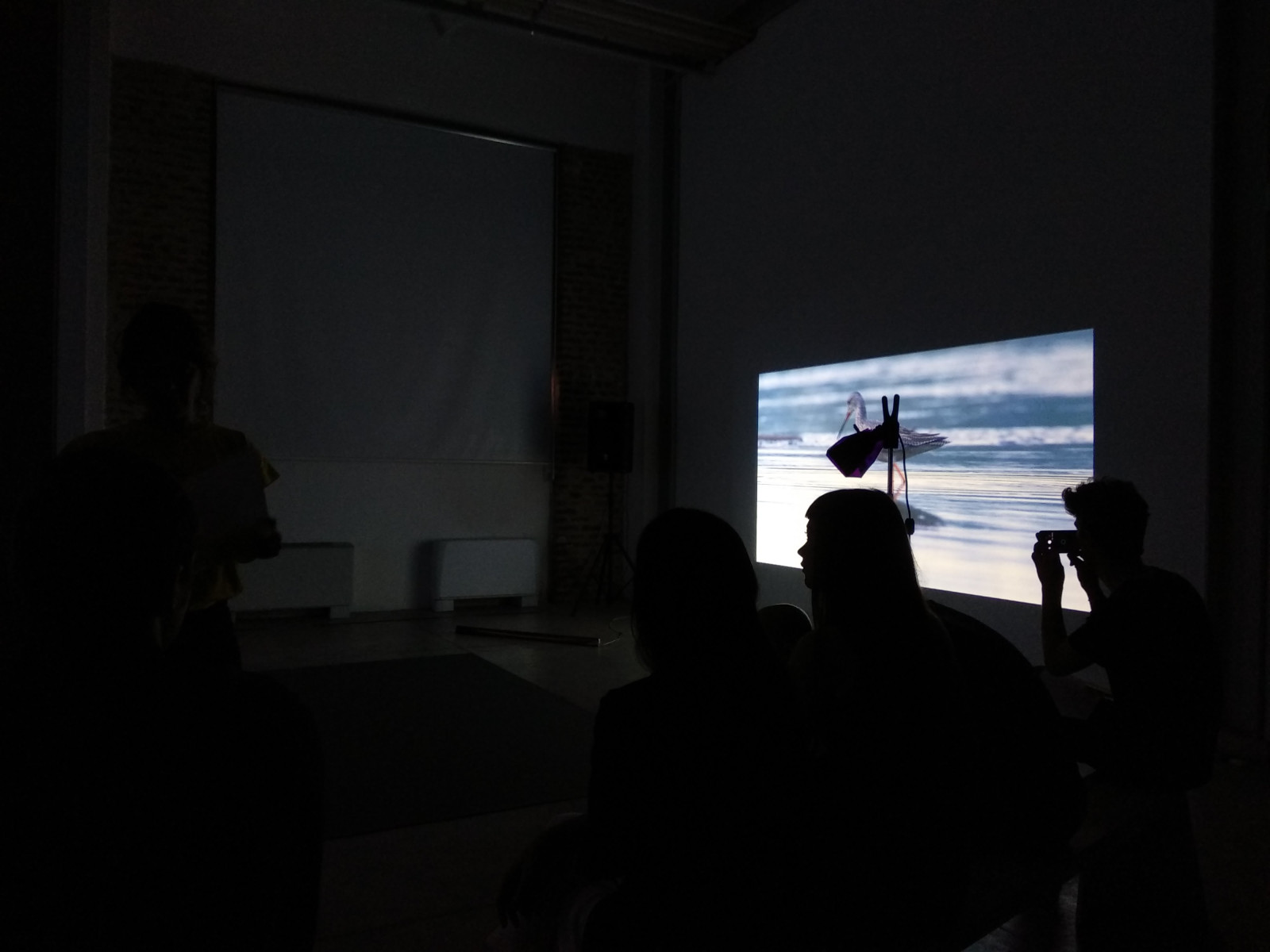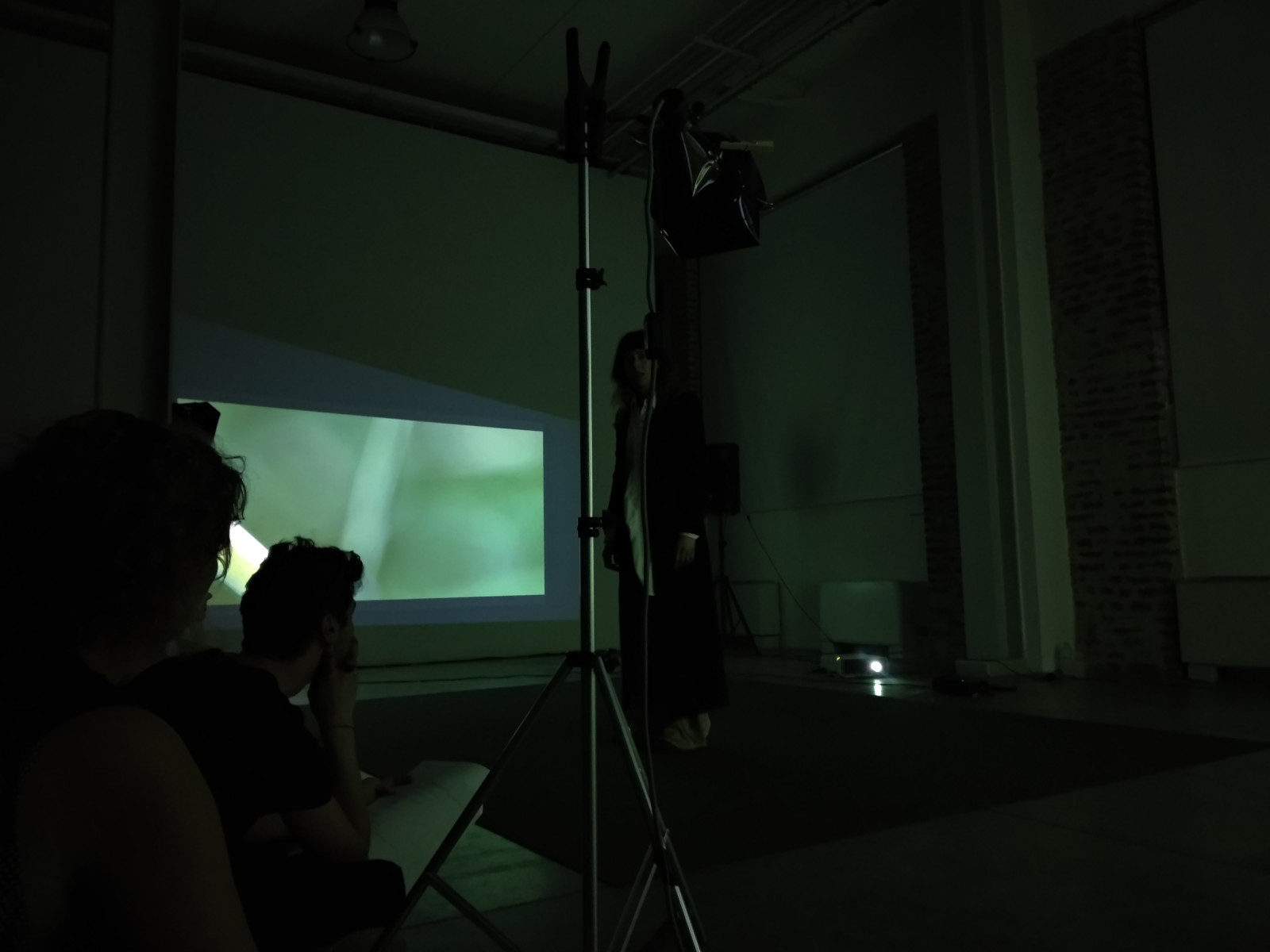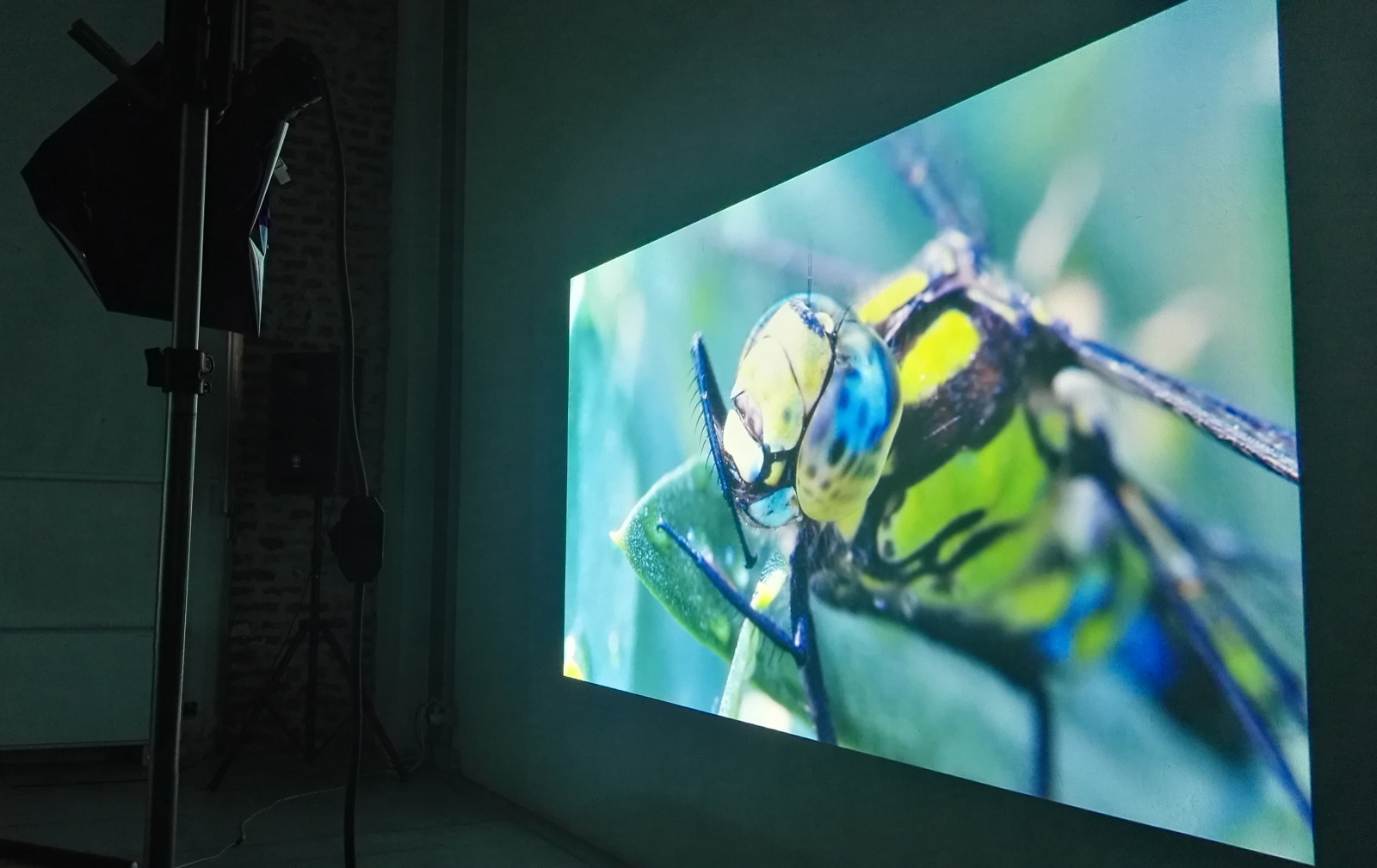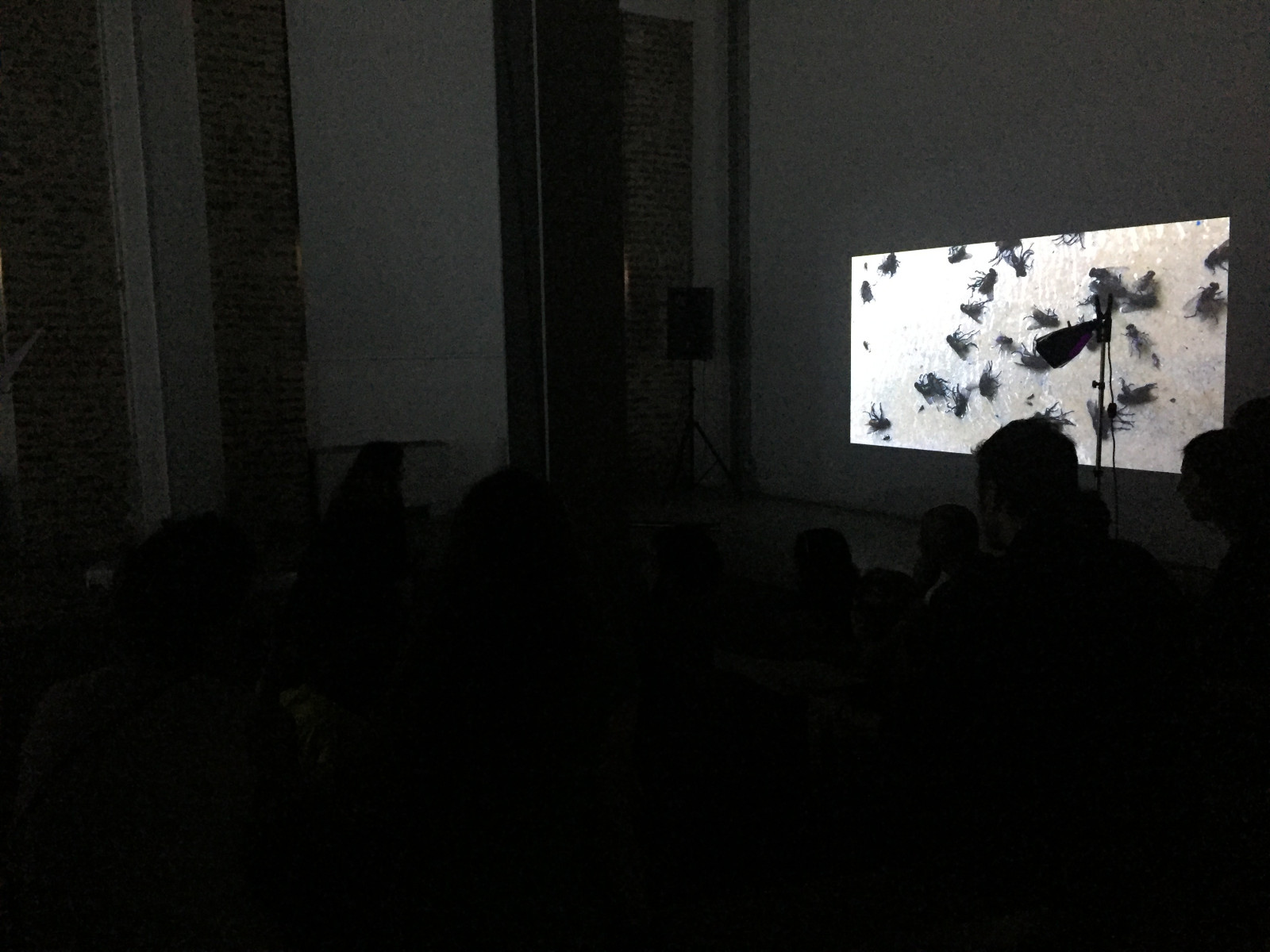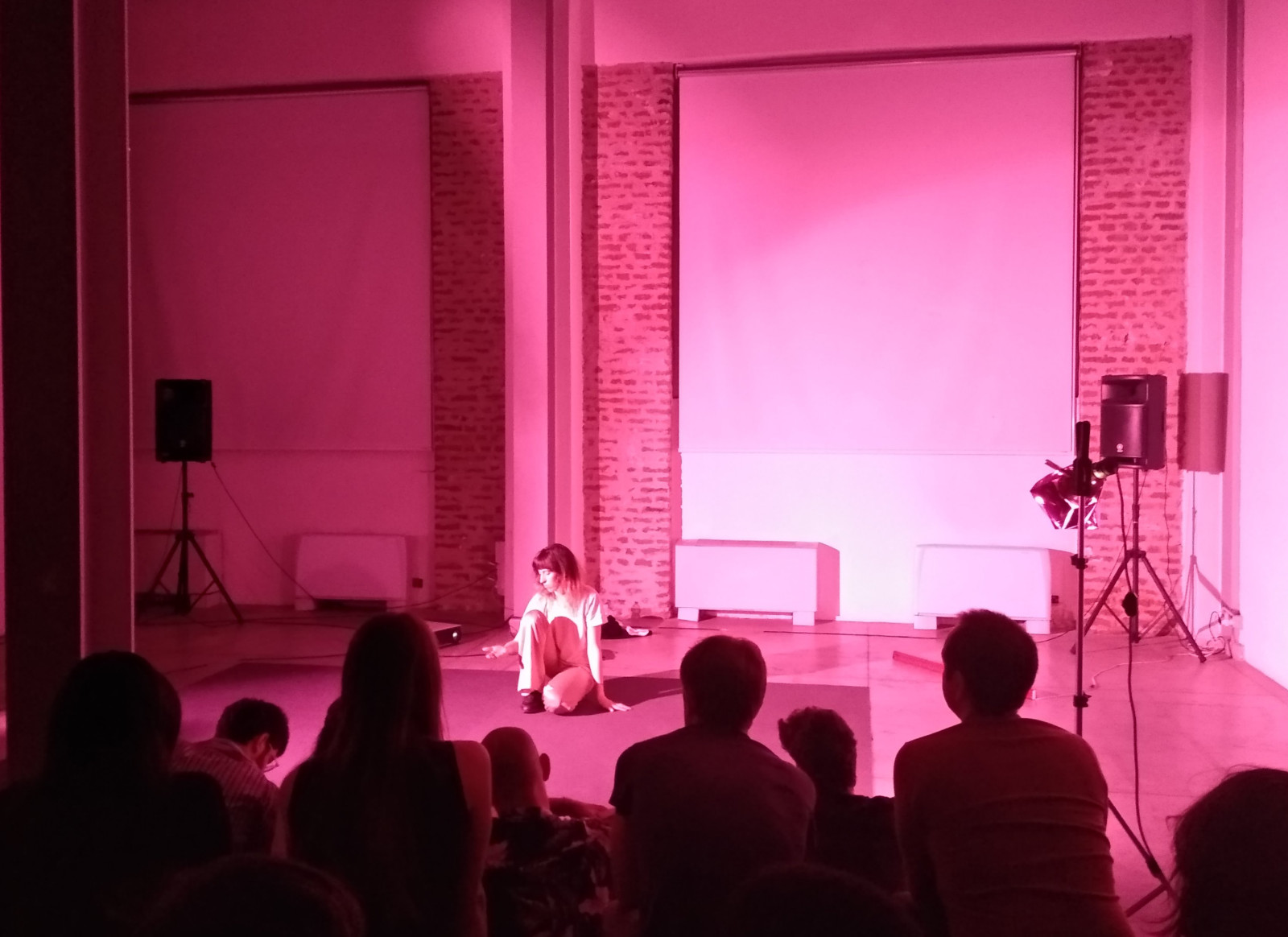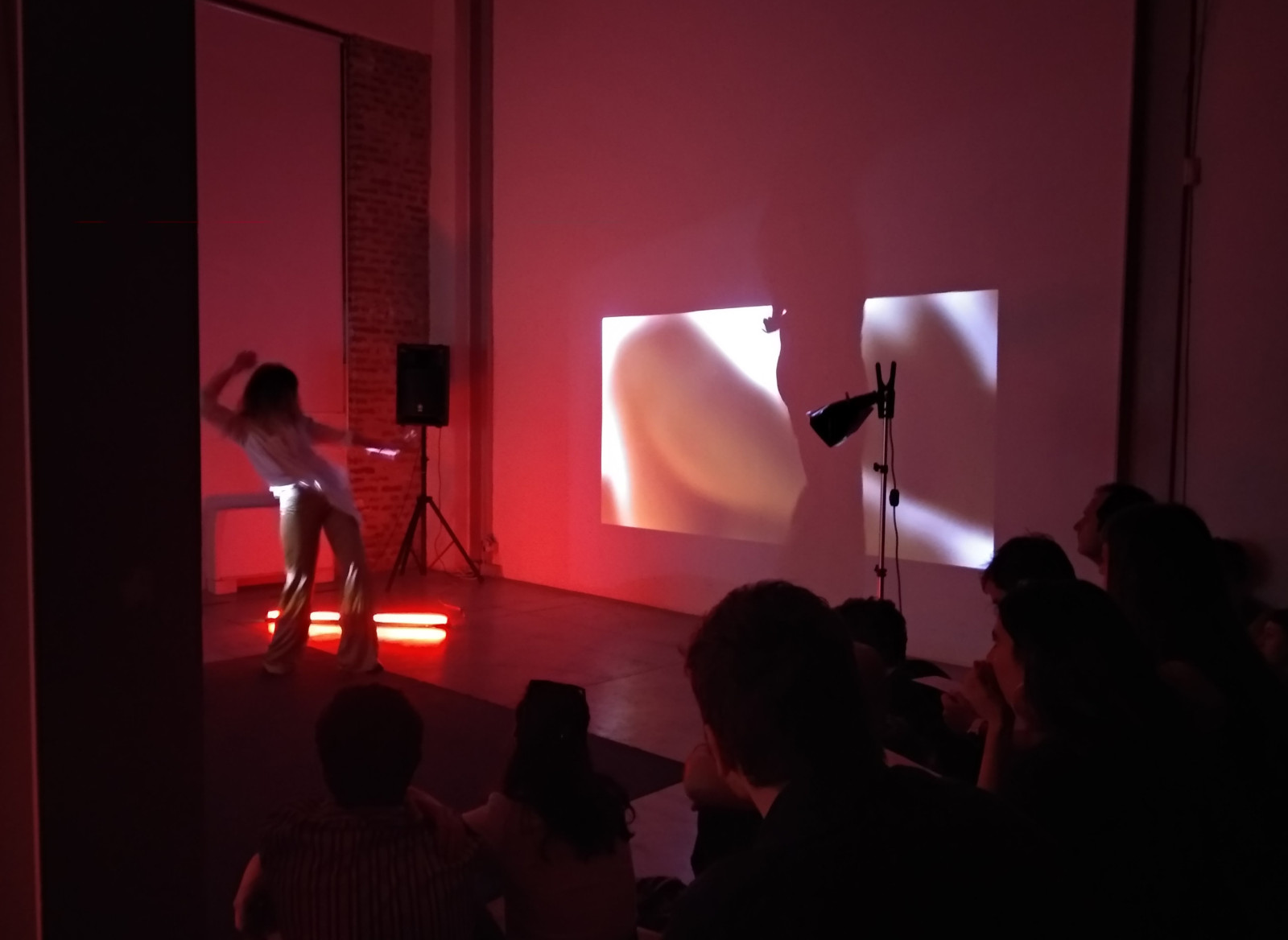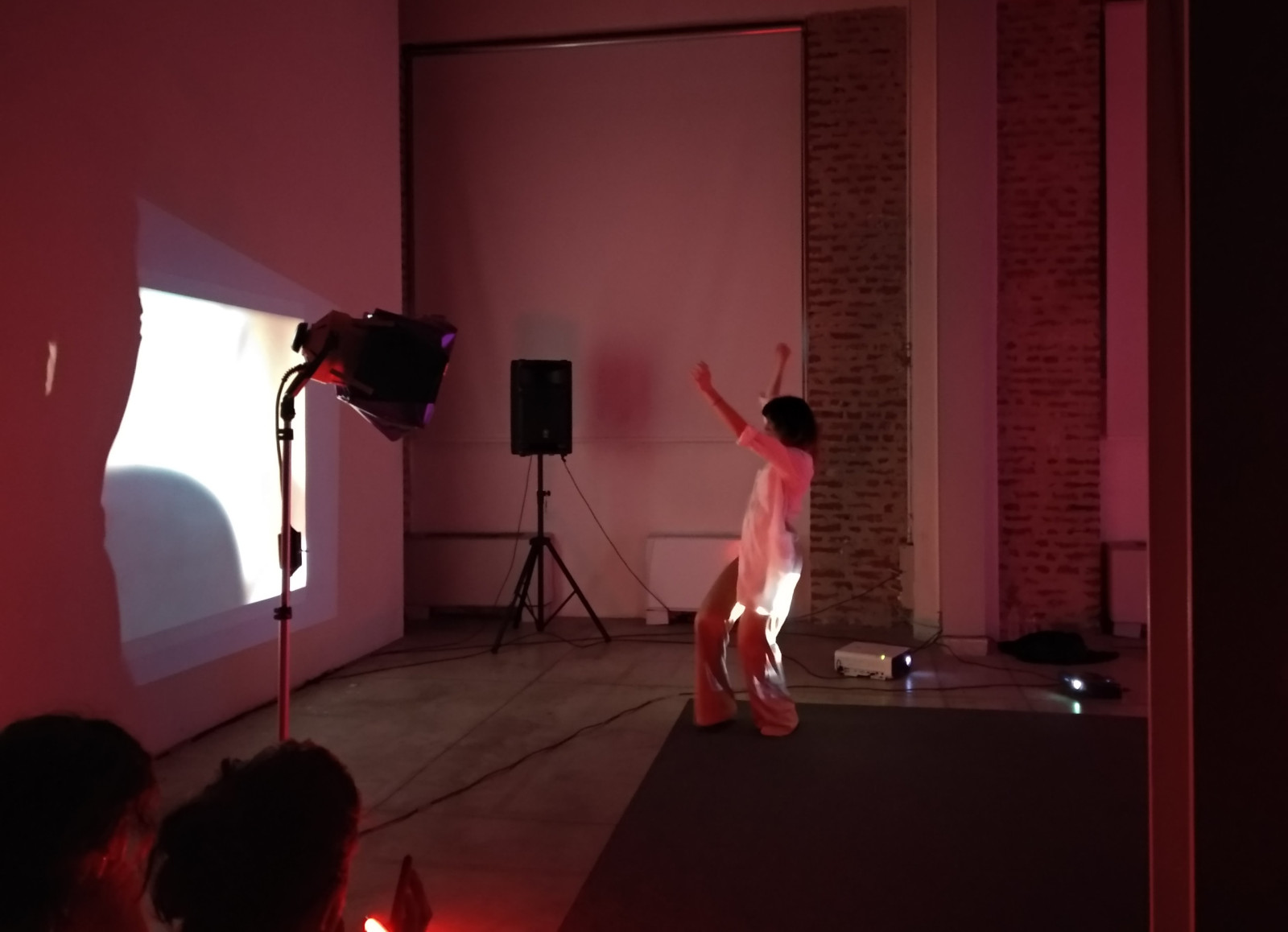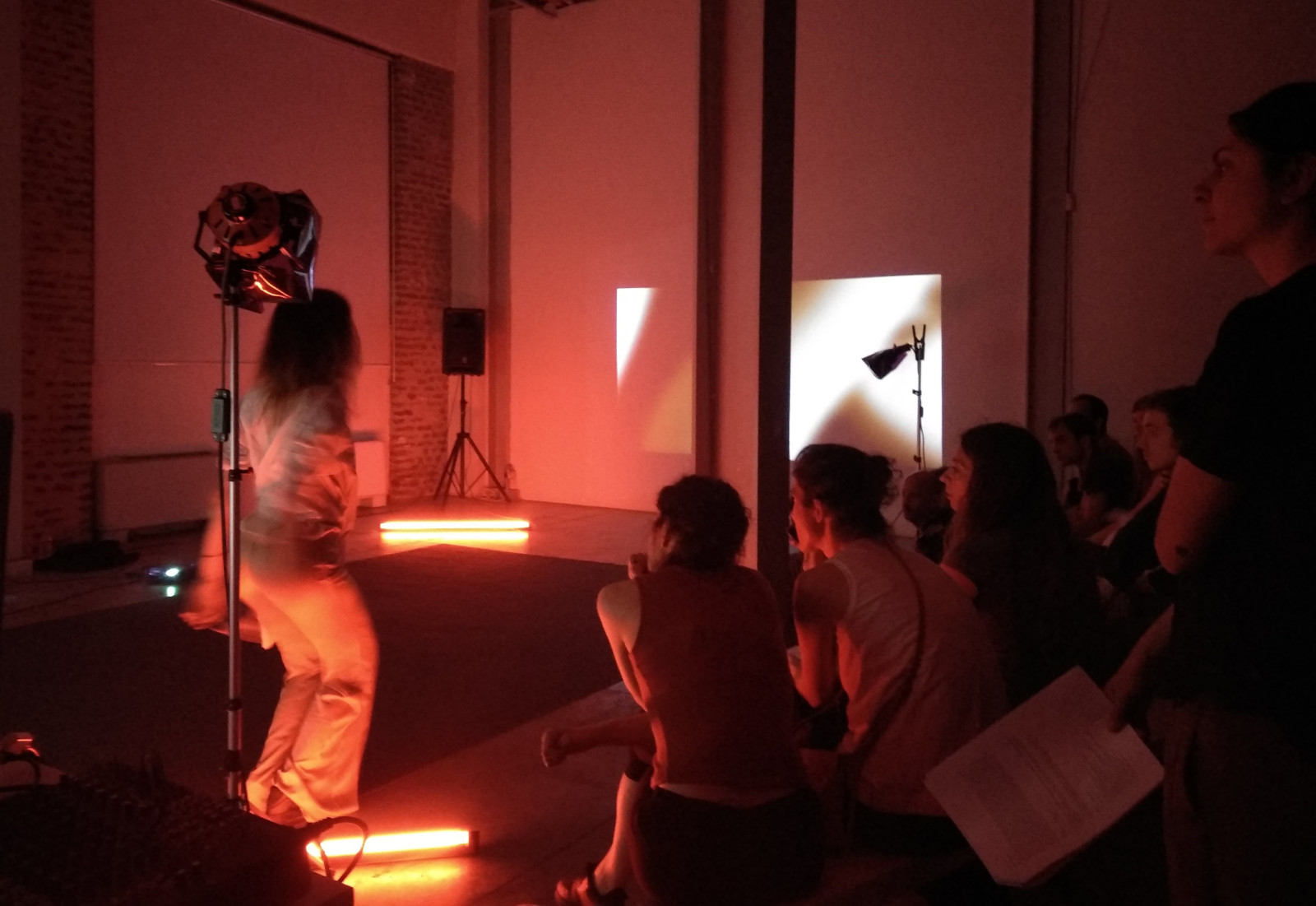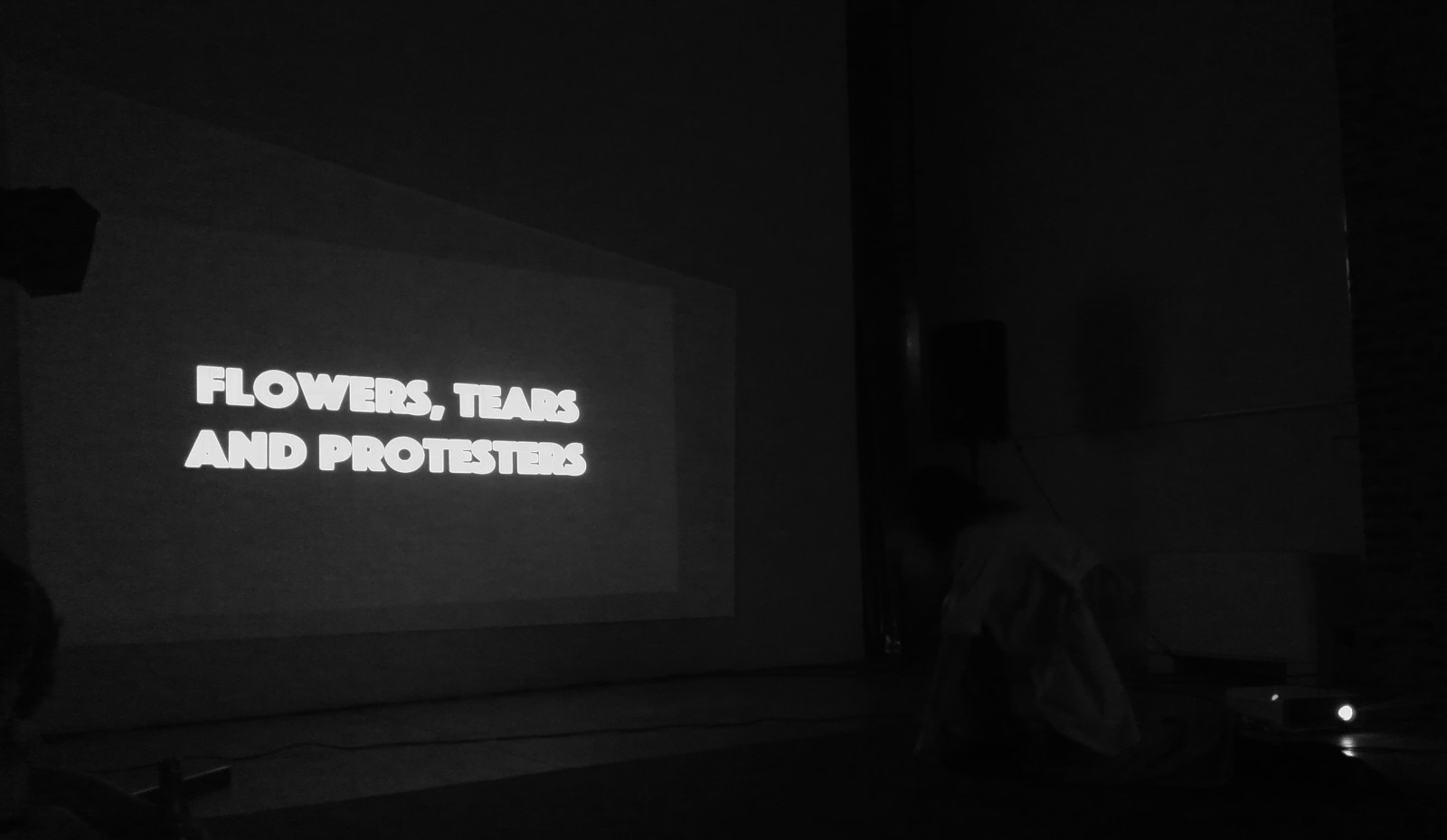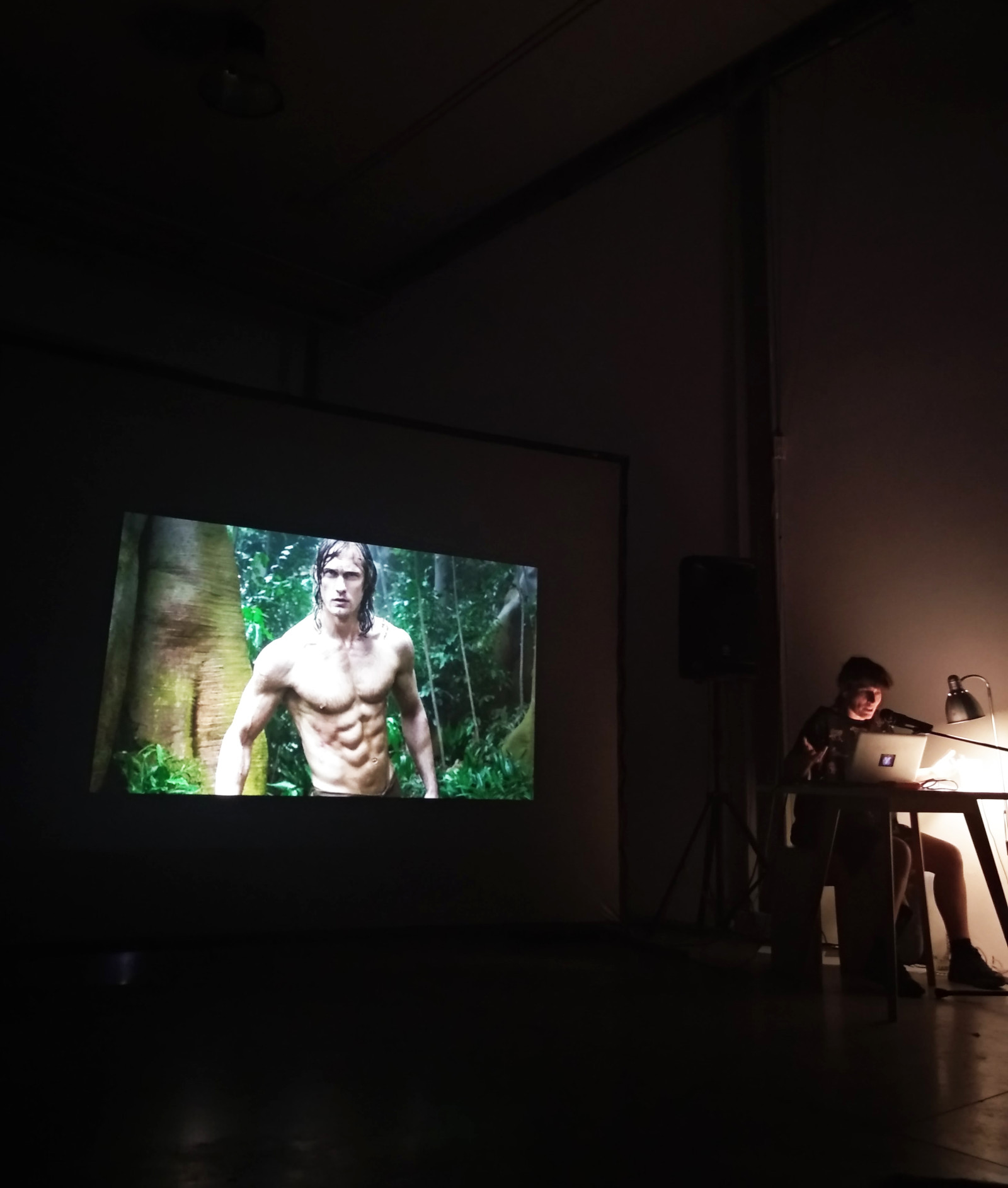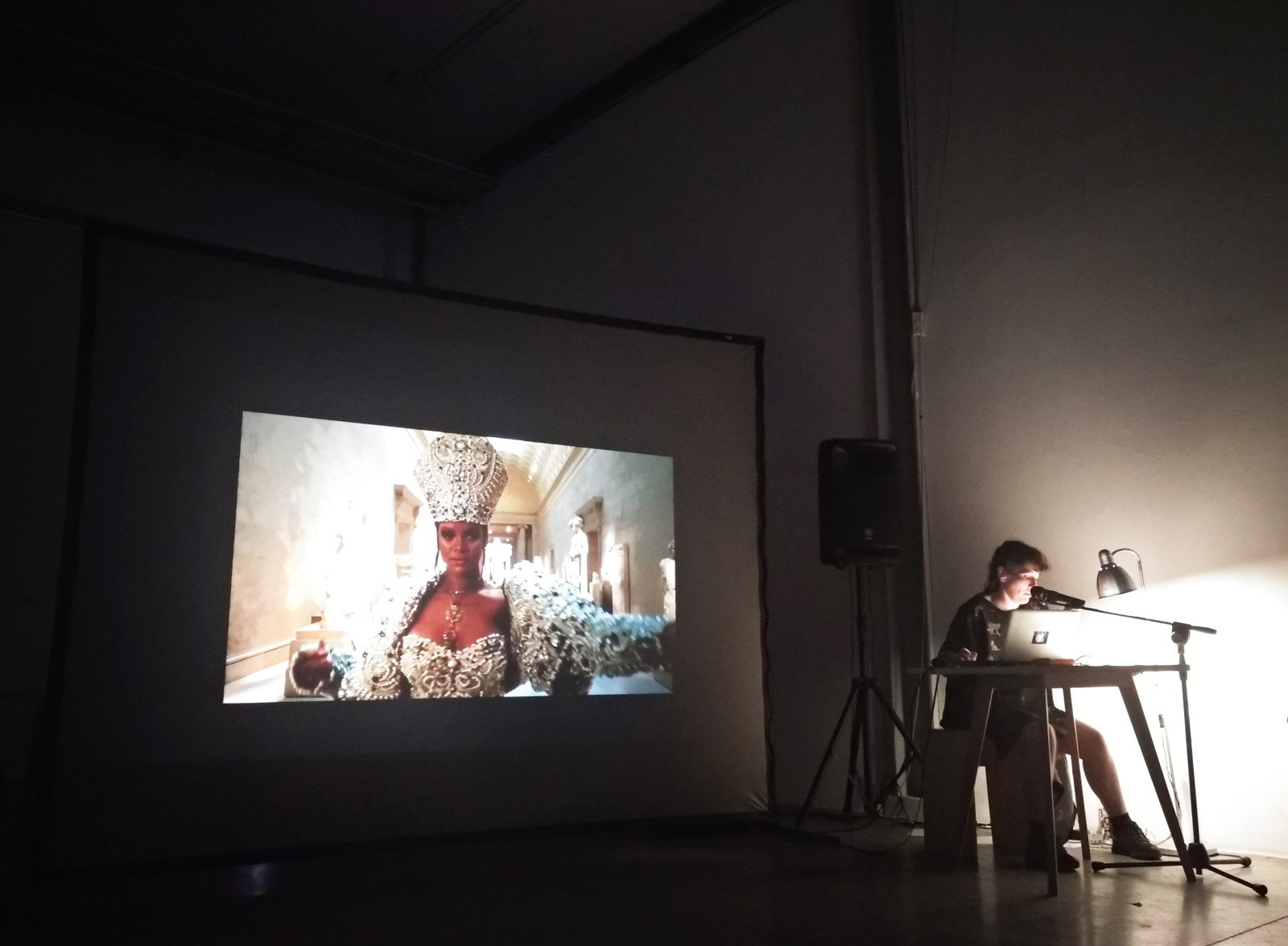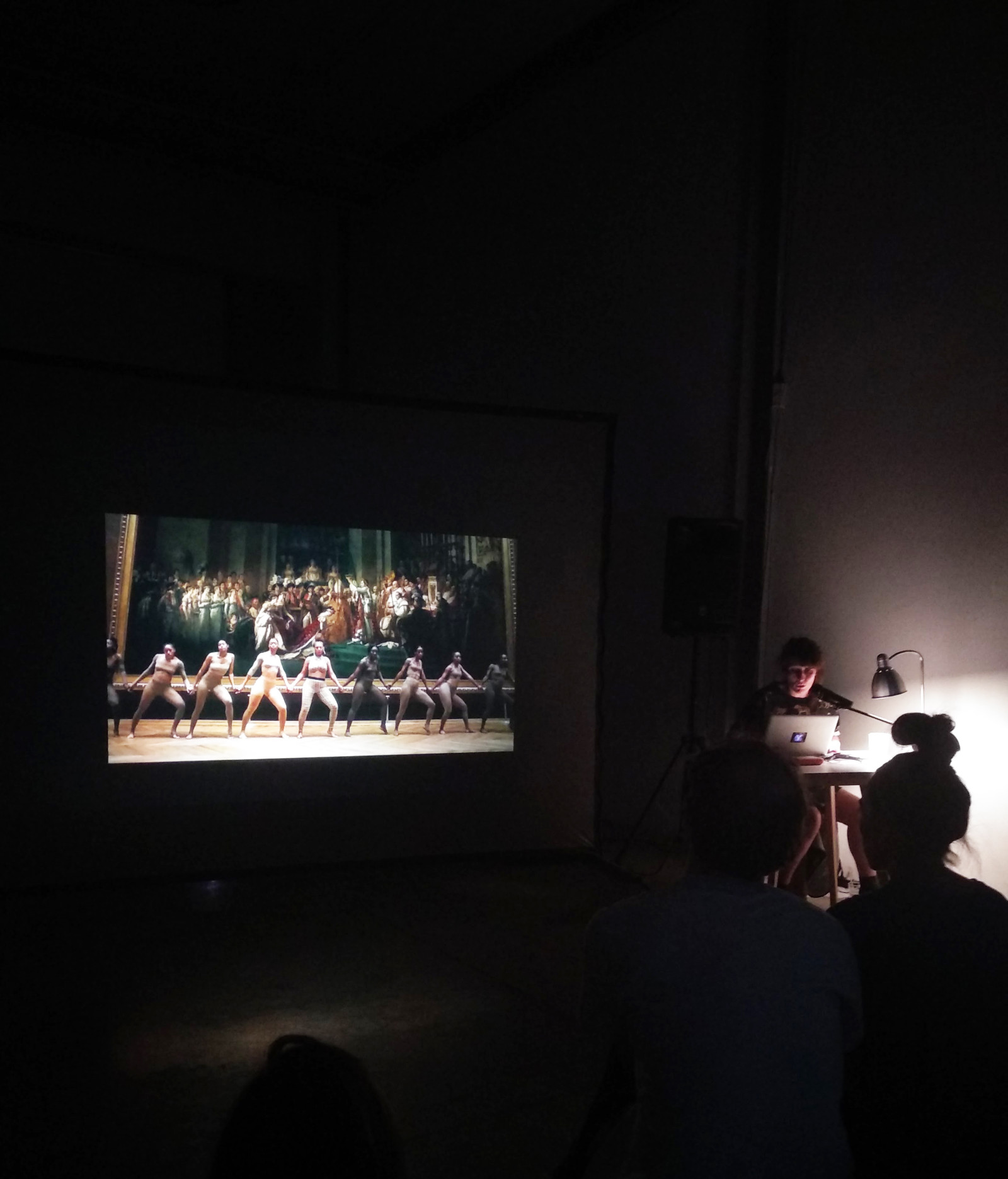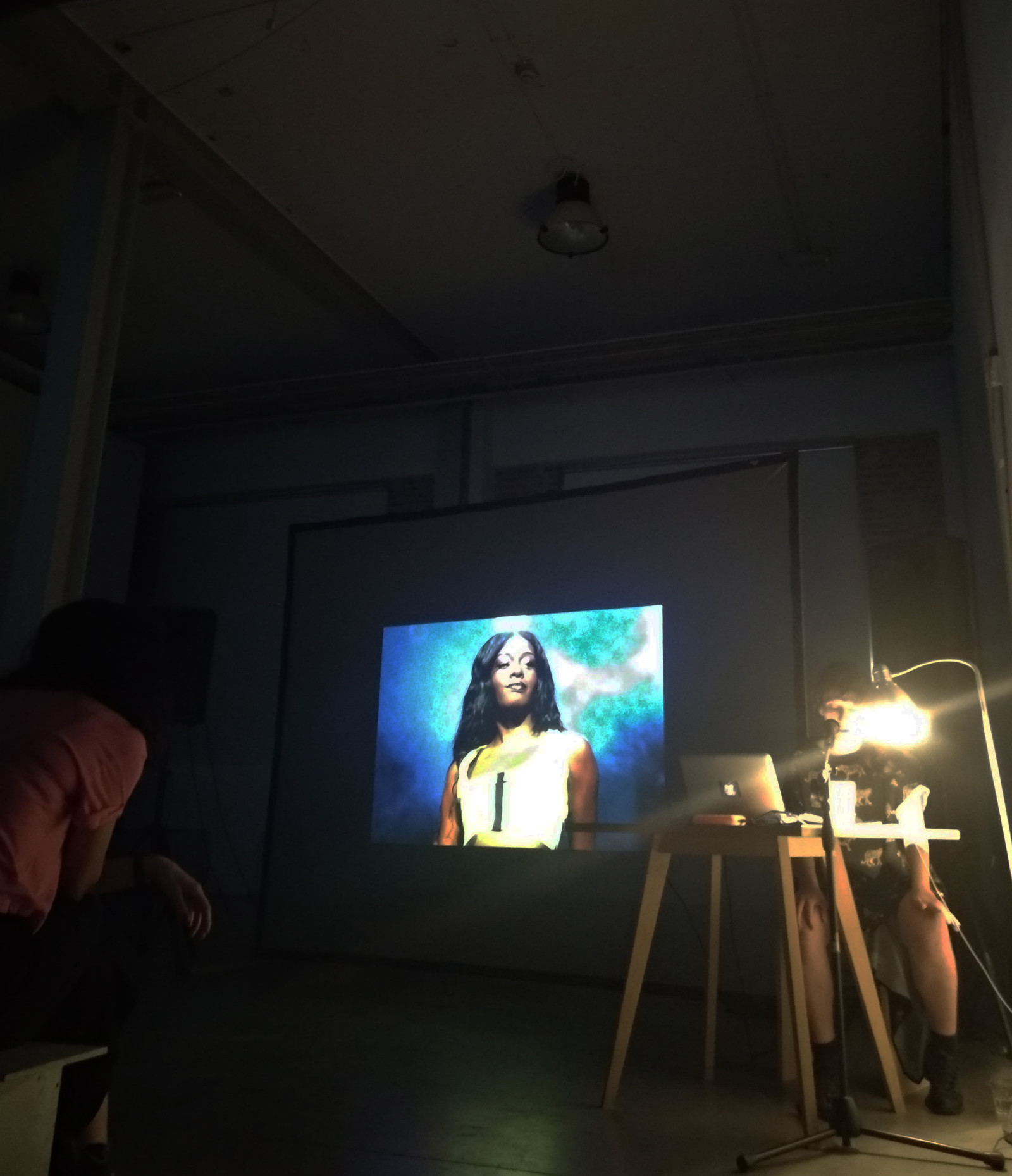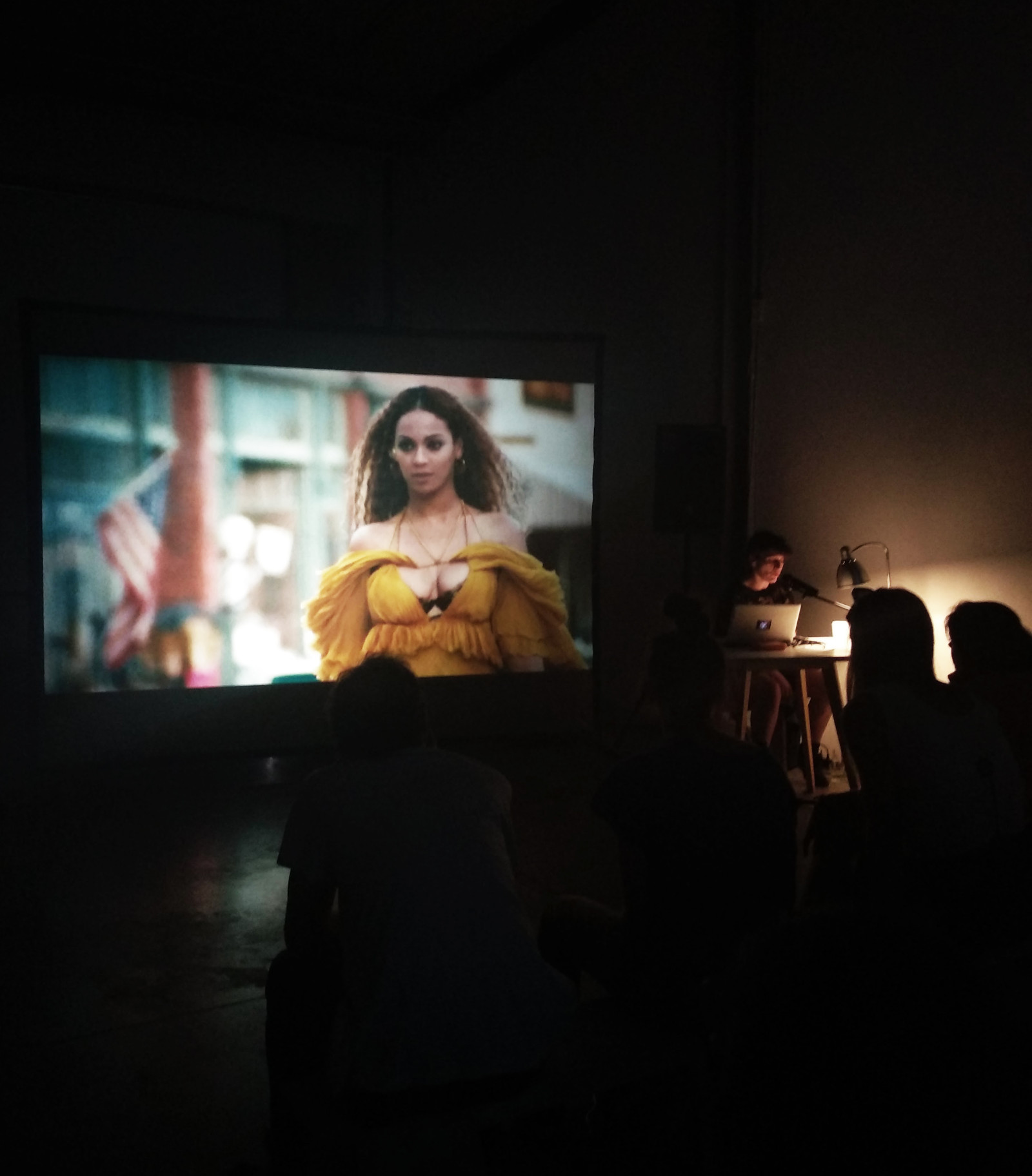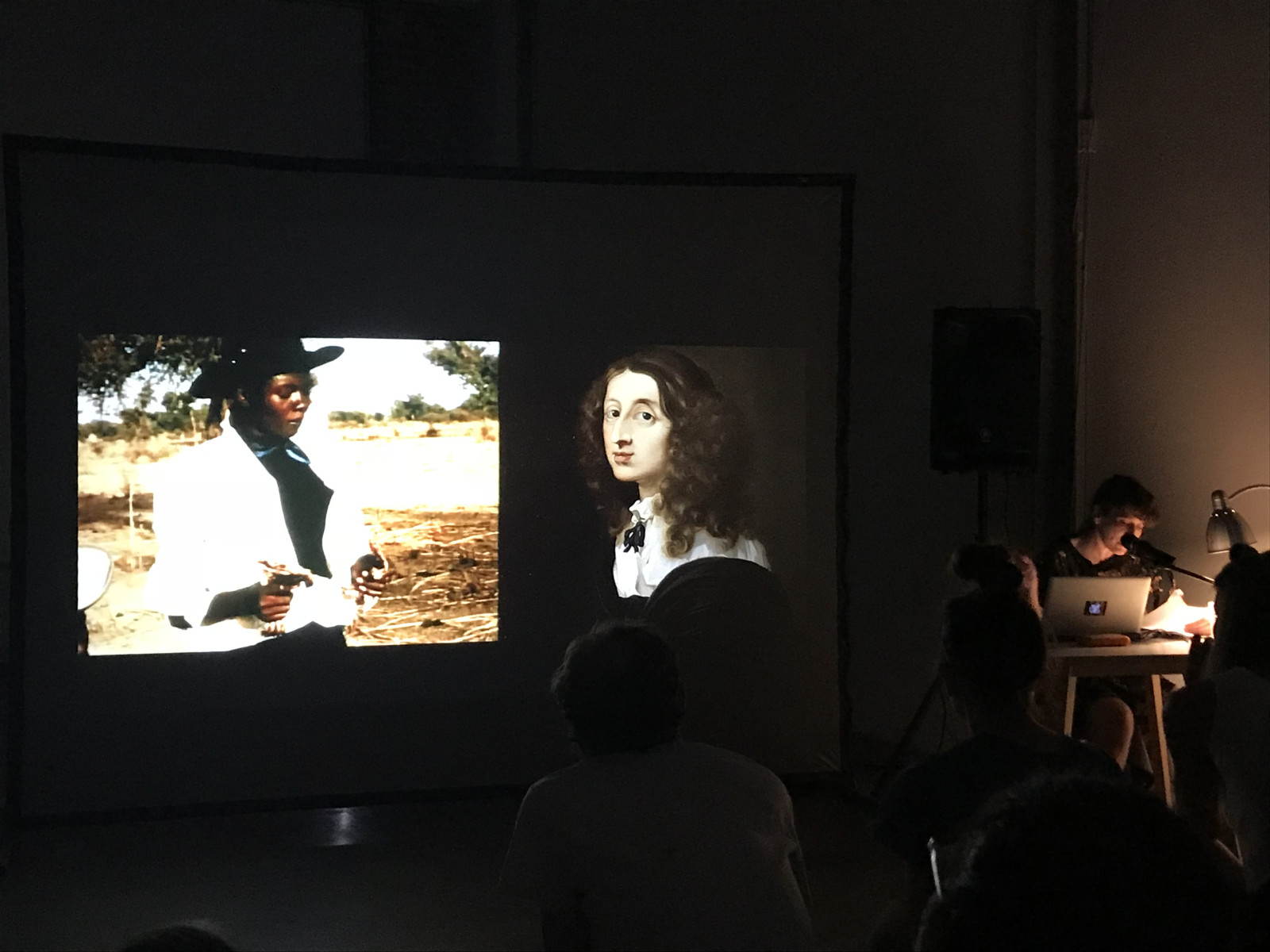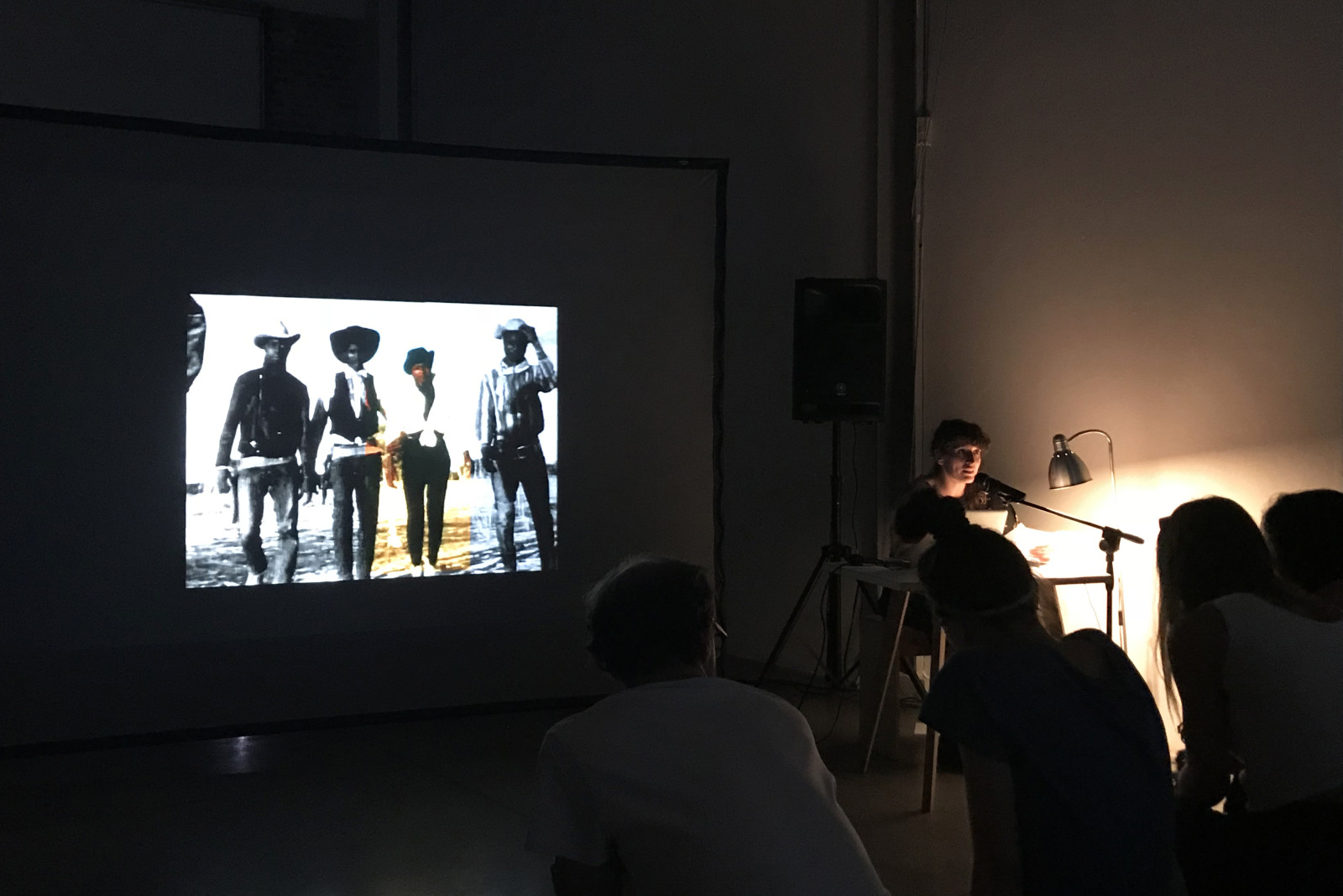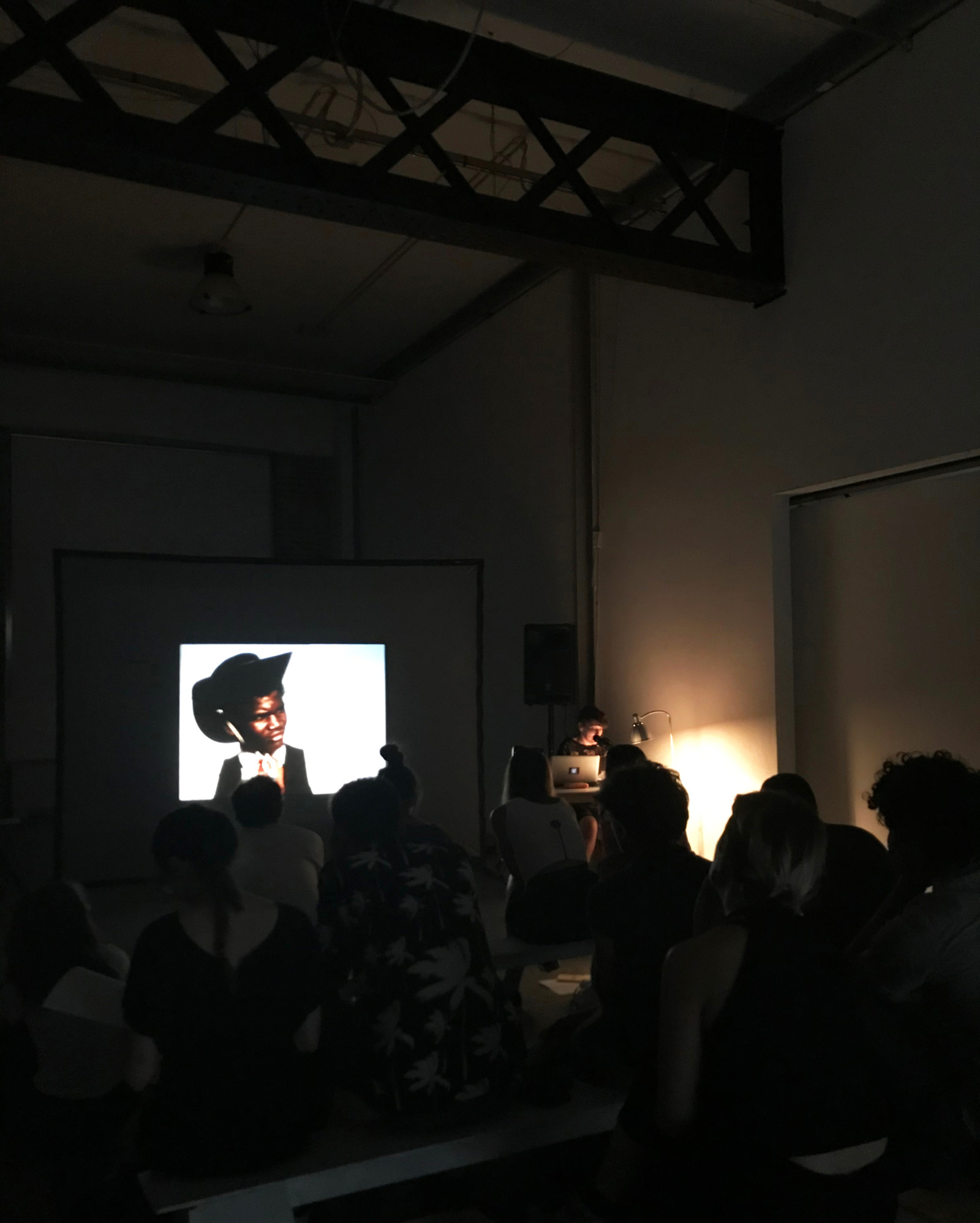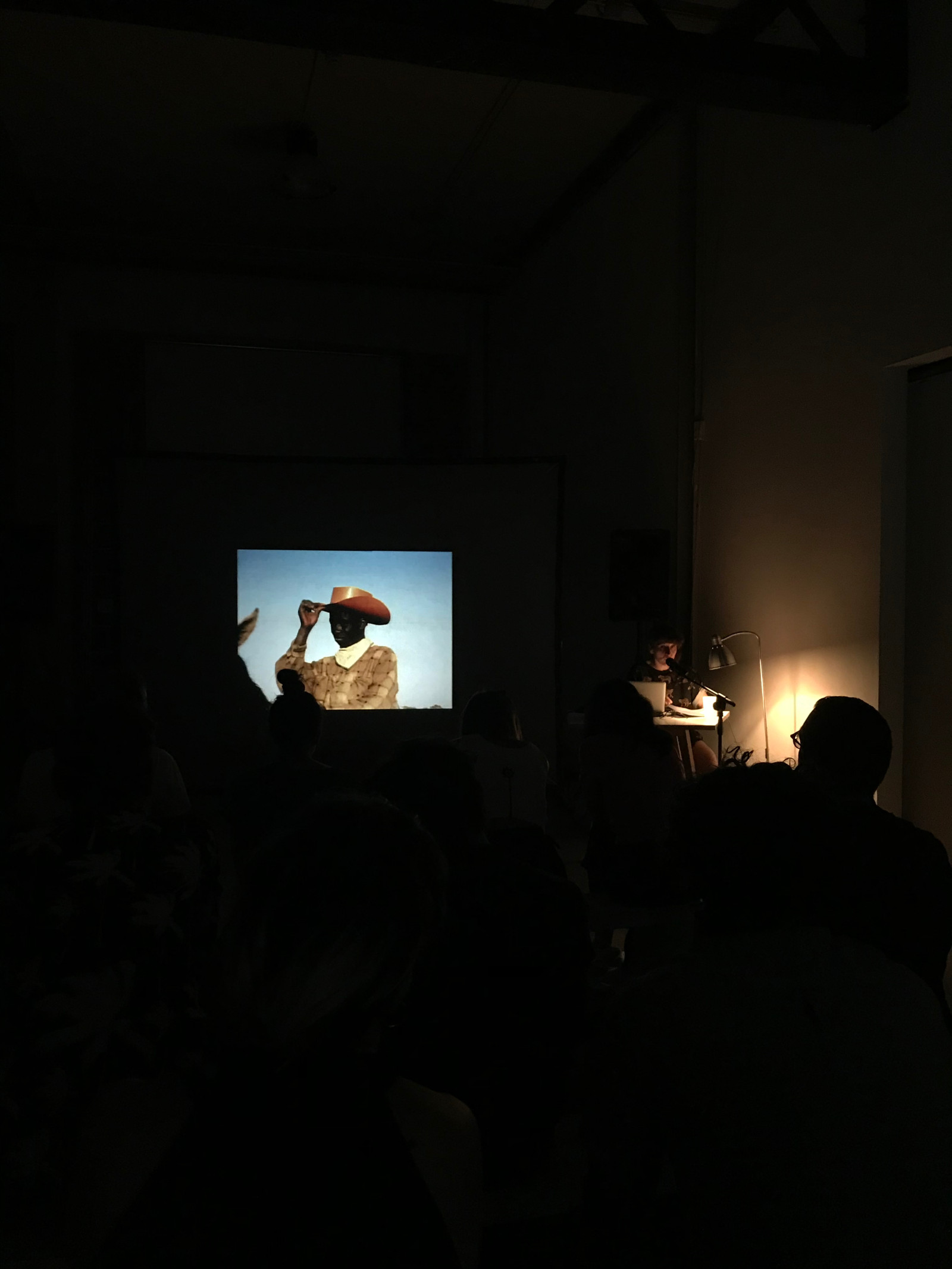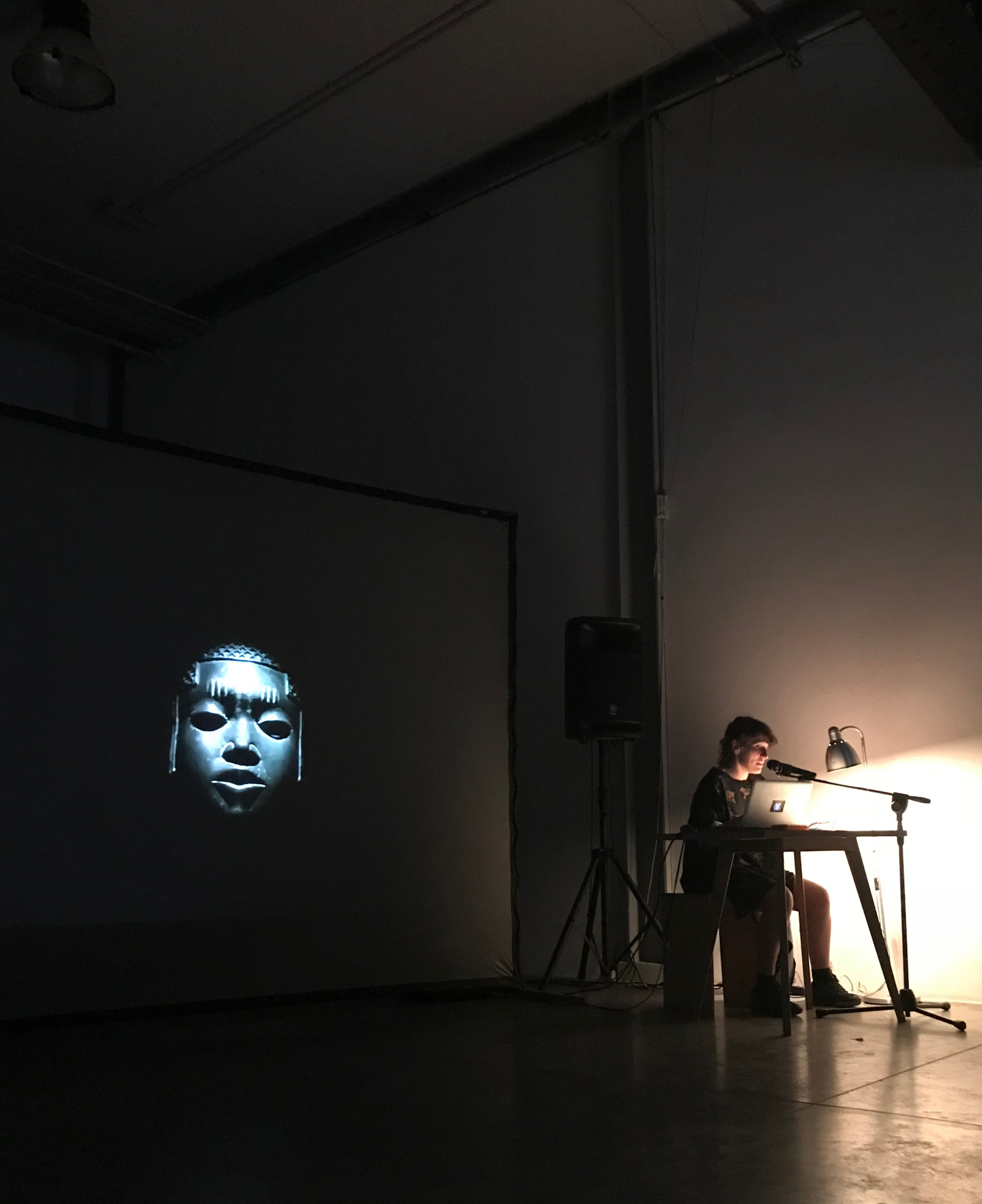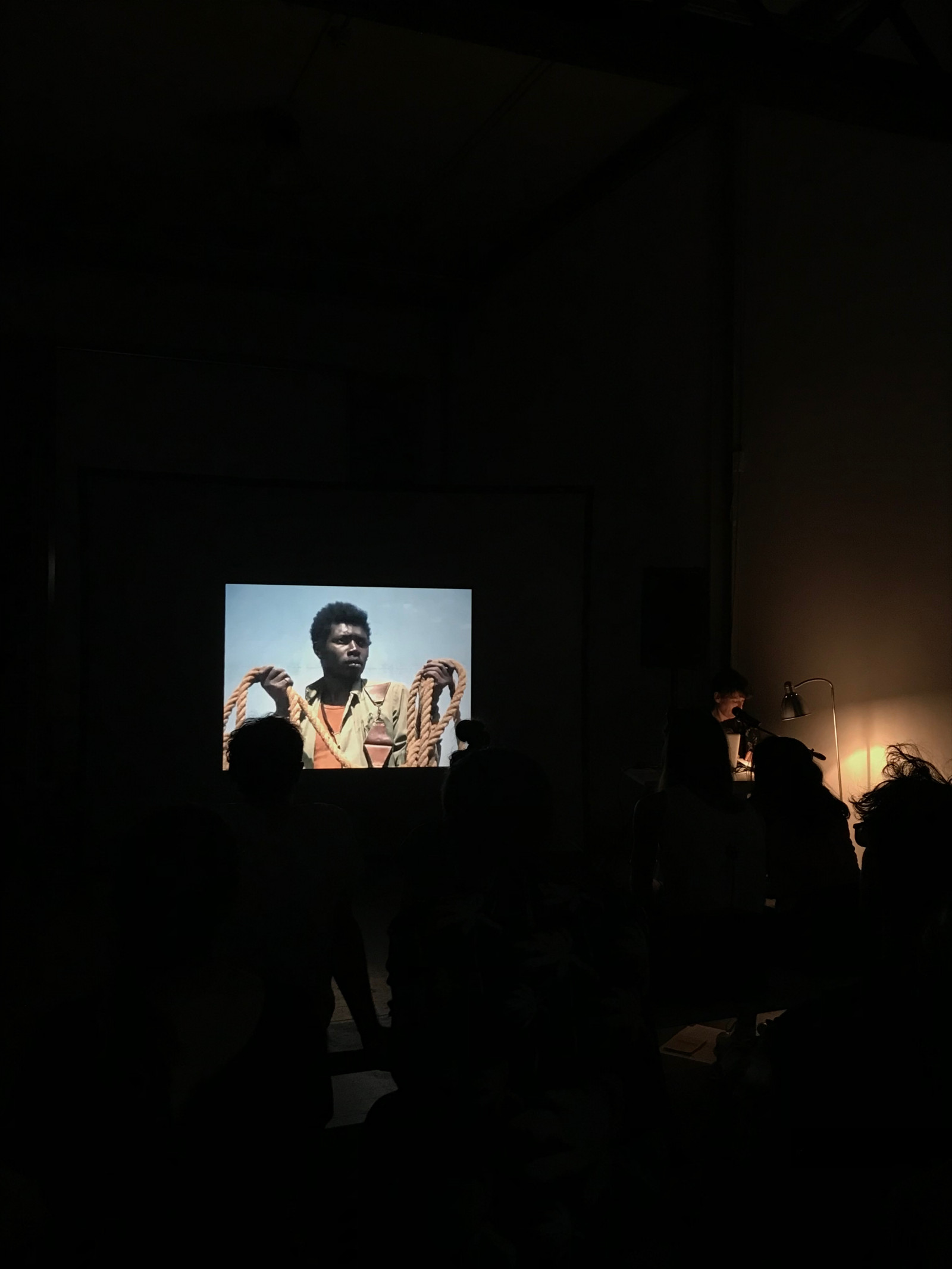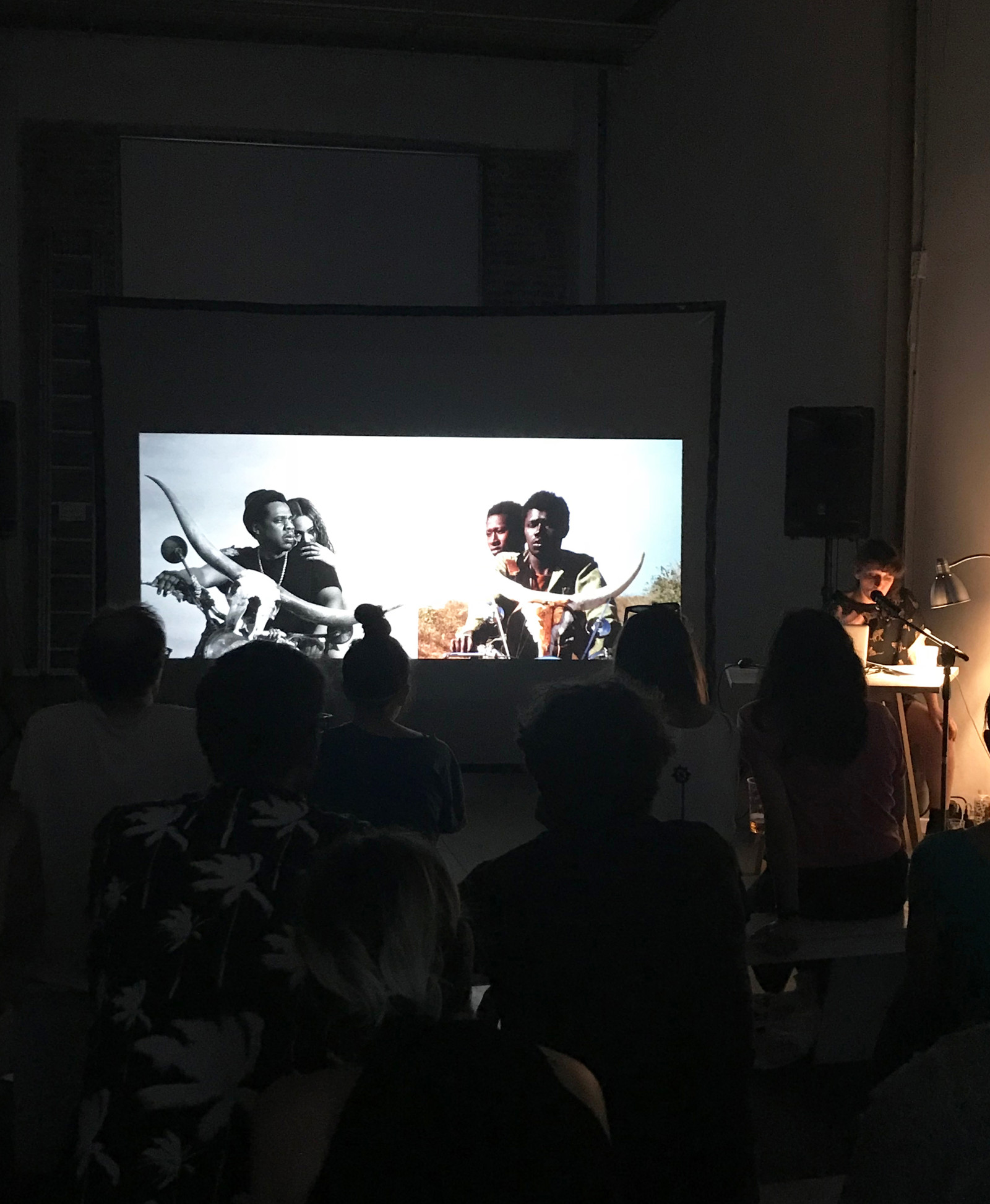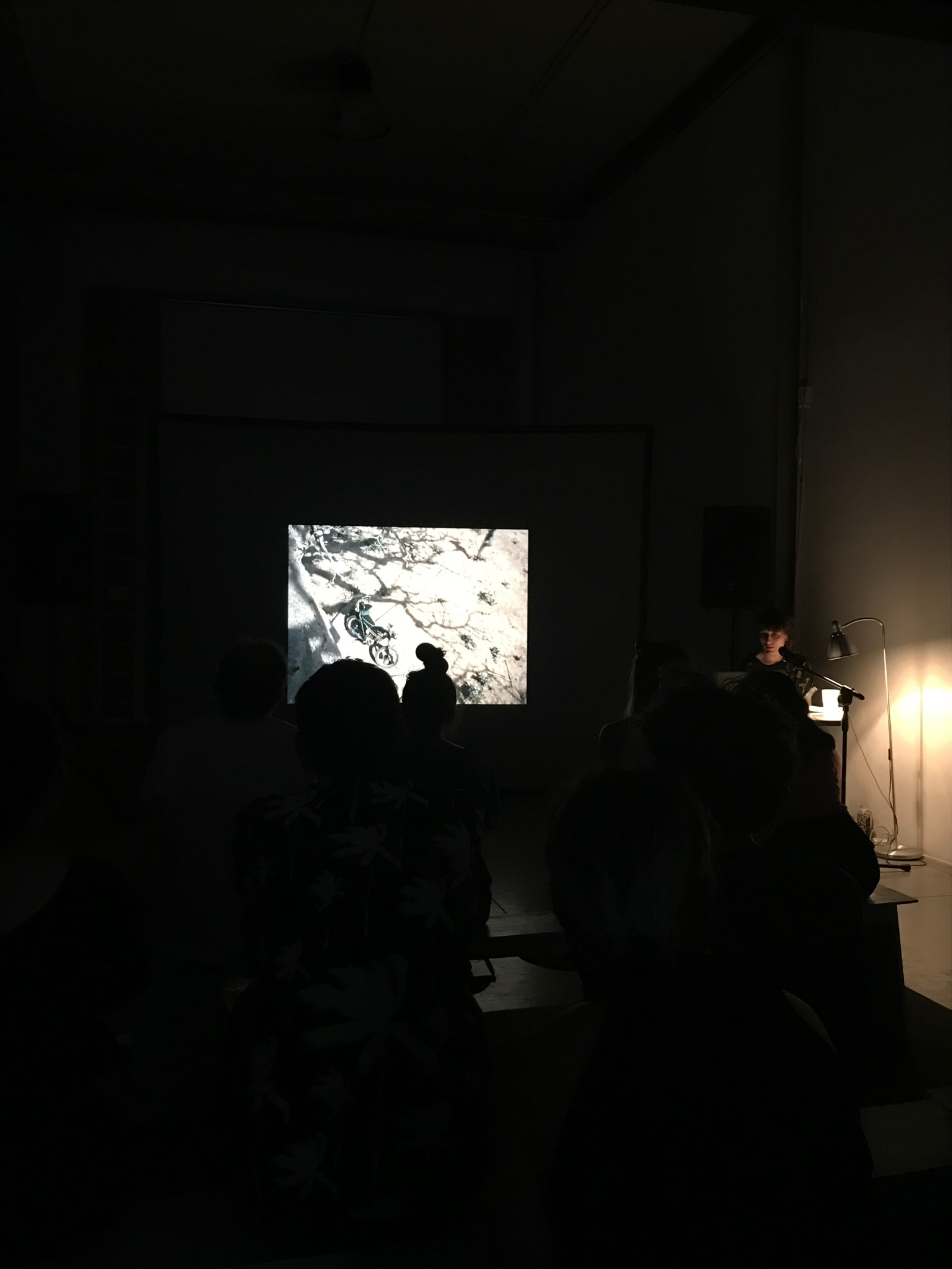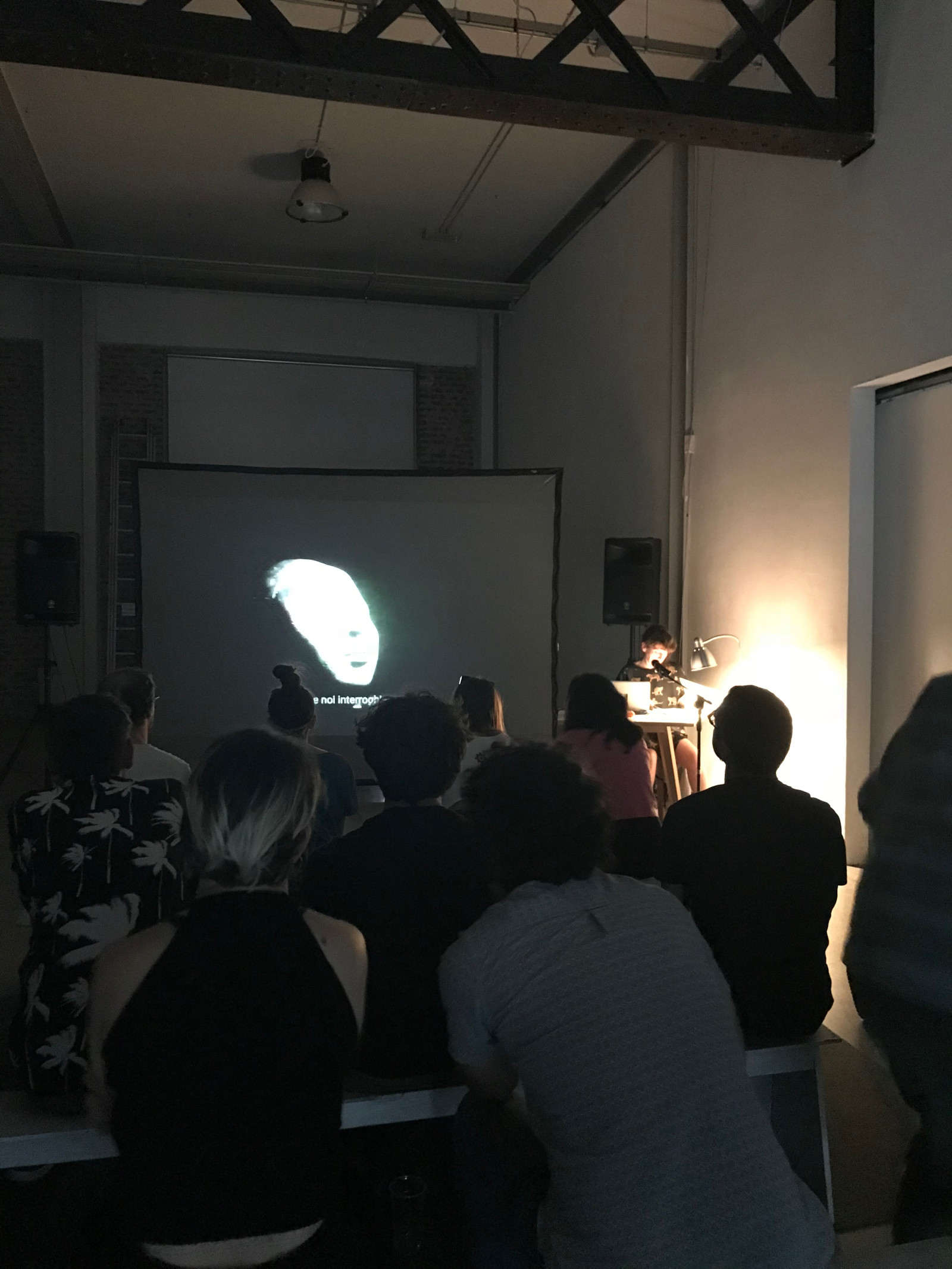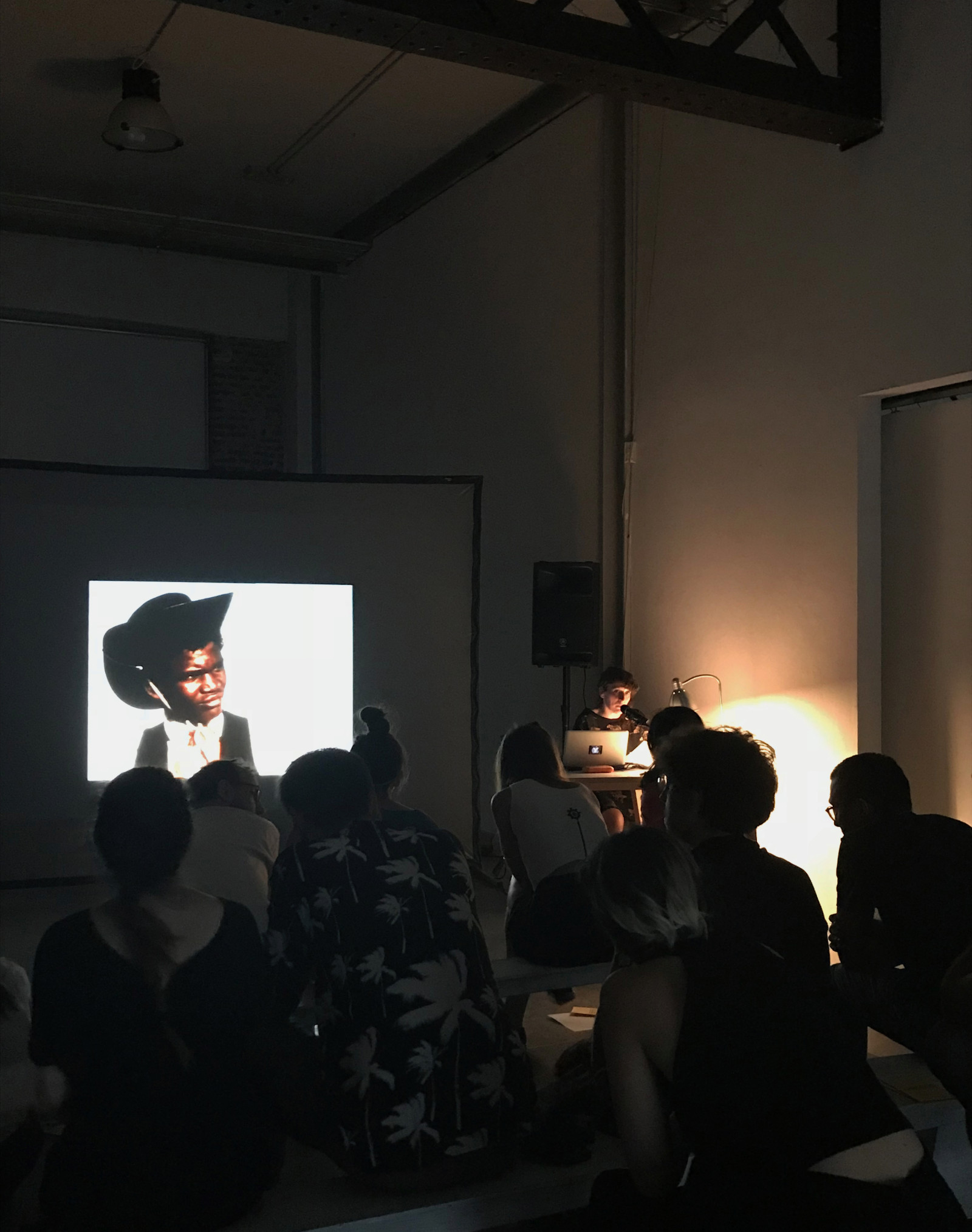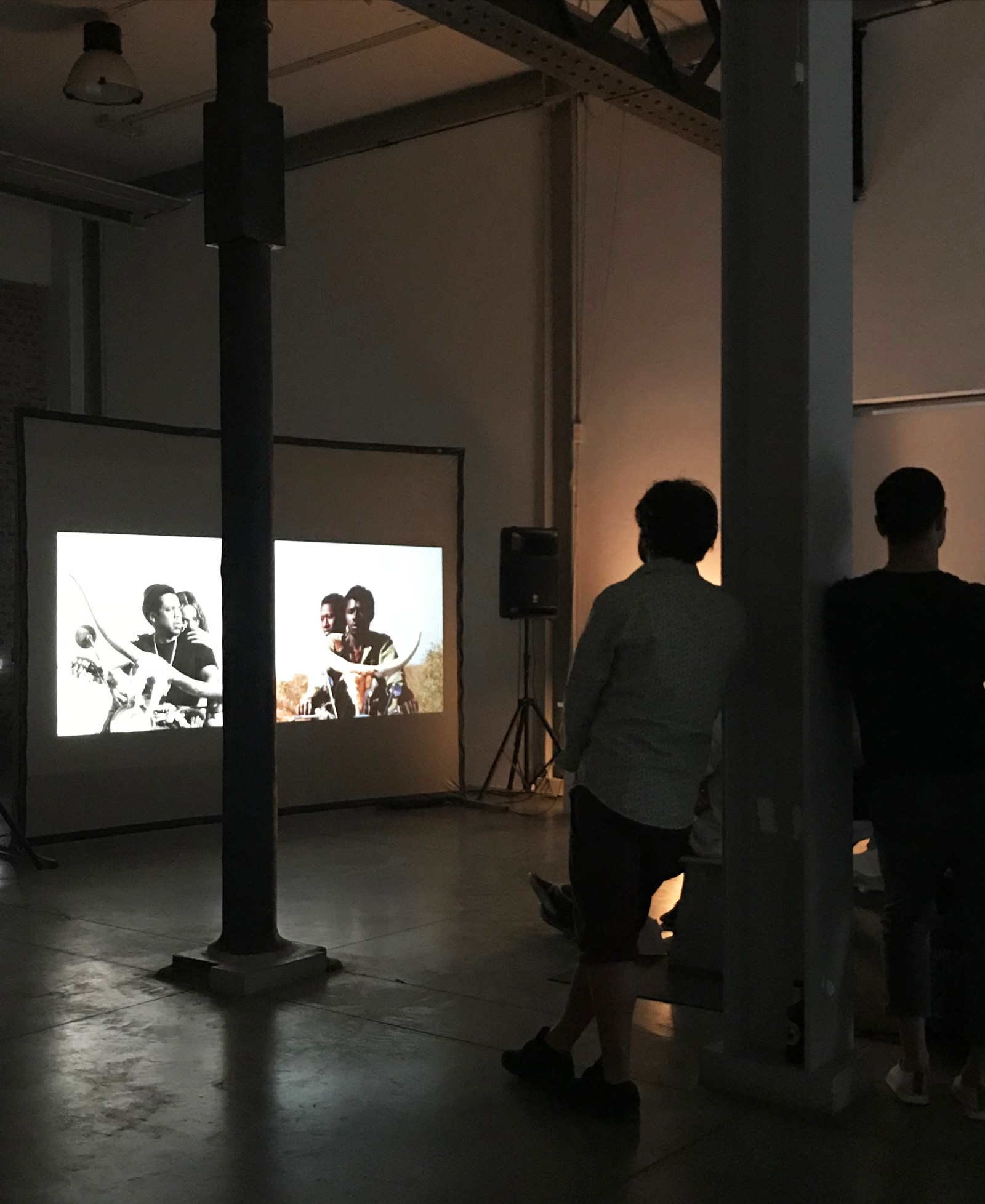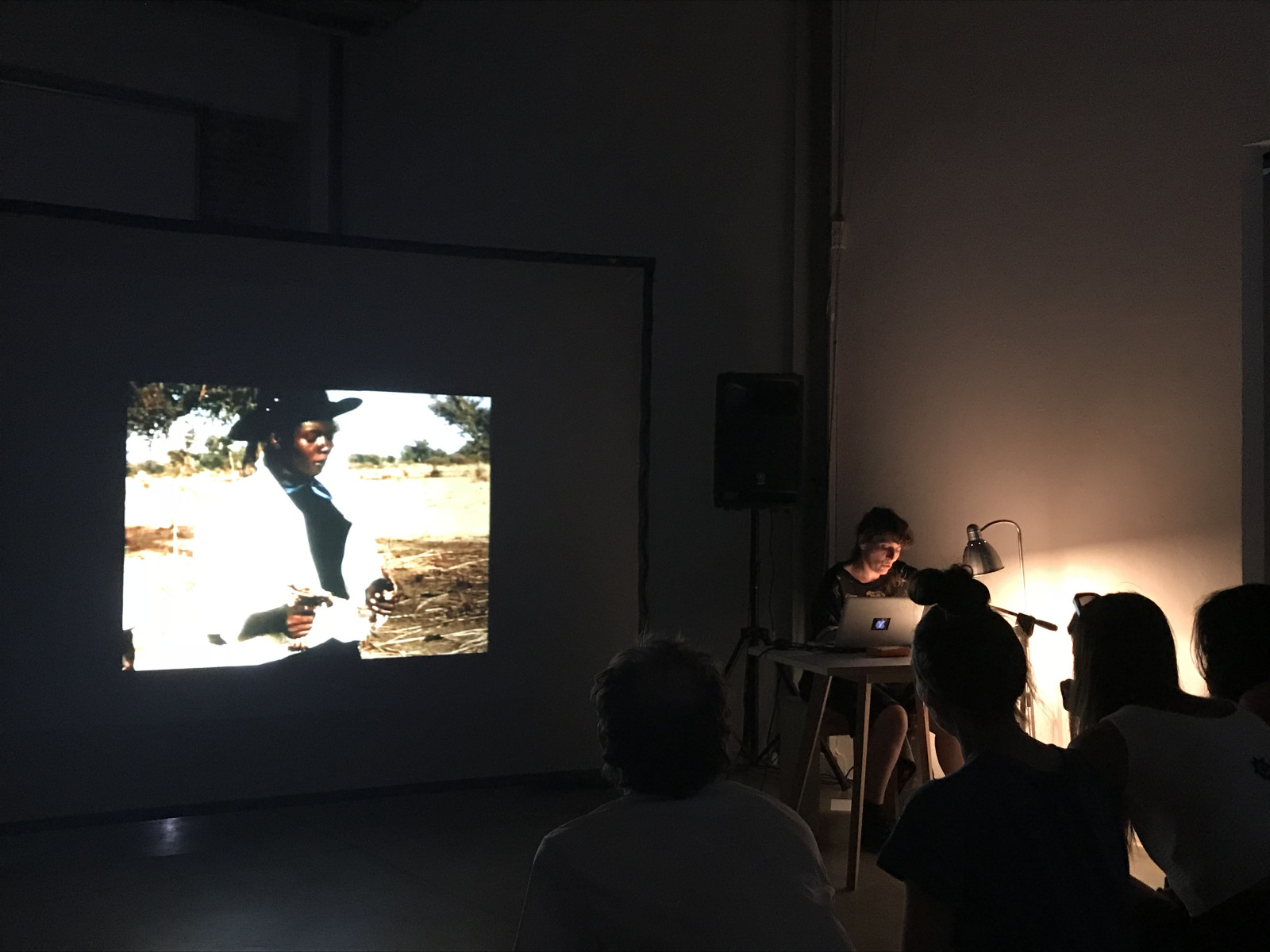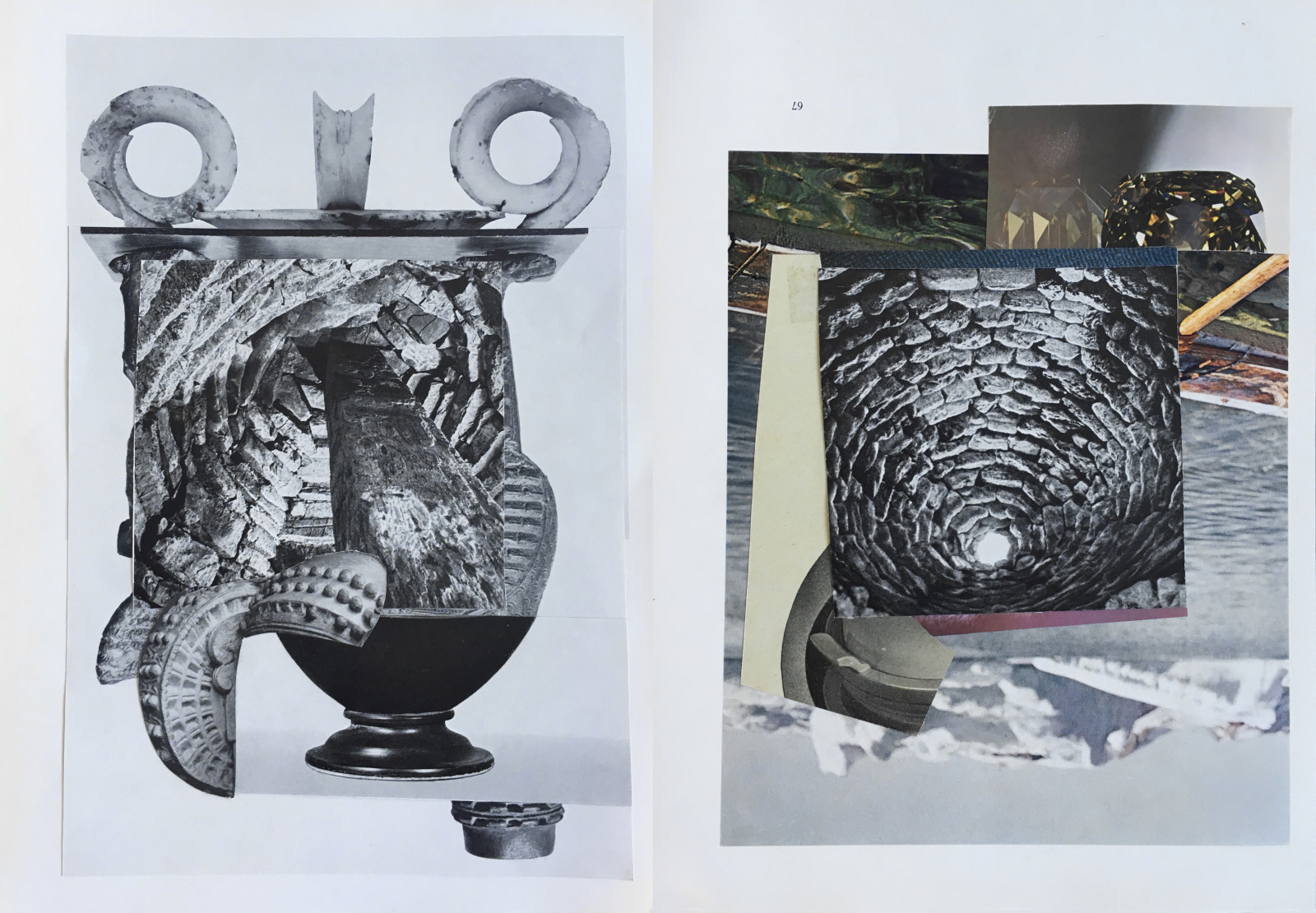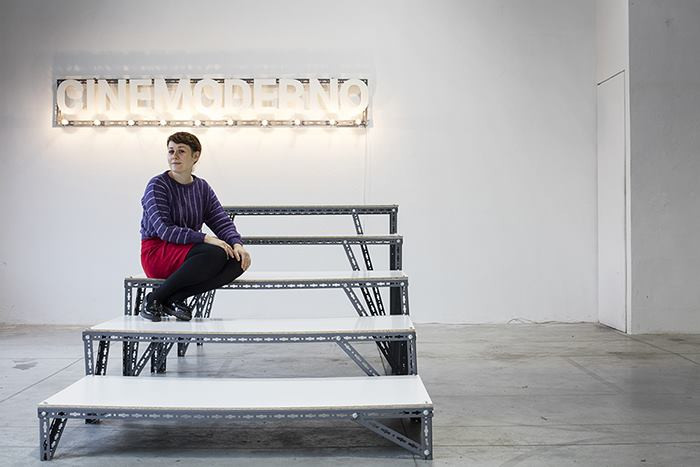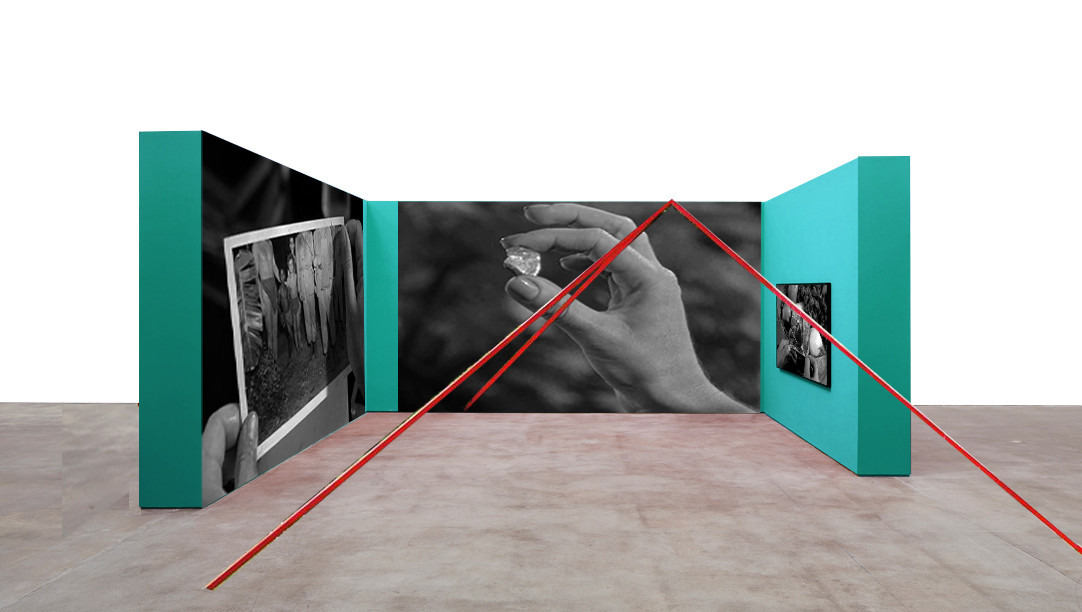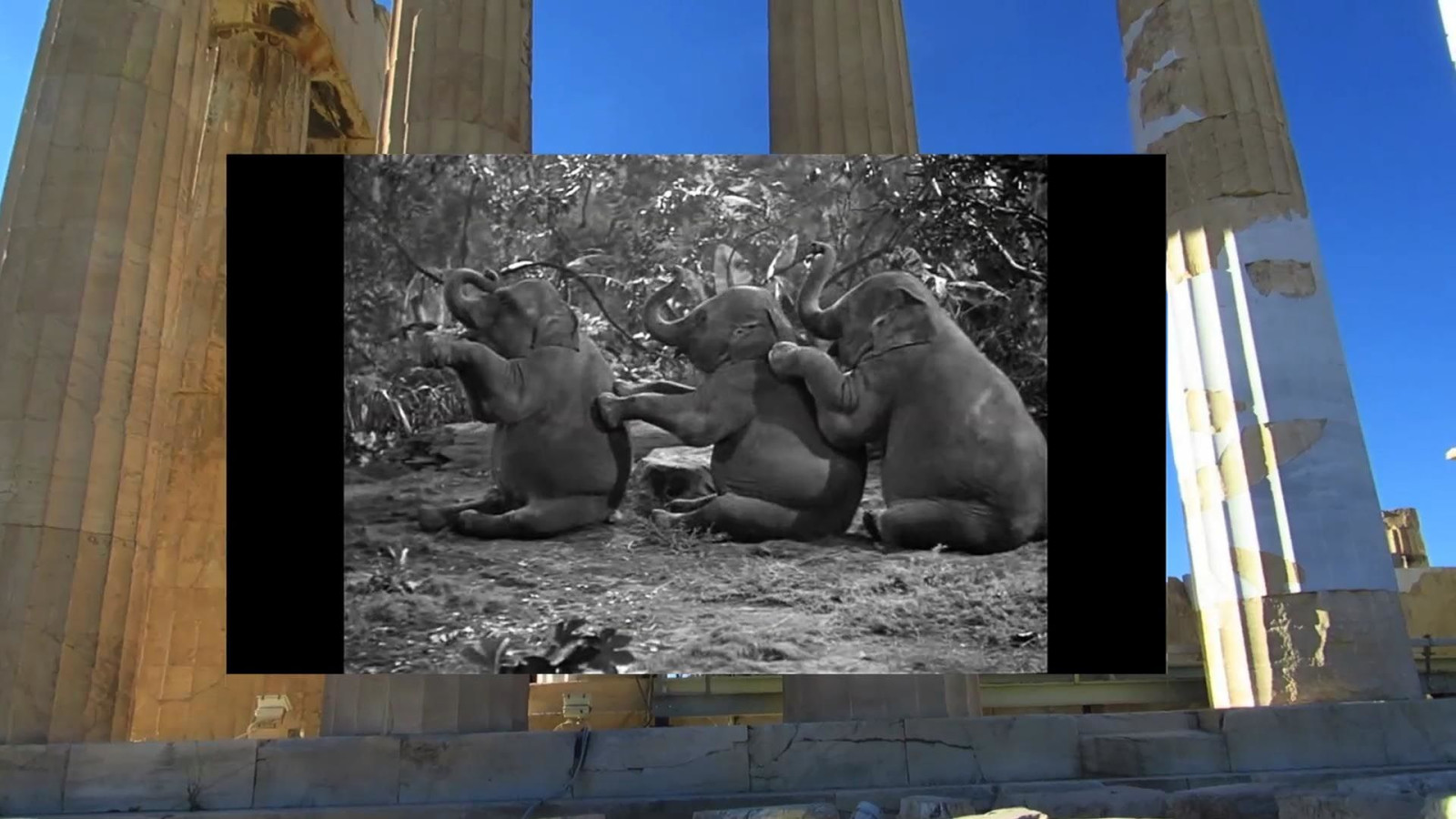CINEMODERNO 2018
A cura di Martina Angelotti
Con Mercedes Azpilicueta, Filipa Cesar & Louis Henderson, Eli Cortiñas
29.05.2018 - 7.07.2018
Giunto alla sua seconda edizione, CINEMODERNO si struttura attorno all’immaginario del video e del suo potenziale performativo.
Il progetto si manifesta sotto forma di festival diluito nell’arco di due mesi, in cui si susseguono artisti ogni due settimane, invitati a presentare una rielaborazione e riformulazione - in chiave performativa - di una ricerca video già avviata.
Già dalla prima edizione - che aveva visto coinvolti gli artisti: Eva e Franco Mattes; Anna Franceschini e Diego Marcon; Teresa Cos; Francesco Fonassi - CINEMODERNO esplora il linguaggio del video in tutte le sue molteplici dimensioni - scultoree, sonore, visive - per indagare forme di interazione fra la narrazione visiva del film e la sua ipertestualità, tra la forma bidimensionale della proiezione e quella tridimensionale della sua “messa in scena”.
CINEMODERNO prende spunto da una prospettiva antropologica, che Rachel O. Moore identifica nel cinema attraverso la definizione di “rituale magico” col potere di ravvivare, guarire e incantare.
Per questa edizione CINEMODERNO si configura attraverso tre interventi live che restituiscono diversi set dello spazio – pensati sia per l’esposizione che per la fruizione - per la durata di due settimane ciascuno.
Gli artisti invitati, provenienti da diverse geografie fisiche e mentali, sono accomunati da aspetti di ricerca incentrati sull’analisi di pratiche performative connesse al cinema o alla sua dimensione rituale, spesso approcciate attraverso tecniche di found-footage e documentaristiche, e che indagano la dimensione dell’”esotico” da prospettive e sguardi geografici molto diversi.
Dalla video performance dell’artista italo argentina Mercedes Azpilicueta (La Facultad, 2018) che investiga attraverso il movimento e il linguaggio sonoro e video, il rapporto fra il corpo femminile e il corpo sociale. La giungla “occidentalizzata” della serie dedicata a Tarzan di Eli Cortiñas, la cui lecture performance svela il processo di ricerca e la relazione fra artista ed etnografo, al potenziale politico restituito in forma live della Op-art di Filipa Cesar & Luis Henderson: un film realizzato con lenti e celluloide fotosensibile al motore di localizzazione del desktop, che passa dalla produzione di materiale delle lenti Fresnel all'invenzione dei sistemi globali di navigazione satellitare (GNSS), strumento che annuncia l'obsolescenza del faro di avvistamento.
Programma
29.05.2018 h 20.00
La facultad,2018
live performance di Mercedes Azpilicueta
set visibile fino al 12 giugno
Una performance in tre atti
un testo per corpo vulnerabile e spazio sconosciuto
un flusso intermittente di voci diverse, clip sonore e immagini proiettate.
La facultad è un termine coniato da Gloria Anzaldúa che si riferisce alla capacità sviluppata da molti sulle terre di confine, che permette di “vedere nei fenomeni di superficie, il significato di realtà più profonde". È un modo di percepire istantaneo, senza un ragionamento consapevole. È una consapevolezza acuta mediata dalla parte della psiche che non parla, che comunica per immagini e simboli, che sono i volti dei sentimenti.
Concept, script & performance: Mercedes Azpilicueta
dramaturgy: Agustina Muñoz
video: Alan Segal
choreography: Juan Pablo Cámara & Madelyn Bullard
13.06.2018 h 19.00
The Opal and the Sunstone, 2017
progetto di Filipa César e Louis Henderson
live e reading con Louis Henderson
set visibile fino al 26 giugno
The Opal and the Sunstone è un’indagine che esplora il modo in cui le tecnologie ottiche hanno trasformato profondamente il modo di leggere, governare e "possedere" visivamente il mondo. Partendo dalle lenti Fresnel di un faro di avvistamento - oggetto creato dall'uomo per far luce sull’ignoto - sino ad arrivare ai sistemi globali di navigazione satellitare GPS, il film muove una critica verso la costruzione occidentale della conoscenza e della comunicazione, basata sulla proiezione della luce.
27.06.2018 h 19.00
All Voodoo Happens at Night, 2018
Lecture Performance
di Eli Cortiñas
set visibile fino al 8 luglio
In All Voodoo Happens at Night Cortiñas esplora la performatività del materiale archivistico che impiega nelle sue installazioni video. Ricollegando questo materiale e diffondendo i contorni in cui le idee di testimonianza e monumento, narrazione e media tecnici si sovrappongono, il montaggio di Cortiñas provoca una confusione del punto(i) di vista nei moderni miti occidentali delle origini. In un momento di iperproduzione di immagini in movimento, i siti archeologici e le riserve naturali rappresentano una fonte di fantasia esauribile di desideri animati da miti primordiali. Attraverso la fantasmagorica capacità trasfigurativa del cinema, la natura nel caso dei film su Tarzan - il cui materiale costituisce il pilastro centrale della lecture di Cortiñas - funziona come un semplice ornamento, che può trasformarsi in una nuova narrativa negoziata con una figura vivente.
Si ringrazia Studio Azzurro, Show Biz Milano ed Elianto Film
ARTISTS BIO
Mercedes Azpilicueta (Buenos Aires, Argentina) is a visual and performance artist from Argentina based in the Netherlands. In 2017 she received the Pernod Ricard Fellowship, Paris and was a resident at the Rijksakademie van beeldende kunsten in Amsterdam in 2015/2016. She has an MFA from the Dutch Art Institute/ArtEZ, Arnhem, and a BFA from the National University of the Arts, Buenos Aires. Exhibitions and performances include, among others, Museion (Bolzano, 2018), MACBA (Barcelona, 2018), D21 Kunstraum (Leipzig 2018), Villa Vassilieff (Paris, 2018), REDCAT Gallery (Los Angeles, 2018), Centro de Arte 2 de Mayo (Móstoles, 2017), Chinese European Art Center (Xiamen, 2017), Onomatopee (Eindhoven, 2016), Zmud Projects (Buenos Aires, 2016), TENT (Rotterdam, 2015), Móvil (Buenos Aires, 2015), Irish Museum of Modern Art (Dublin, 2014), Het Veem Theatre (Amsterdam, 2013), Galata Fotoğrafhanesi Fotoğraf Akademisi (Istanbul, 2013), Raw Material Company (Dakar, 2012) and The Poetry Reading Program, Documenta13 (Kassel, 2012). In 2018 she will present her first major solo exhibition at the Buenos Aires Museum of Modern Art. Mercedes´work is represented by the gallery Zmud Projects in Buenos Aires.
Filipa Cesar & Luis Henderson
Filipa Cesar, born 1975 in Portugal, is an artist and filmmaker who lives and works in Berlin, and studied at the Faculty of Arts in Porto and Lisbon (1996–99), the Academy of Arts in Munich (1999–2000) and MA Art in Context, University of Arts, Berlin (2007). Filipa César has exhibited, among other places, at 8. Istanbul Biennial, 2003; Kunsthalle Wien, 2004; Serralves Museum, 2005; Locarno International Film Festival, 2005; CAG- Contemporary Art Gallery, Vancouver, 2006; Tate Modern, 2007; St. Gallen Museum, 2007; International Triennale of Contemporary Art, Prague, 2008; SF MOMA, San Francisco 2009, 12th Architecture Biennial, Venice, 29th São Paulo Biennial 2010, São Paulo and Manifesta 8, Cartagena.
Louis Henderson is a filmmaker whose works investigate the networked links between colonialism, technology, capitalism and history. His research seeks to formulate an archaeological method within film practice, reflecting on new materialities of the Internet and the possibility for techno-animistic resistance to neocolonialism. In 2015 he was the recipient of the Barbara Aronofsky Latham Award for Emerging Video Artist at the 53rd Ann Arbor Film Festival, USA, and a European Short Film Award – T-Mobile New Horizons International Film Festival, Wroclaw, Poland. Recent exhibitions include Projections: New York Film Festival (2015); The School of Kyiv: Kiev Biennial (2015); Conversations at the Edge 2015: Gene Siskel Film Centre, Chicago; Capture All, Transmediale, Berlin (2015). His work is distributed by Video Data Bank. A graduate of London College of Communication and Le Fresnoy – studio national des arts contemporains, Henderson is currently completing a post-diplôme within an experimental art and research group at the European School of Visual Arts.
Eli Cortinas, born 1979 in Las Palmas de Gran Canaria, Spain, lives and works in Berlin. A large part of Cortiñas‘ practice revolves around the idea of challenging cinematic memory through analysing and re-editing pre-existing footage, or her own material. Disrupting and re-structuring narrative flows, she creates shifts of meaning (No Place Like Home, 2006). This method of editing as writing‘ generates a mixed feeling of both identification and alienation. In her videos, as well as in her collages and object arrangements, Eli Cortiñas creates an ambiguous and affirmative transparency – unveiling the role plays of a generation vaunted in the media as ‘lost’. Eli Cortiñas studied at the Academy of Media Arts Cologne and at the European Film College Ebeltoft, Denmark. Selected solo exhibitions include Always bite the hand that feeds you at Convent Space for Contemporary Art, Ghent (2017), Five Easy Pieces and Some Words of Wisdom at Soy Capitán, Berlin (2015), Awkward Studies and a Decent Take on Serious Matters at Rokeby, London (2013), Love Is Worn Around The Neck, curated by Veit Loers at Kunstraum Innsbruck (2012). Her work was part of several group exhibitions, such as Film Footage Fotografie. Bildnerische Augenblicke mit filmischen Bezügen, Museum for Photographie Braunschweig (2017), 10 Emerging Artists. Contemporary Experimental Films and Video Art from Germany, Goethe Institute Canada (2017), Double Feature, Schirn Kunsthalle, Frankfurt (2017), Les Rencontres Internationales at Centre Pompidou, Paris (2011). Eli Cortiñas has been awarded with grants and fellowships from Berliner Senat (2017), Villa Sträuli (2017), Villa Massimo Rome (2014), Marianna Ingenwerth-Stiftung grant for residency at the Centro de Arte Contemporáneo La Regenta (2013), Shortlist Award for young Film Art, Freunde der Neuen Nationalgalerie und Deutscher Filmakademie (2011), et al.
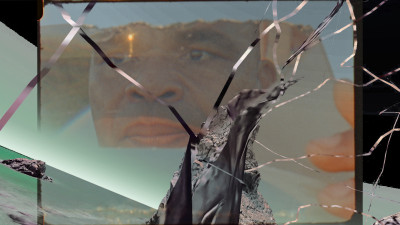
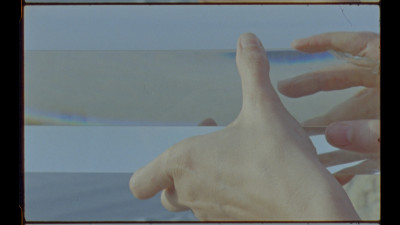
The Sunstone, 2018 - Filipa César e Louis Henderson, Image courtesy of the Artists, Stenar Projects and Spectre Productions
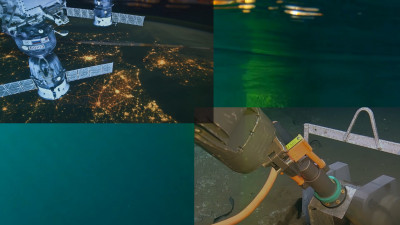
The Sunstone, 2018 - Filipa César e Louis Henderson, Image courtesy of the Artists, Stenar Projects and Spectre Productions
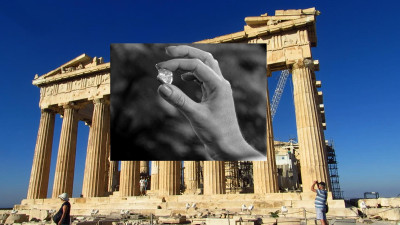
The Most Given of Givens, 3-channel video, 2017, video still, Eli Cortiñas
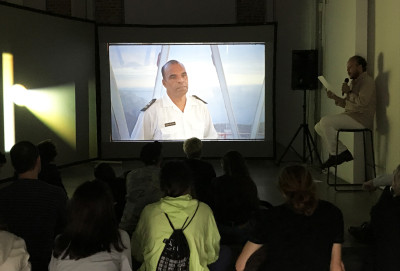
CINEMODERNO 2018 #2 > The Opal and the Sunstone -
Un progetto di Filipa César e Louis Henderson, live e reading di Louis Henderson
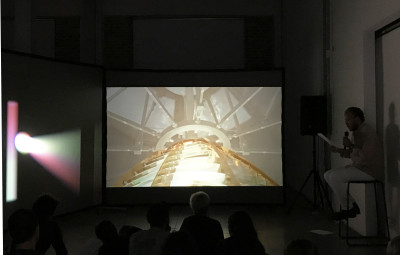
CINEMODERNO 2018 #2 > The Opal and the Sunstone -
Un progetto di Filipa César e Louis Henderson, live e reading di Louis Henderson
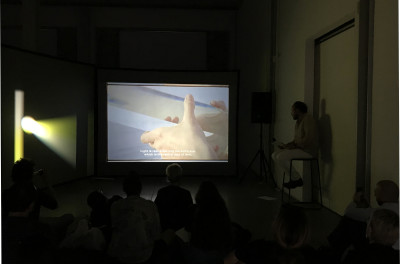
CINEMODERNO 2018 #2 > The Opal and the Sunstone -
Un progetto di Filipa César e Louis Henderson, live e reading di Louis Henderson
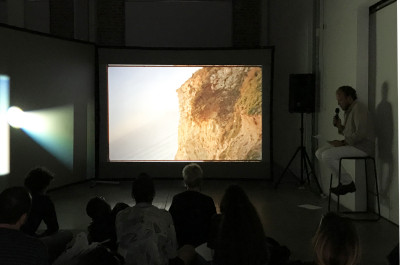
CINEMODERNO 2018 #2 > The Opal and the Sunstone -
Un progetto di Filipa César e Louis Henderson, live e reading di Louis Henderson
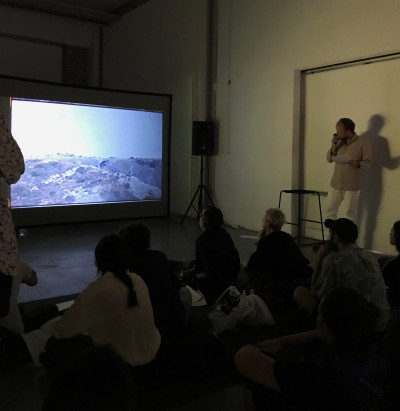
CINEMODERNO 2018 #2 > The Opal and the Sunstone -
Un progetto di Filipa César e Louis Henderson, live e reading di Louis Henderson
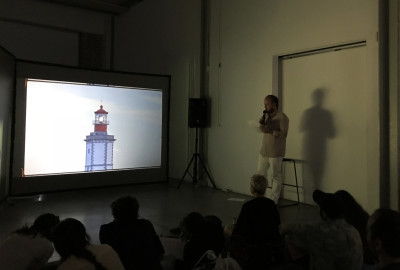
CINEMODERNO 2018 #2 > The Opal and the Sunstone -
Un progetto di Filipa César e Louis Henderson, live e reading di Louis Henderson
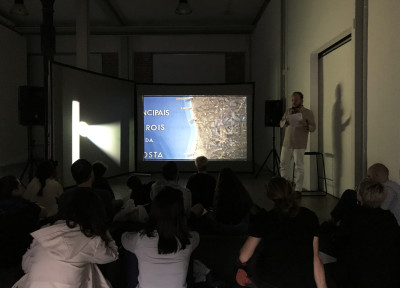
CINEMODERNO 2018 #2 > The Opal and the Sunstone -
Un progetto di Filipa César e Louis Henderson, live e reading di Louis Henderson
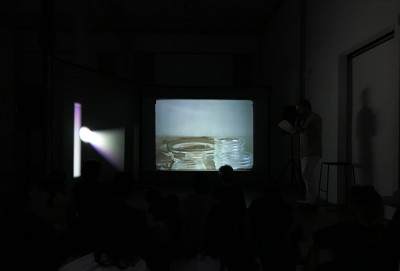
CINEMODERNO 2018 #2 > The Opal and the Sunstone -
Un progetto di Filipa César e Louis Henderson, live e reading di Louis Henderson
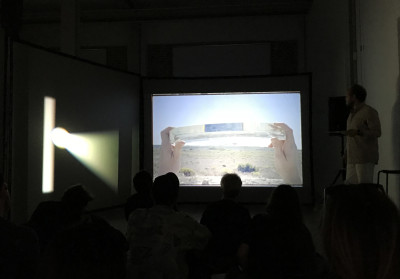
CINEMODERNO 2018 #2 > The Opal and the Sunstone -
Un progetto di Filipa César e Louis Henderson, live e reading di Louis Henderson
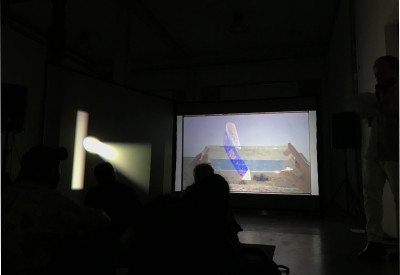
CINEMODERNO 2018 #2 > The Opal and the Sunstone -
Un progetto di Filipa César e Louis Henderson, live e reading di Louis Henderson
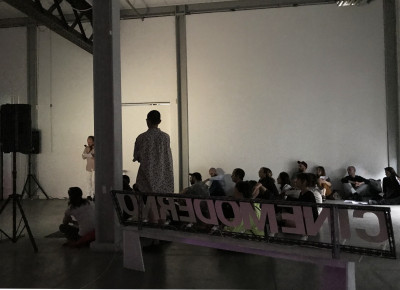
CINEMODERNO 2018 #2 > The Opal and the Sunstone -
Un progetto di Filipa César e Louis Henderson, live e reading di Louis Henderson
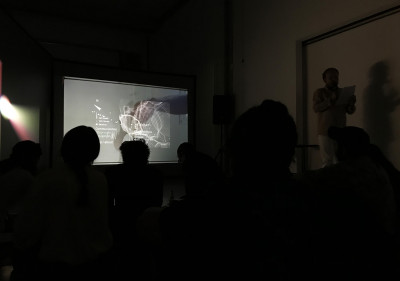
CINEMODERNO 2018 #2 > The Opal and the Sunstone -
Un progetto di Filipa César e Louis Henderson, live e reading di Louis Henderson
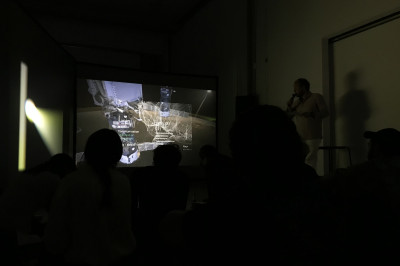
CINEMODERNO 2018 #2 > The Opal and the Sunstone -
Un progetto di Filipa César e Louis Henderson, live e reading di Louis Henderson
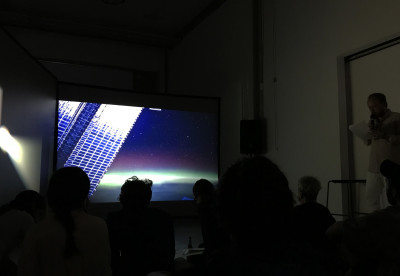
CINEMODERNO 2018 #2 > The Opal and the Sunstone -
Un progetto di Filipa César e Louis Henderson, live e reading di Louis Henderson
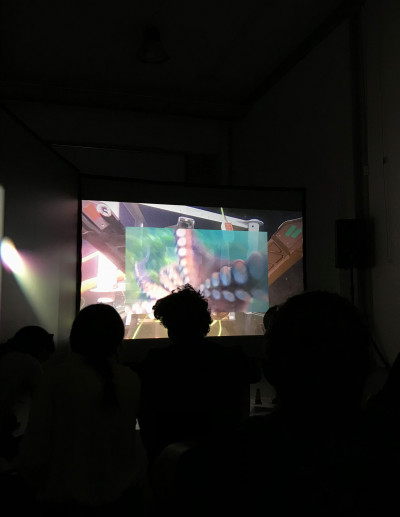
CINEMODERNO 2018 #2 > The Opal and the Sunstone -
Un progetto di Filipa César e Louis Henderson, live e reading di Louis Henderson
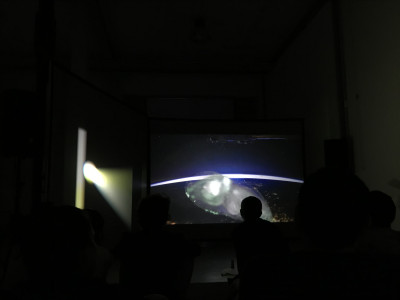
CINEMODERNO 2018 #2 > The Opal and the Sunstone -
Un progetto di Filipa César e Louis Henderson, live e reading di Louis Henderson
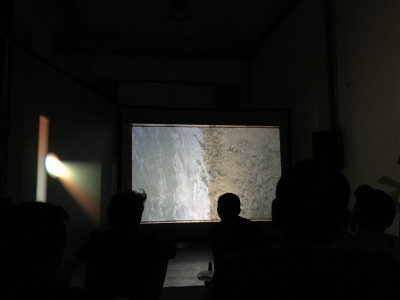
CINEMODERNO 2018 #2 > The Opal and the Sunstone -
Un progetto di Filipa César e Louis Henderson, live e reading di Louis Henderson
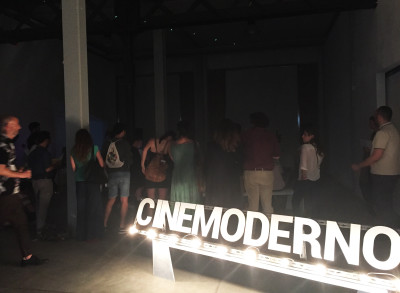
Cinemoderno 2018 #1, La facultad, Mercedes Azpilicueta, performance @ Careof
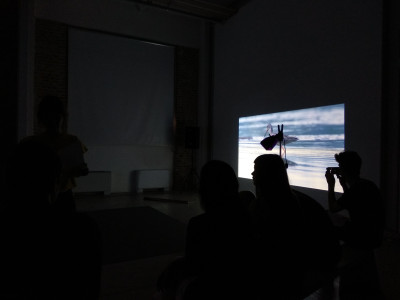
CINEMODERNO 2018 #1 > La facultad, performance di Mercedes Azpilicueta
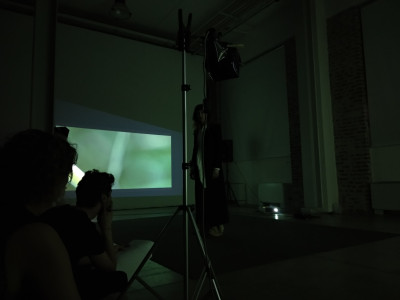
CINEMODERNO 2018 #1 > La facultad, performance di Mercedes Azpilicueta
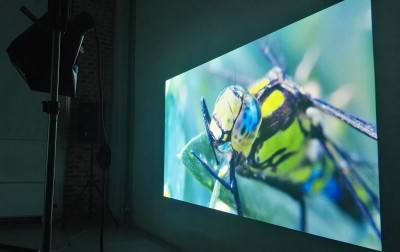
CINEMODERNO 2018 #1 > La facultad, performance di Mercedes Azpilicueta
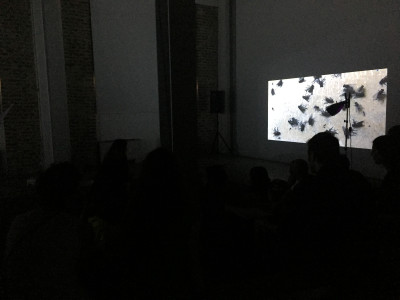
CINEMODERNO 2018 #1 > La facultad, performance di Mercedes Azpilicueta
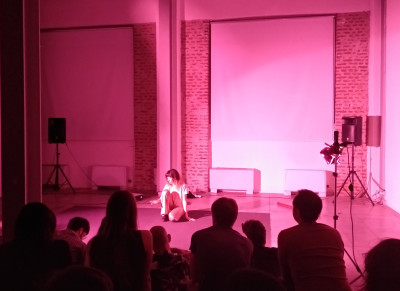
CINEMODERNO 2018 #1 > La facultad, performance di Mercedes Azpilicueta
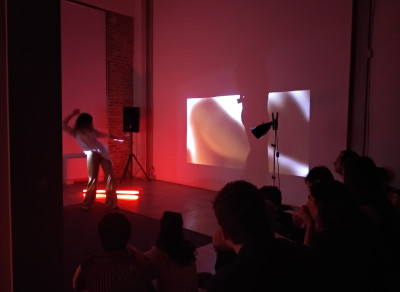
CINEMODERNO 2018 #1 > La facultad, performance di Mercedes Azpilicueta
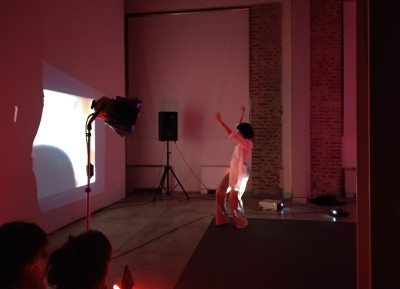
CINEMODERNO 2018 #1 > La facultad, performance di Mercedes Azpilicueta
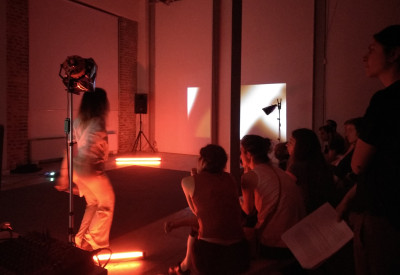
CINEMODERNO 2018 #1 > La facultad, performance di Mercedes Azpilicueta
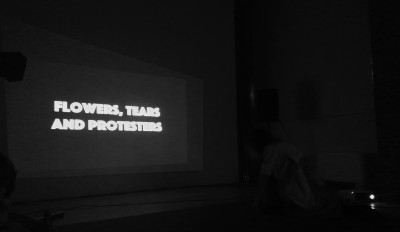
CINEMODERNO 2018 #1 > La facultad, performance di Mercedes Azpilicueta
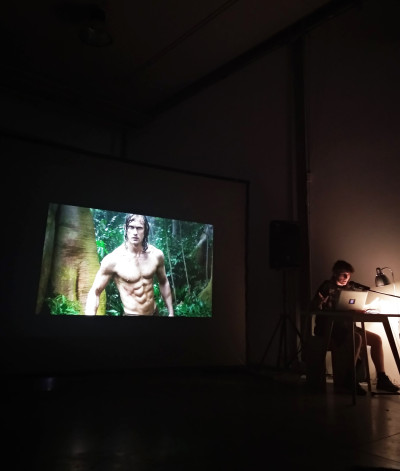
CINEMODERNO 2018 #3 > All Voodoo happens at night, lecture by Eli Cortiñas, live @Careof
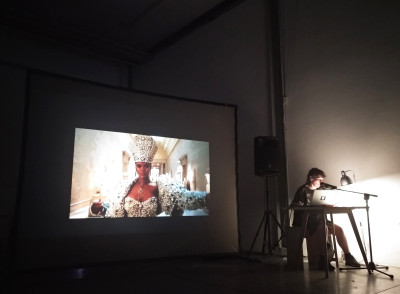

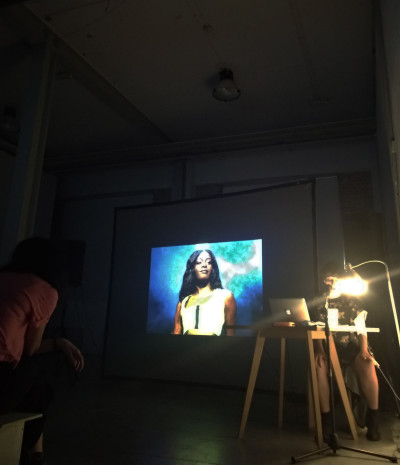
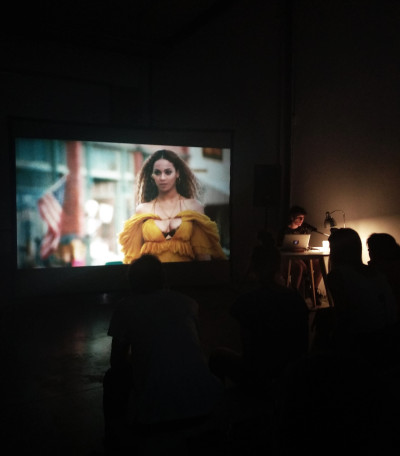
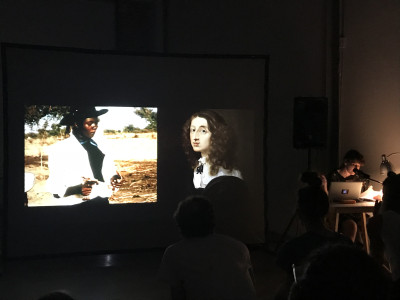
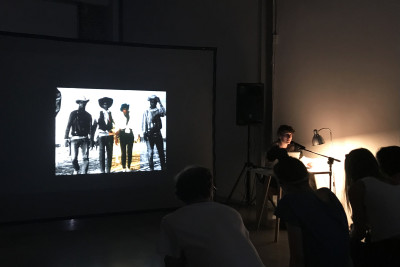
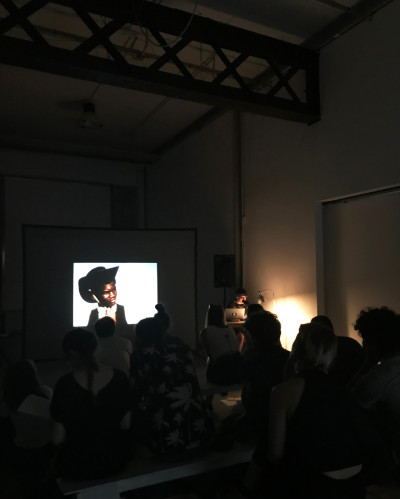
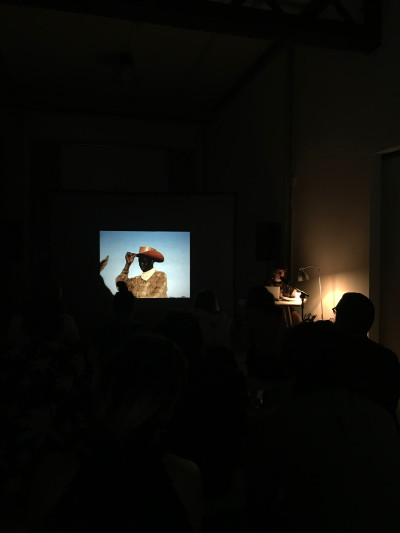
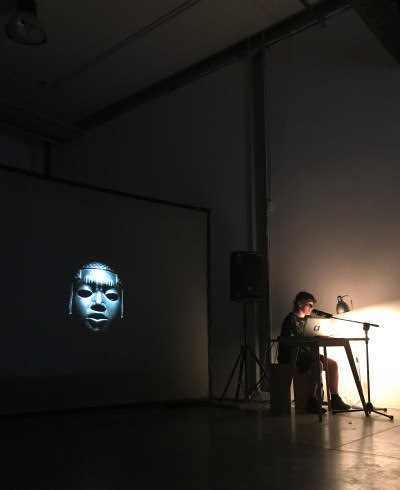
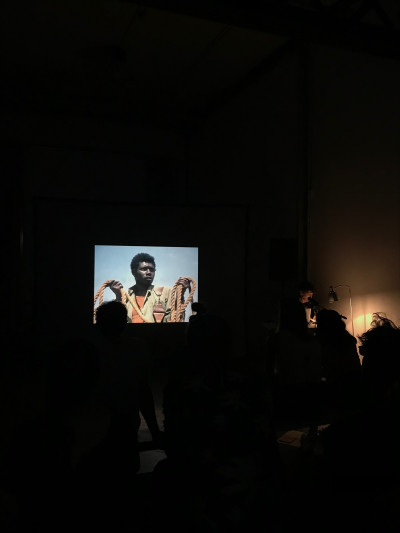
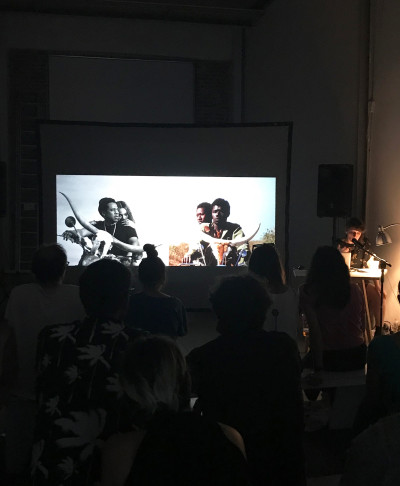
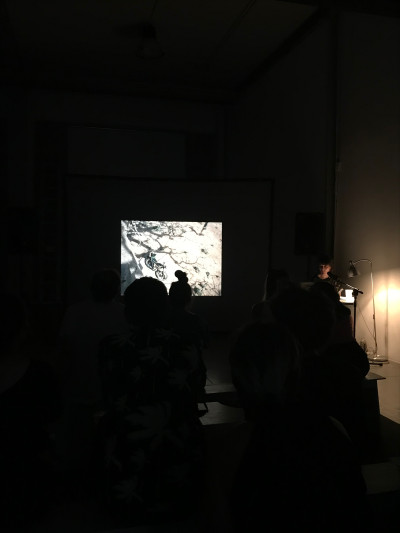
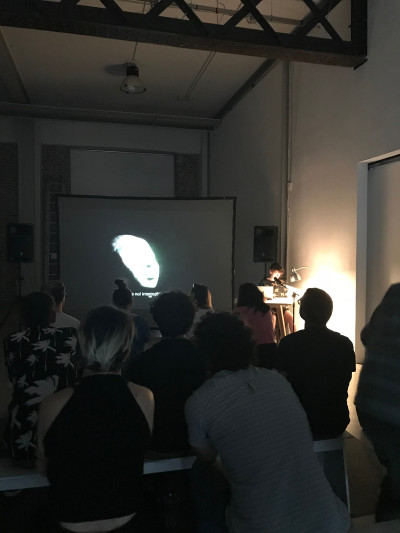
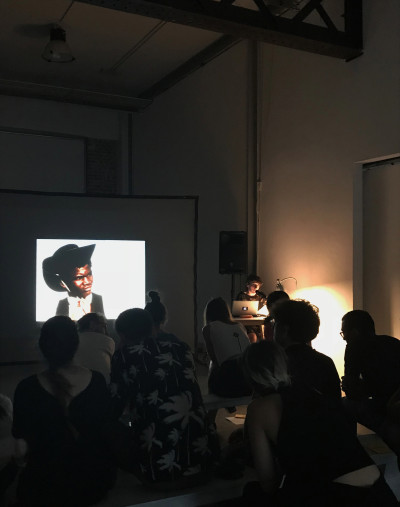
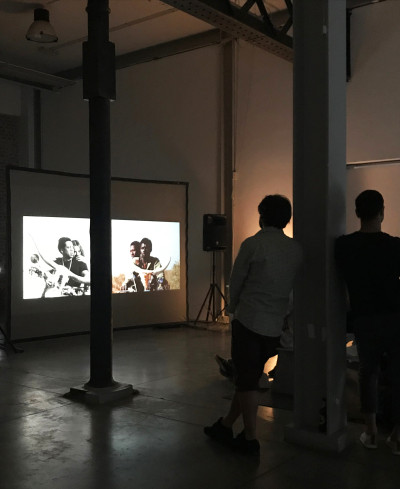
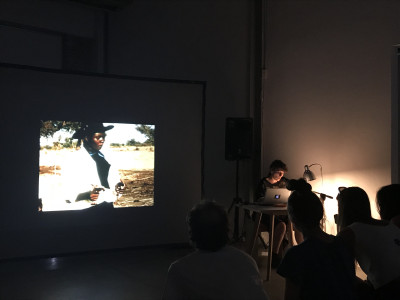
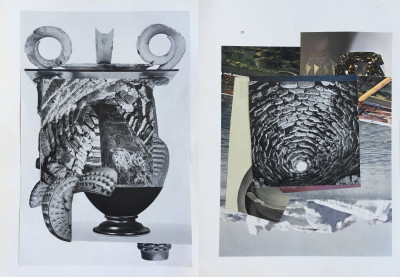
From An Ethnographic Museum Revisited, 2016- ongoing, paper collage series, Eli Cortiñas
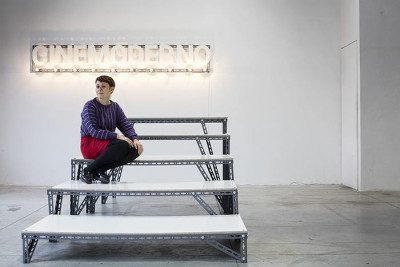
ph: Francesco Stelitano, Installation view, CINEMODERNO 2016, set by Parasite 2.0
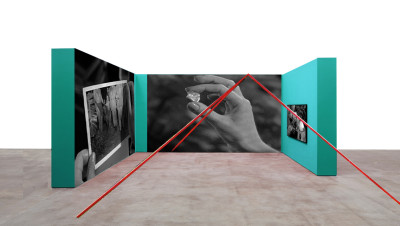
All Voodoo Happens At Night!, 2018, digital collage, Eli Cortiñas
